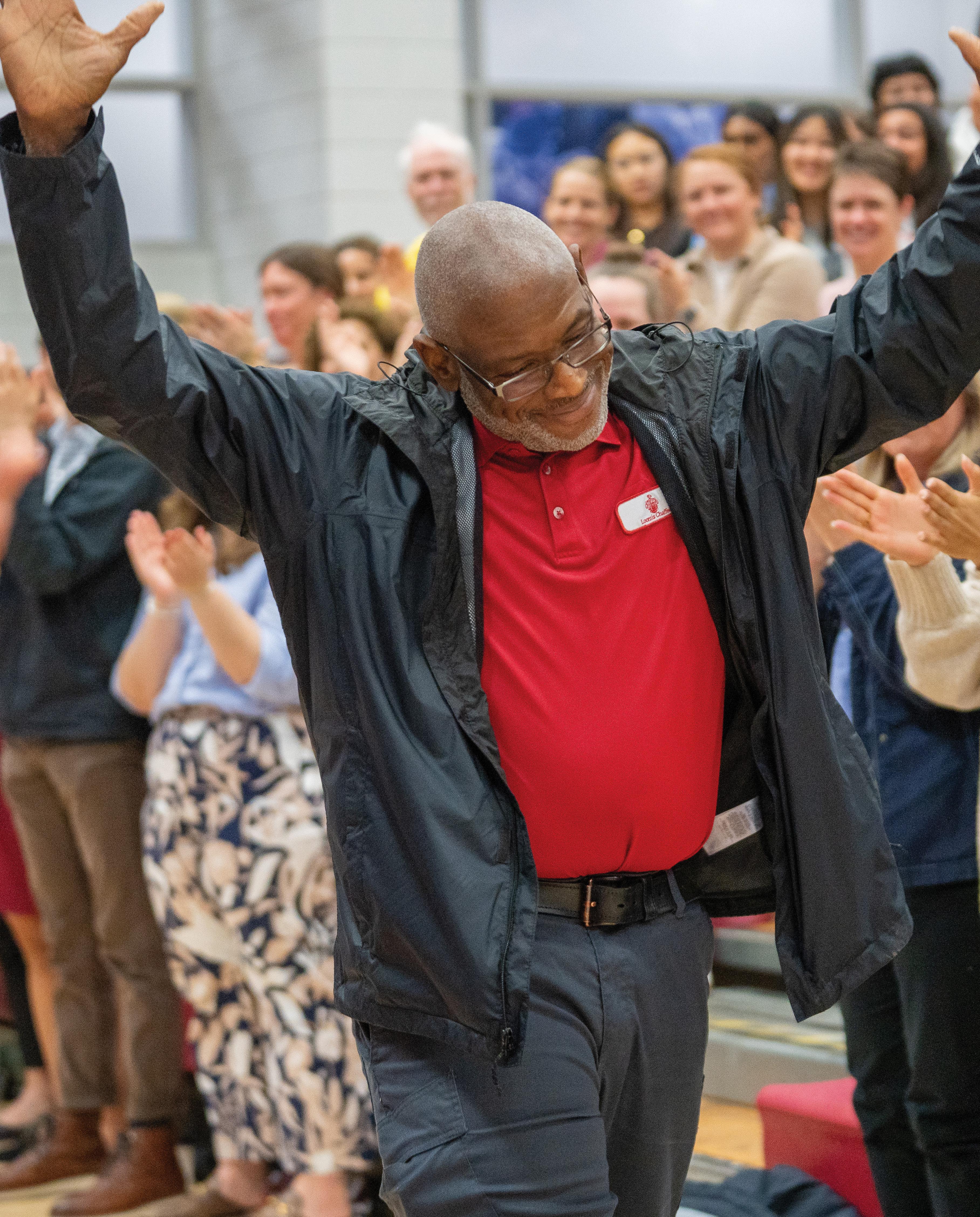






At the final whistle in the Founders League boys lacrosse championship game, the Pelicans sprint onto the field to celebrate their victory. The team, which defeated Choate 8-7 in the May 21 game to win the league title for the second year in a row, ended the season ranked No. 1 among all high school teams in the country, according to Inside Lacrosse magazine.


Cover: Housekeeper Chris Beckford was recognized for 40 years of service to Loomis Chaffee at an all-school meeting in May, prompting a raucous ovation from the capacity crowd of students, faculty, and staff in the Olcott Center. “I’m still blown away,” Chris said a few days later. “I’m a humble guy, and to be so warmly recognized … it was awesome.” What began as a summer job for Chris in 1985 turned into a job for life. His father, Oswald Beckford, also worked at the school until retiring in the early 2000s. Ozzie passed away in July at the age of 96.

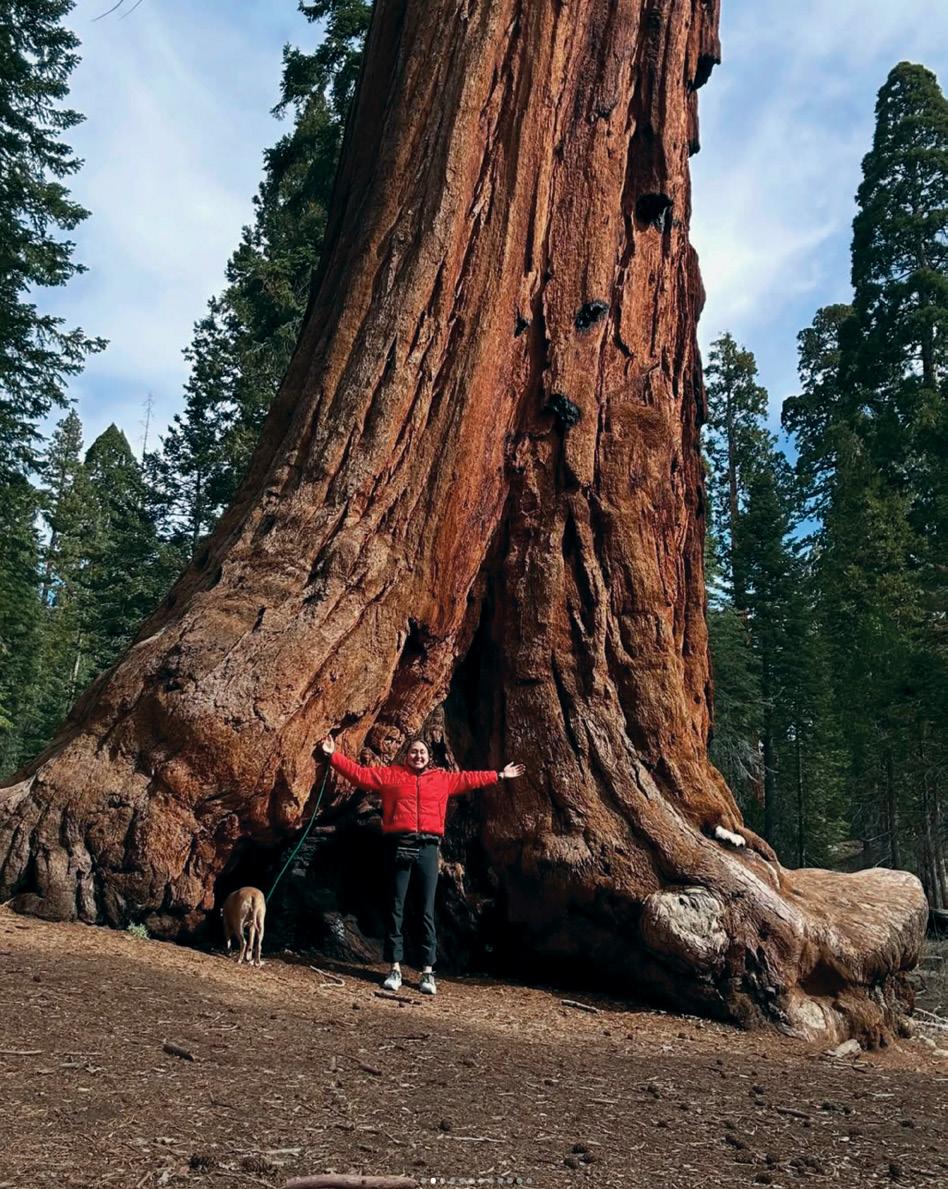

Introducing eight of Loomis Chaffee’s newest alumni — members of the curious, insightful, talented, community-minded, creative, determined, and tireless Class of 2025.
For more than a century, Loomis, Chaffee, and Loomis Chaffee yearbooks have reflected the times through the eyes of students.
Science and math teacher Liz Bucceri ’07 chronicles her two-month sabbatical road trip to national and state parks, forests, seashores, and other attractions around the United States this spring.
EDITORIAL & DESIGN TEAM
Lynn A. Petrillo ’86
Director of Strategic Communications & Marketing
Becky Purdy
Managing Editor
Kelley Albert
Senior Graphic Designer
Jeff Otterbein
Obituaries Editor
CONTRIBUTORS
Jeff Otterbein
Paul Thompson
Deidre Swords
Paige Abrams
Lisa Salinetti Ross
Stephanie Schilke
Heidi E.V. McCann ’93
Chelsea Stuart
PHOTOGRAPHY
Megan Du Plessis
Cloe Poisson
Catherine Johanna Photography
Liz Bucceri ’07
Jessica Ravenelle
Makhala Huggins
Defining Studios
Kelley Albert
Becky Purdy
Mary Coleman Forrester
Jeff Otterbein
John Groo
Anna Vdovenko
Stan Godlewski
Loomis Chaffee Archives
Peter Kagan ’75
SUBMISSION/STORIES & NEWS
School community members may contribute items of interest to:
Loomis Chaffee Editors
The Loomis Chaffee School • 4 Batchelder Rd • Windsor, CT 06095
860.687.6811 • magazine@loomis.org
Facebook (@loomischaffee)
X (@loomischaffee)
Instagram (@loomischaffee)
Linkedin (The Loomis Chaffee School)
Visit Loomis Chaffee online at www.loomischaffee.org for the latest school news, sports scores, and galleries of recent photos. You also will find direct links to all of our social networking communities. For an online version of the magazine, go to www.loomischaffee.org/magazine.
Printed at Lane Press, Burlington, VT
Printed on Sterling Ultra Matte
This summer on campus, we are taking a break from major construction and instead focusing on some smaller projects. All three spaces being built or reimagined over the summer are designed to enhance our community spaces. Reed Harman ’64 is supporting the construction of a beautiful patio space behind Harman Hall, overlooking the Meadows. The SNUG is getting reconfigured and refurnished, and the Athletic Center is being updated with new equipment, furniture, and branding. We envision that all three spaces will inspire small gatherings of students and community members, places where informal meetings generate a more cohesive school culture.
In my earliest introduction to Loomis Chaffee, the word “confluence” strongly resonated with me — both in the literal description of the location of our campus relative to the Farmington and Connecticut rivers, but also in the desire to build and sustain a dynamic and diverse community. The confluence of the two rivers that surround our campus can, at times, have immense power as the waters rise and make our campus a literal island. That gathering of strength and the point of connection is an apt metaphor for the transformative work of schools.

We will work to develop more opportunities for students to engage each other, and their teachers, in civil discourse, where they listen to each other with open and curious minds.
Throughout the strategic planning process, which we completed in July, we focused on gathering as many ideas and as much feedback as possible from our various constituencies. We surveyed all members of the Loomis Chaffee community, past and
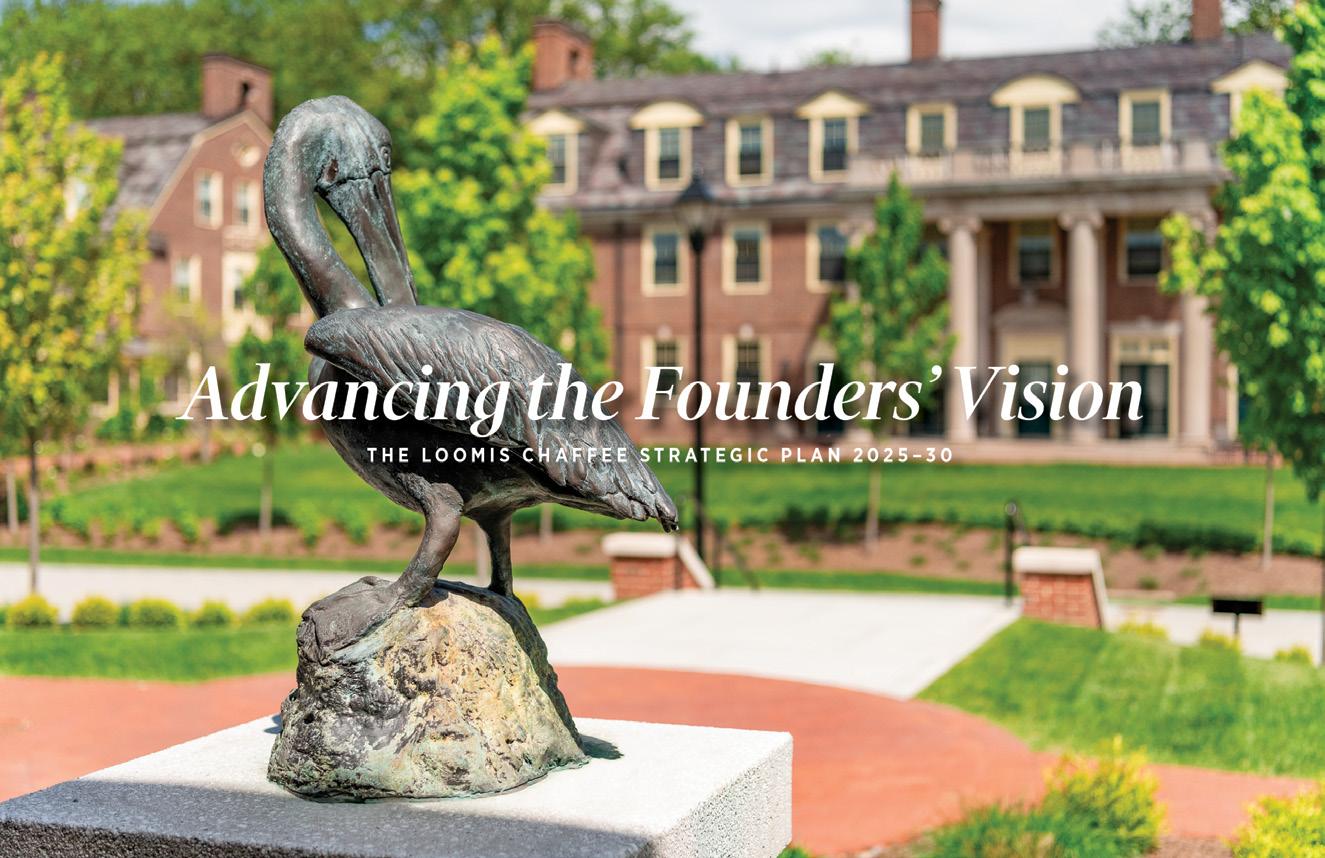

present, and held regular focus group sessions that helped the plan to evolve. The process was intentionally collaborative, weaving together various perspectives and diversity of thought, to create a plan that would reflect all of these viewpoints and dreams. It is no surprise, then, that the plan articulates a vision for the school that is reflective of that process.
In each category of the strategic plan — our people, our program, and our place — we emphasize the importance of working and living at a school that embraces and celebrates these collective and collaborative ideals. We articulate the goal of recruiting the most talented and dedicated faculty, staff, and student body as well as doing the work to make sure that those community members, from diverse backgrounds and perspectives, feel that they belong and that their voices matter. We also strive to create a more collaborative learning and teaching environment, understanding that our work is better when diverse perspectives are brought to the fore and our ideas are challenged and refined based on feedback and constructive dialogue. We will work to develop more opportunities for students to engage each other, and their teachers, in civil discourse, where they listen to each other with open and curious minds. And we wish to engage more with our alumni and local communities so that their voices and perspectives can enhance our work on campus.
It is the confluence of various voices and ideas that will create a dynamic and transformative learning environment. Hopefully, our new community spaces will provide casual opportunities for community members to share stories and build connections, just as we do in the classrooms, dormitories, stages, and athletic arenas. Learning and growing happen in relationship, where our ideas can be challenged and curiosity ignited.
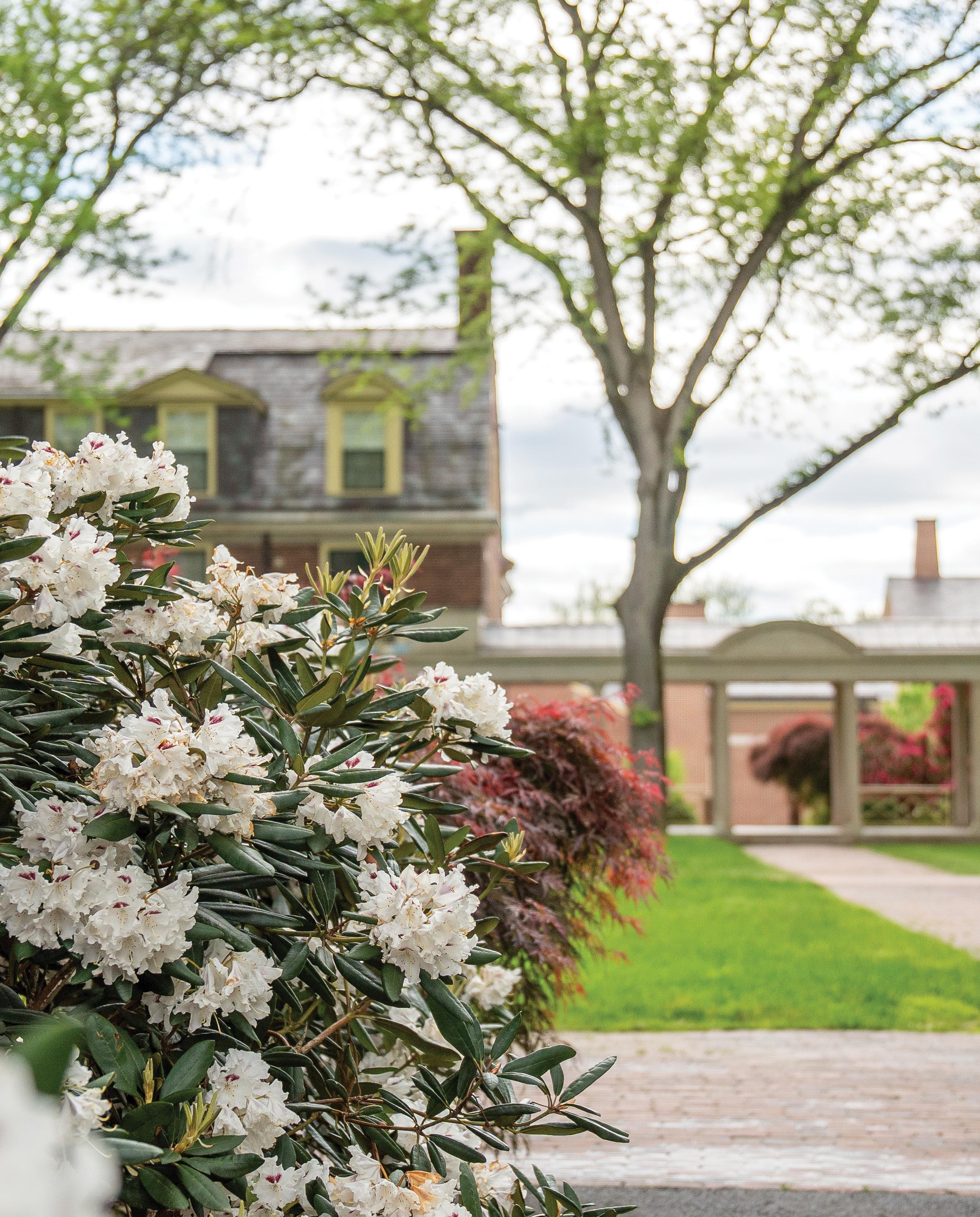
Senior Class Speaker Aveed Shrestha told the crowd gathered for Loomis Chaffee’s 109th Commencement in May that he came to the school as a “small, skinny, overly cocky freshman, but then I was immediately humbled by my very first Algebra II quiz.”
“But,” he continued, “that’s the beauty of Loomis. Whether you have been here one year or four, this school humbles you in all the right ways while expanding your sense of what’s possible.”
What’s possible was represented by Scott Havens ’91, who 34 years after graduating was the Commencement speaker. He has held multiple top positions in the media world and most recently was president of business operations for the New York Mets. Scott also is a Loomis Chaffee Trustee and, as he said, most importantly a proud dad. His son, Tommy, was graduating. His daughters, Elizabeth and Catherine, are rising juniors. He had family in the audience, including his father, Sam Havens ’61. “To stand here ... is an honor of a lifetime,” Scott said.
It is not an honor that he could have envisioned when he graduated, Scott said.
“Impossible is a word you hear a lot,” he said. “Sometimes from others, sometimes from that little voice in your head. It can be a defeating word. But over time I have come to see it differently — not as a wall but as a challenge. A dare. Over time I’ve developed a few principles to help me overcome things that feel or seem impossible.”

He went on to talk to the 195 seniors about those principles.
Work hard: Scott said it took him a while to embrace this principle, but once he committed to working hard, he began to achieve his goals.
Play hard: Creative ideas can come from many places outside of work, from life, travel, friendships, and talking with people who are different from you, he said.

Be kind: “Kindness doesn’t cost much — but it pays back in trust, loyalty, and long-term success,” he said.
Show up: He credited his wife, Jessica, with this addition to the list. Be present, he said, for friends, for family, and for your community.
Pay attention: Listen and learn from those around you, he said, citing faculty members from his Loomis days. “You never know when the lesson is coming — so pay attention.”

Don’t be stupid: “Don’t make permanent choices out of temporary emotions.”
And, finally, ne cede malis, the Loomis Chaffee motto, “yield not to misfortune.”
Head of School Jody Reilly Soja sent the graduates off with a farewell address as she concluded her first year at the school’s helm, saying that whatever the graduates do and wherever they go, they have roots at Loomis Chaffee.
“We hope that provides you with a sense of comfort and connection to a community that loves and supports you,” Jody said. “I hope that your understanding of our history, and your place in it, also offers a grounding and calm that will provide strength and resilience.”
Aveed said he had grown in many ways over the last four years. He used the word “time” as a thread throughout his address, first invoking an exhortation frequently heard from his mother: “Don’t waste time.”
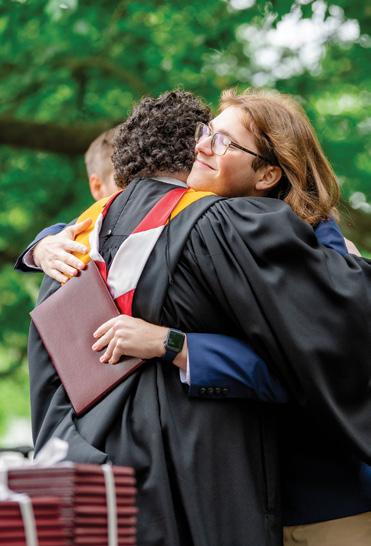
Yet, said Aveed, what is a waste of time? Sitting in the quad or dining hall with friends “debating the most trivial things” or texting someone late at night “about everything and nothing at the same time?” Not a waste, he concluded. These little moments stick in the mind much longer than a test score.
“Better late than never” was another expression he invoked. “Sometimes this
The Loomis Family Prize: Guo “Toby” Chen
The Charles Henry and Mary Chaffee Willcox Prize: Kenneth Lee
The Ammidon Prize: Izzy Heflin
The Florence E. Sellers Prize: Katie Sigrist
The Jennie Loomis Prize: Iris Sande
The Batchelder Prize: Sara Feged
Sellers Faculty Prizes: Saul Lawrence, Christine Wu, Sydney Hallowell, Eli Krasnoff
saying is an excuse for poor timing and bad planning,” he said. “However, there can be a sense of accomplishment and bravery that comes from this phrase.” So what, he said, if it took two months to talk to a friend about an issue or a few years to make new friends? There are times when late truly is better than never.
“Time flies when you’re having fun” brought Aveed to what he called his parting advice. He urged his peers to use their time wisely and do what they love. “Be brave, inventive, and be relentlessly yourself. Because no matter what you do, time will fly. Just make sure it takes you somewhere you want to be.”
Front: Seniors Christine Wu, Sydney Hallowell, Katie Sigrist, Eli Krasnoff, Kenneth Lee, Sara Feged, Toby Chen, Saul Lawrence, Izzy Heflin, and Iris Sande. Back: Trustee Marc Rubinstein ’82; Dean of Faculty Andrew Matlack; Trustee Fridolf Hanson ’85; Dean of Academics and Curriculum Tim Lawrence; Trustee Martin Vulliez ’90; Commencement Speaker and Trustee Scott Havens ’91; Head of School Jody Reilly Soja; Trustees Jonathan Kelly ’81, David Rogan ’76, Harvey Struthers ’60, and Katherine Ballard; Religious Life Coordinator Ryan Heckman; Trustee Jim Higgins ’92; and Chair of the Board of Trustees Duncan MacLean ’90

The Island hummed with activity, conversation, and fond memories on the first weekend in June as alumni in classes ending in 0s and 5s, as well as graduates of more than 50 years, gathered for Reunion Weekend. Amidst the many highlights, a warm sense of communion and catching up pervaded the campus.
In the bookstore, a popular place for reunion-goers looking for swag, a 2015 graduate talked about friendships maintained. A 1965 graduate did the same as he stood with four classmates. They may have graduated 50 years apart, but the sense of community remains the same.
“The campus is much bigger,” said Bruce Hamilton ’65, “but it’s still the same place.”
Rosie Carter ’15 grew up outside of London, where she now works and lives. She had been back to the Island once, in 2017, for the graduation of a friend she had met in art class when they both were students. “We bonded and we’re still friends now, and I’m still friends with a lot of people from Loomis,” Rosie said.
She talked about her favorite spots on campus: “Sitting and looking out over the playing fields. That was beautiful. And I did track and field, so the track was a great spot because of the community. I went for a run on the track this morning, which was really nice, nostalgic.”
In the Norris Ely Orchard Theater, Head of School Jody Reilly Soja spoke with alumni.
One of the topics: community. She told alumni about some new gatherings this year — monthly Chapel Talks, followed by dessert at the Head’s House; Student Meditations at all-school meetings; and dorm dinners at the Head’s House.
In preparation for the dinners, Jody asked students three questions: Where are you from? What are your favorite movies of all time? And if you had to sing karaoke, which song would it be? “I didn’t know who a lot of the artists were or the songs,” she said with a laugh, “but all that inspired other activities.”

One girl’s favorite movie was The Princess Bride, a film near and dear to Jody, too. Next thing you know, there’s a dorm movie night. “Jen Solomon, the dorm head in Richmond, and I were saying it was more fun to watch the girls watch the movies than to watch the movie itself,” Jody said.
Plans are under way to continue building the sense of community next year, including the return of occasional community dinners and upgrades to the SNUG, whose location has changed over the years but which always has been a place to hang out, relax, and enjoy shared experiences. A place to belong.

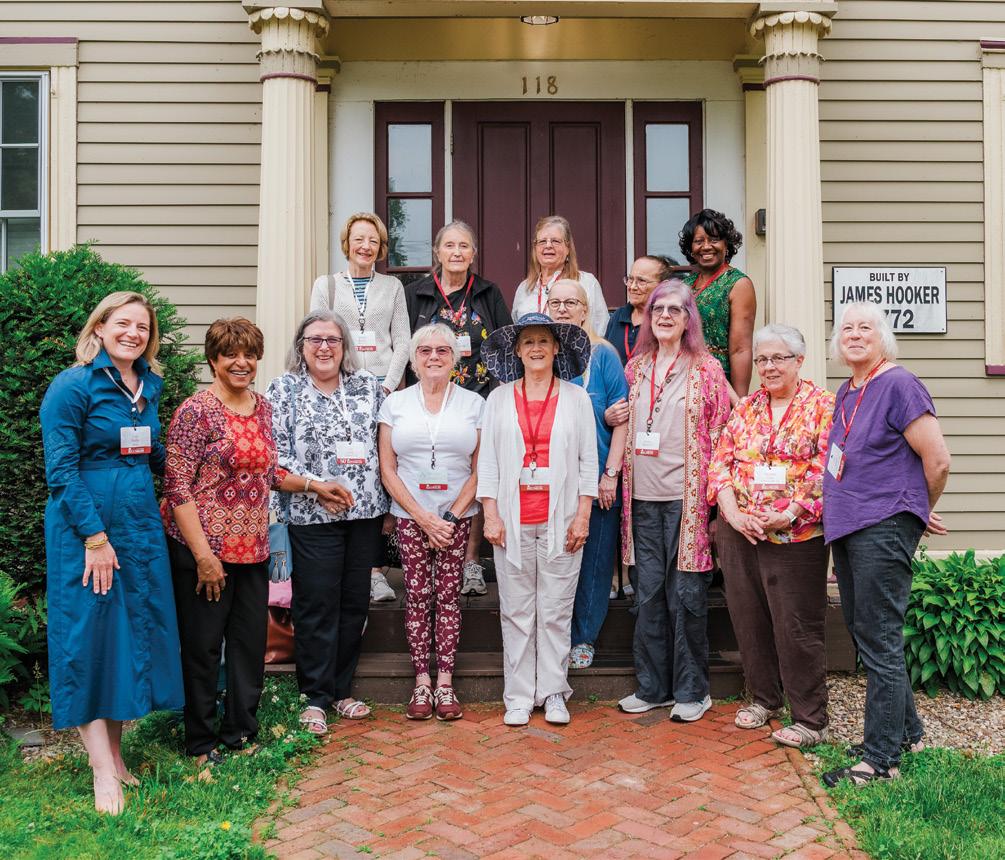
Fun & Games highlights: Alumni golf, self-guided cupola tours, student-led walking tours of campus, all-campus welcome dinner, Chaffee Breakfast, “Fun in the PHI,” Mercy Gallery art exhibit, “Voyage Through the Cosmos” in O’Brien Planetarium, food truck fair, “Robotics for Kids,” mini-golf, face-painting, trivia, all-class evening of music and dancing

Four students talked about their Loomis Chaffee experiences during a presentation by the Center for Diversity, Equity & Inclusion. Belonging was a prominent theme. A student from Kenya talked about sharing and embracing her culture and learning about other cultures. Another student who has never been far from his home in Connecticut

said that, simply by being on campus, he experienced different parts of the world through others. Yet another student described becoming more empathetic and “opening myself up to people I normally would not talk to. ... If you open up, others will open up.” A fourth student described hanging out in the Commons in Chaffee Hall, a space that became a home away from home.
Fifth Reunion celebrants, the Class of 2020, marched at the end of the alumni parade on Saturday as rain started to fall. That was a minor inconvenience, though, compared to when COVID-19 hit the world, preventing the class from being together for senior spring and its traditions.
“We left for spring break, and it just happened quickly, that spring break would be indefinite,” said one class member. “It was surreal at the time, and then it was sad. We did a lot of crying on FaceTime.”
Attendees: About 700
States: Alumni came from all over the United States, including California, Colorado, Alabama, Illinois, Louisiana, Idaho, Texas, and Georgia.
Countries: Alumni came from as far away as Hong Kong, Vietnam, and England.
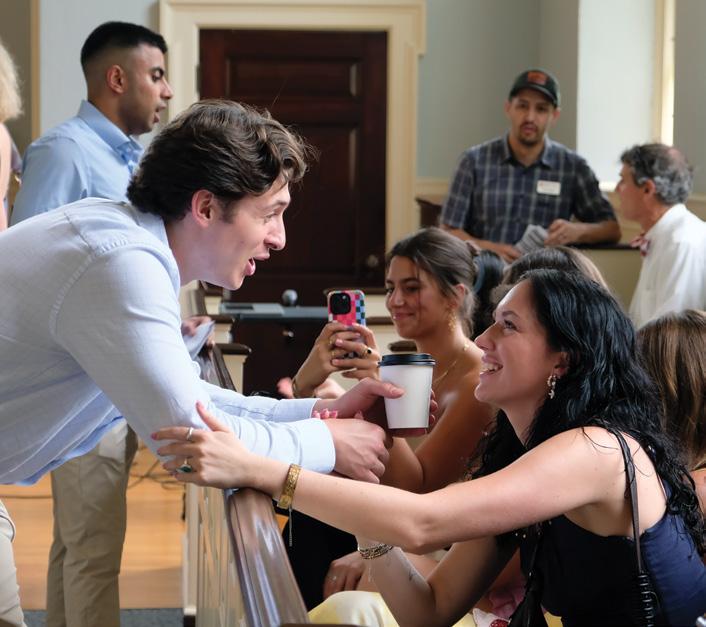
Class of 2020: About 40 attended their reunion, which included a Class Night in the chapel. The pandemic prevented the class from spending senior spring on campus.
The Class of 2020 did get to enjoy a Class Night during Reunion Weekend. Fred Seebeck, who taught for 37 years on the Island and retired the same spring that the class graduated, addressed the class in the chapel, as did Class Speaker Ryan Jones. There was a slideshow set to music followed by a champagne toast given by Dean of Academics and Curriculum Tim Lawrence.
Those who had never seen the Pearse Hub for Innovation (PHI) in the Scanlan Campus Center had to acclimate themselves first. What used to be where I am standing? The amphitheater, said Director of Innovation Scott McClintic ’82, who has taught at Loomis for more than 30 years and knew

many of those who drifted through the PHI. A young girl stood over a laser printer as a drawing of her dog and her signature printed on a panel that would become part of a pencil box. Her mother was celebrating her 25th Reunion and had come from outside of Boston, Massachusetts. She said she wanted to share this piece of her history — her time on the Island — with her family. In another corner, kids were learning about robotics. Outside in Grubbs Quadrangle, children played mini-golf and lined up for face-painting.
In a session called “Loomis and the Age of ChatGPT,” Director of Educational and Administrative AI Initiatives Matt Johnson told the crowd that the school is navigating the world of Artificial Intelligence (AI) with curiosity, not certainty, while keeping the school’s values and mission in mind. Matt mentioned We’re Going on a Bear Hunt, a favorite book of his young daughter. The book includes the lines: “Uh-oh. A river. A deep cold river. We can’t go over it. We can’t go under it. Oh no. We’ve got to go through it.” Applying that philosophy to AI, Matt said, “How do we go through it? We do what we always do. We teach the students how to live in this world.”
Loomis Chaffee has been on the forefront of AI among independent schools and hosted its third AI symposium a few days before Reunion Weekend.
The most meaningful highlights of Reunion Weekend, of course, were the hundreds, perhaps thousands, of moments of greeting, hugs, and recognition between classmates who had not seen each other in five, 20, 50 years. The settling into still-familiar friendships and rediscovering connections. The laughter. The sharing and the listening. The reminiscences and the new memories. And alas, the farewells until next time.
Programming highlights: Head of School Address, Loomis Chaffee in the Age of ChatGPT, Strategic Planning Update, The State of Sustainability at LC, Update from the Center for Diversity, Equity & Inclusion
Loomis Chaffee honored three giants of the school’s last 50 years in May, with an event celebrating their legacies and presenting each with the school’s highest accolade, the Henry R. Kravis ’63 Distinguished Service Award.
Trustees, former Trustees, and current and former faculty members paid tribute to Blanche Savin Goldenberg ’70, a longtime chair of the Board of Trustees; Aaron “Woody” Hess, former associate head of school and 44-year member of the faculty; and John Ratté, head of school from 1976 to 1996, at a dinner and program in the Scanlan Campus Center. All three honorees were lauded for their deep and lasting commitment to the school and their pivotal contributions to Loomis Chaffee’s upward trajectory across their decades of service.



Chris Norton ’76, who served as chair of the Board of Trustees after Blanche, spoke of her impact on the school, which he described as “nothing short of extraordinary.”
“Blanche’s philosophy,” Chris said, “was simple and powerful, fulfilling the words spoken to her by her grandmother, Anne I. Savin: ‘If you have a dime, and someone doesn’t have anything, give them a nickel.’ That guiding spirit of service helped shape her philanthropic sensibility and remarkable career.”
A successful business leader, Blanche was the first woman to chair the Loomis Chaffee Board of Trustees, “where she served with distinction for 20 years,” Chris said.
“As Trustee, Blanche brought her business savvy, her compassion, effortless grace, and her trademark humility to Loomis Chaffee, helping guide the school through critical periods of growth and change,” Chris said.
Nat Follansbee, former associate head of
school for external relations, whose long career at Loomis coincided with Woody’s, spoke about Woody’s storied service to the school. Nat described Woody as a humble, hard-working faculty member and friend whose influence on the school was benevolent and profound.
As an English teacher, dorm head, wrestling coach, and eventually dean of students and then associate head of school, Woody brought wisdom, compassion, common sense, and a firm but kind manner to each of his roles, Nat said. “Loomis Chaffee would not be the school that it is without Woody Hess,” he said.
In addition to his talent for school-keeping, Woody’s belief in his colleagues and students resonated. “For me, many other faculty members, and students, Woody was always a strong, quiet, confident role model and guide, setting just the appropriate tone within our unique Loomis Chaffee culture,” Nat said. In his oversight of the student disciplinary process, Woody adhered to a belief that, as Nat put it, “all students who found themselves in trouble had made
mistakes that were rarely the result of a lack of character.”
John, who was unable to attend the event, was honored in absentia by history teacher and school archivist Karen Parsons, who worked with John in co-chairing the school’s Centennial planning committee and co-authoring the Centennial history.
“The best self and the common good,” Karen began. “It’s impossible to think about Loomis Chaffee’s purpose and mission without those seven words. That is the work of John Ratté, fifth head of The Loomis Institute. John recognized the sentiment of an idea in the Loomis Founders’ letters and writings. Equipped with his training as an historian, keen intellect, tremendous energy, and the boundless optimism of an inspired educator, he translated that Victorian-prosed feeling into modern ideals using the words of a 19th-century English philosopher. With that synthesis, John launched a school transformation that has lasted for five decades — and shows no sign of easing up.”
Karen described John’s leadership as “human-centered, creative, and intellectual,” and she referred to his masterful storytelling, sense of humor, and unifying spirit as traits that energized and spread joy throughout the school community. “He was a visionary for that time and beyond,” she said.
Head of School Jody Reilly Soja accepted the award on John’s behalf and presented it to John when she visited him later in the spring.
Above (clockwise from top): Woody Hess steps forward to accept his award. Blanche Savin Goldenberg ’70 addresses the gathering after a tribute by Chris Norton ’76. John Ratté, pictured during a campus visit in 2023, received the award in absentia.
Why write a book about a historical figure whose life has been examined from seemingly every possible angle?
hy write a book about a historical figure whose life has been examined from seemingly every possible angle?
That is the question author and literary critic Ruth Franklin asked herself as she embarked on writing a biography of Anne Frank. The compelling answer is contained in the biography itself, The Many Lives of Anne Frank, published in January to glowing reviews. Ms. Franklin expanded on the answer in a lecture for more than 200 Loomis Chaffee students in April in Hubbard Performance Hall.
Anne Frank died of typhus in the BergenBelsen concentration camp in the winter of 1945.

Anne Frank’s chronicle of her life as a Jewish teenager in Amsterdam during World War II, including two years that she and her family spent in hiding during Nazi occupation of the Netherlands, is “the most widely read work of literature to arise from the Holocaust,” according to Ms. Franklin’s publisher, Yale University Press.
“I read the diary as a child,” Ms. Franklin told the packed performance hall. “I visited the Anne Frank House, and I thought I knew about Anne Frank.” But she, like the rest of the world, knew Anne Frank as an icon. Ms. Franklin said she wanted to explore the history of the diary and delve into why Anne made subtle changes to her original diary. She said she also sought to find out who Anne Frank really was, “reclaiming her as a human being rather than as a symbol.”
Ms. Franklin shared with the audience several revisions Anne made to her diary entries nearly 18 months after she originally wrote them, and shortly before she and her family were arrested and sent to concentration camps. The revisions, she said, revealed Anne’s growing awareness of what was happening to Jews at concentration camps and Anne’s strengthening belief that Jews needed to tell their stories. In the written voice of a maturing young woman, Anne revised the diary to be more engaging and readable for a public audience, Ms. Franklin said.
Just as comparing the original and revised diary accounts shed light on Anne’s growth as a writer, re-examining her life story adds nuance to an oft-told narrative, Ms. Franklin said. “Important figures need to be revisited at different times in our history,” she said, answering the question she had once asked herself.
The author’s talk was followed by a question-and-answer session. Many of the students in attendance studied the events and issues of the World War II era this year as part of their courses in World History and CollegeLevel European History.
Ms. Franklin’s visit was made possible by
the Rubenstein Family Holocaust Education Fund, established in 2022 by Richard ’65 and Lea Rubenstein to support teaching and learning on the Holocaust and genocide.
Ms. Franklin said she wanted to explore the history of the diary and delve into why Anne Frank made subtle changes to her original diary. She said she also sought to find out who Anne Frank really was, “reclaiming her as a human being rather than as a symbol.”
The event was organized by the Norton Family Center for the Common Good, the Jewish Student Union, and the History, Philosophy & Religious Studies Department.
Ms. Franklin is a literary critic and an adjunct professor at New York University’s Arthur L. Carter Journalism Institute. She is a former editor at The New Republic

It’s the early 1980s and Stephanie Rogers ’85 is at a public high school in Illinois. “I am a decent student and I’m a decent athlete,” she tells Loomis Chaffee freshmen gathered for a storytelling workshop in May, “but I just don’t feel I have found my place. So I hear about this school in Windsor, Connecticut, and I want to go there.”
She asks her parents, and they say no. “But I work hard to convince them, and I write a 10-page essay to my mom and dad begging them and showing them all the reasons why I want to go there,” she says. They relent.
She arrives on campus in the fall. “I’m a transfer student, and I’m so excited. I’m going to find my place,” she says. “I get to the dorm, and everyone is hugging each other, and they all know each other. I realize I know no one.”
The excitement turns to wondering if she has made a mistake. She left her friends and life back home. She’s feeling alone and cries herself to sleep.
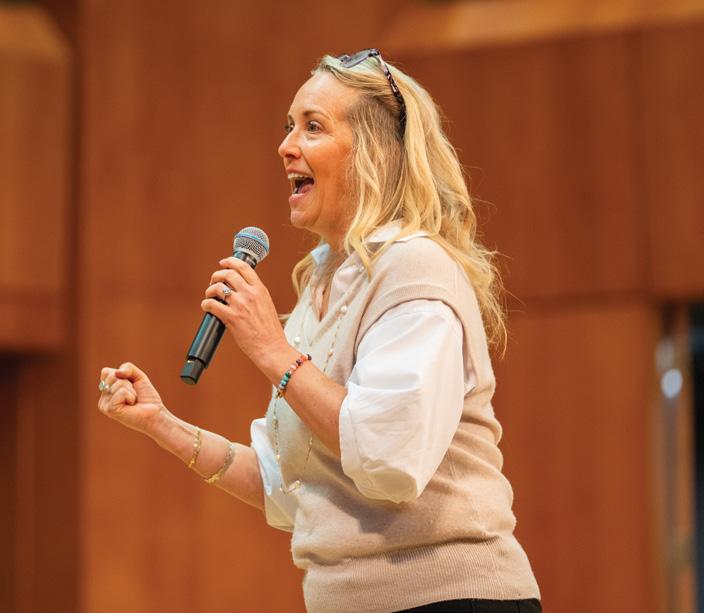
Then one day she is walking by the Norris Ely Orchard Theater. “Fall play auditions,” reads the sign. “No one knows what I can do, but no one knows what I can’t do, so I’m just going to go to the audition,” she says to herself.
She gets a part in the play. She gets parts in other plays, even does some directing. “I start building a community,” she says, “and I realize I belong somewhere. That experience of that first play launched an entire career. It changed my life.”
Stephanie is an actor, singer, and producer and the creative director of Story Jam, a storytelling and music show. She also teaches storytelling and held the workshop for the entire freshman class. The following day Stephanie did a workshop with some faculty and staff who work in public-facing offices. Her visit was made possible with the support of the Ralph M. Shulansky ’45 Lecture Fund. John Shulansky ’72 was at the event for the freshmen.
The freshman workshop built toward a “60-second story slam,” where several students voluntarily told their stories to the whole class. When each student got up on stage, cheers filled the auditorium. Some shared a life lesson, some shared overcoming a challenge. Not a voice was shaking.
“You kind of love them a little more when they tell their story, don’t you?” Stephanie said at the end. “This is how we create connections. Thank you so much for letting me come and talk with you, and thank you for your bravery, everybody.”
Be the friend who asks, advised sports radio giant Craig Carton in a convocation address to students in March, in recognition of Problem Gambling Awareness Month.
Mr. Carton urged students to look out for one another. If someone is acting differently, he said, the problem might not be gambling — but it could be, and it’s worth asking.
The guest speaker shared his own story of compulsive gambling as a cautionary tale. For 10 years he hosted the sports radio program Boomer and Carton with former NFL quarterback Boomer Esiason on New York station WFAN. From 2007 to 2017, the show dominated the ratings. Mr. Carton had celebrity, status, money — and then his gambling addiction caught up to him and he lost it all.
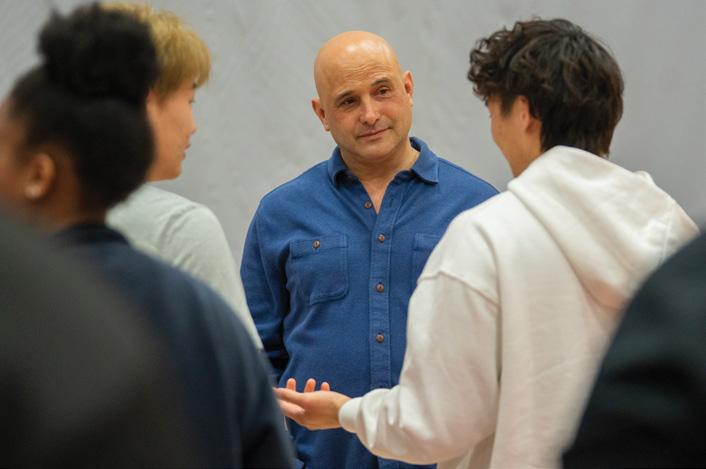
In September 2017 Mr. Carton was arrested for securities and wire fraud involving major live events. He resigned from WFAN and eventually was convicted in a ticket-buying scheme and spent about a year in prison.
“Gambling became No. 1 in my world, more important than my wife, sadly; more important than my kids, four of them, sadly,” he said.
What did it get him? “Nothing ... a house in foreclosure, had to file for bankruptcy, had
to pull my kids out of private school, my wife had to move from one apartment to another, zero dollars in the bank,” Mr. Carton said.
After his release from jail, he resumed his radio career. He also uses his platform to talk about problem gambling. Many memories will never fade. He remembers well the day he was arrested and what it felt like to walk into jail: “This is real. This is raw. I became a number, 79501054. ... I was no longer a human being. I was nothing more at all than 79501054.”
His last bet was in 2018. Now he tries to keep others from making similar mistakes.
“If I can share my story and if it resonates with one kid … and I can save them from what I went through, I will do this until I’m dead,” Mr. Carton said.

Background: Pianist, composer, educator
Her visit: Ms. Allen visited Jazz Ensemble Director Ken Fischer’s Jazz Improv class in April for a conversation about music. Ken’s students took it all in before they played a bit for Ms. Allen, who then broke down the performances, starting with how much she enjoyed them. Ms. Allen and her group, Heart Alchemy, were back on campus later in the month for a performance in Hubbard Performance Hall. Her classroom visit and the show were sponsored by Joseph S. Stookins Lecture Fund.
Quotable: “Anytime I deal with young musicians, I hope they understand their capabilities are greater than they’ll ever know. They have the ability to be creative and use that creative energy in their lives no matter what they do.”
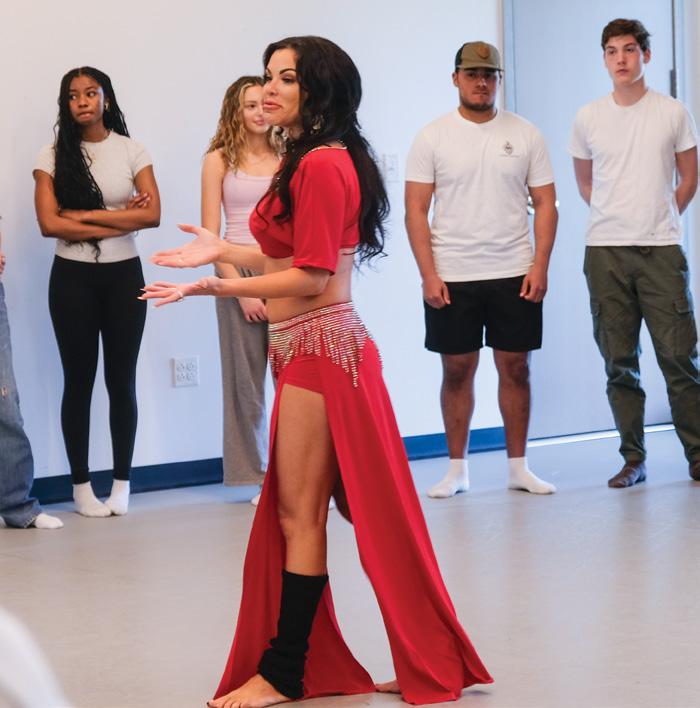
Ms. Mitri-Meda’s visit also showcased Middle Eastern heritage: “She did a great job talking about how complex identity is. She talked about how there are similarities between Hispanic cultures and Middle Eastern cultures and how she spent time in Lebanon and Egypt, learned about those cultures and compared them to her own, the warmth, the hospitality, the dance, the customs.”
nonfiction pieces that one day might end up as a TV or film project or produced in other formats.
Her visit: During a week on campus in April, Ms. Aniskovich visited freshman English classes, delivered a Chapel Talk, met with student writers for a dinner event, and offered a screening and Q&A session on her short film Taking Back the Groove.
Quotable: “A lot of my work — while it covers a lot of different topics — if you look at them, they all tend to cover something that was lost and forgotten in history or a story where you say, ‘I know what that is about,’ but then you watch it and you say, ‘Oh God, I didn’t know what that was about at all.’”
Background: Dance artist
Her visit: During a one-day visit in April, Ms. Mitri-Meda, founder of the Middle Eastern Dance Academy of Connecticut, demonstrated forms of Middle Eastern dance and worked with students in a collaboration between the Alvord Center for Global & Environmental Studies; the Middle Eastern Society, an affinity group on campus; and the Performing Arts Department. She is a native of Puerto Rico and received specialized instruction in Lebanese oriental dance as well as training in other dance forms.
Quotable: Richard Karrat, an associate director of the Alvord Center, said
Background: Documentary producer and director. She is the founder of Dial Tone Films and this year launched a digital magazine, Switchboard, which produces long-form
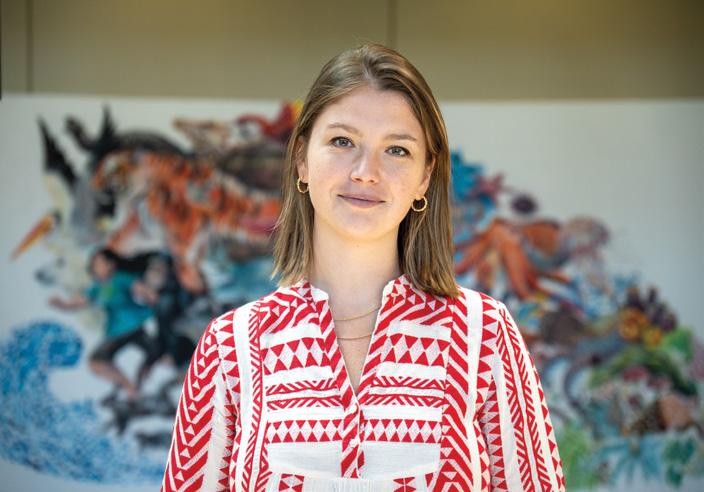
photographer and storyteller and a member of the Shinnecock Indian Nation
His visit: “Everywhere But Unseen,” an exhibit of Mr. Dennis’s work, was on display in the Sue and Eugene Mercy Jr. Gallery in the Richmond Art Center this spring. He also spent a week on campus in May working on photographic projects as part of the Adolf and Virgina Dehn Visiting Artist Program.
Quotable: “When showing my work there is always the amazement of having space to be recognized and celebrated not only for my work but for the content I am presenting. The work here, as part of the exhibit in the Mercy Gallery, celebrates where I come from, my ancestry. Being able to leave Shinnecock and share that with a new community is really special.”

The April calendar was filled with events related to the natural world, including guest speakers, a week focusing on climate and justice education, celebration of the campus certification as a Level I arboretum, and many environmentally friendly activities such as outdoor yoga and a vegan cooking class.
Geothermal scientist Andrés Ruzo, a conservationist, educator, and storyteller known for his work on Peru’s Boiling River of the Amazon, was the school’s Earth Month keynote speaker. During his two days on campus, he spoke at an all-school convocation and visited classes.
Mr. Ruzo was the first geoscientist to receive a shamanic blessing to study the Boiling River and later founded the Boiling River Project, a nonprofit focused on protecting the river and promoting responsible geothermal use worldwide. And it was almost as if Mr. Ruzo had bottled some geothermal energy for himself. During his convocation address in the Olcott Center, he didn’t stand still, walking about, jumping down from the stage, and running up the steps into the audience.
Deforestation of the Amazon and other areas was one of several topics that Mr. Ruzo discussed in his convocation address. In tropical regions of the world, he said, we are losing the equivalent of 30 soccer fields of forest every minute. “That is dangerous in a million ways. ... Environmental problems lead to human problems.”
A few days after Mr. Ruzo’s visit, Rob Stevenson ’69, an associate professor in the Biology Department at UMass Boston, came to Loomis Chaffee for an evening of science, billed in part as an invitation to “slow down, look closely, and rediscover the world around us.”
Rob is an advocate for citizen science, which he described as “the idea that people without formal training can participate in a meaningful way in the scientific process.” Toward that end, he encouraged the Loomis community to participate in a BioBlitz, an intense period
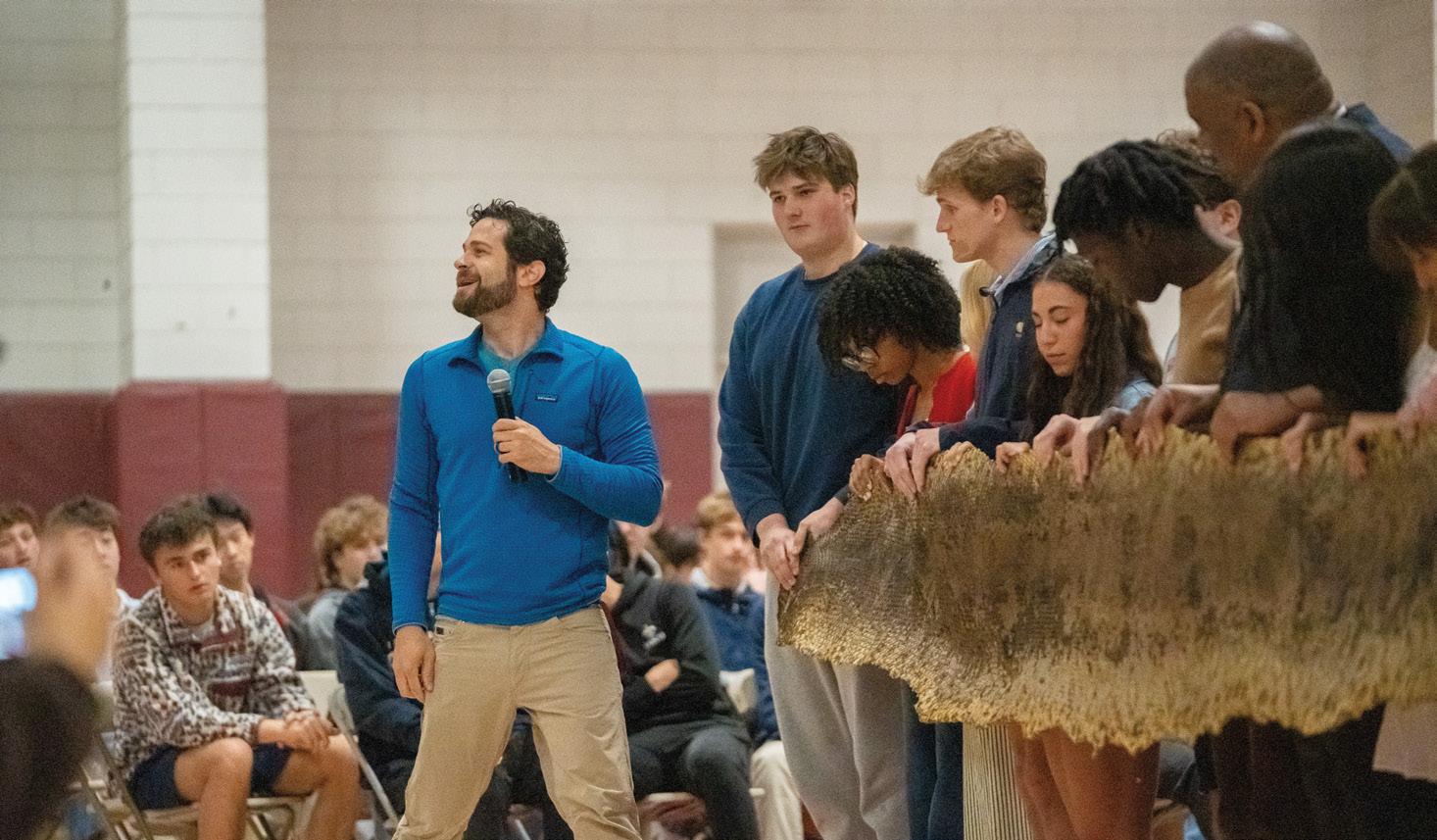
of biological surveying, planned for April 22–25 on the Island. As members of the CT River Schools Collaborative, Loomis, Deerfield, and Northfield Mount Hermon participated in the BioBlitz.
“The most important thing about slowing down is it will allow us to see things we otherwise miss,” Rob said. “We have tremendous ability to see, but we don’t use it for the natural world anymore. In the evolutionary sense, that was everything. You had to find your prey, your food, you had to look out for dangers, so your sensory systems are built to do that.”
Thanks in large part to the work of senior Sally Hayes, Loomis Chaffee gained certification as a Level I arboretum through the global ArbNet Accreditation program. Fittingly, the school celebrated the accomplishment on Arbor Day, April 25.
Sally’s Guided Environmental Research Project and her capstone project for her Global & Environmental Studies Certificate (GESC)
focused on researching, documenting, and sharing information about tree life on the Loomis campus today and in the past.
Sally started her quest for the arboretum accreditation by meeting with an ArbNet coordinator and working with various constituencies on campus. She needed to identify at least 25 species of trees, create a self-guided walking tour, prepare an educational event for Arbor Day, write a mission statement for the arboretum, and establish a plan to sustain the arboretum.
For her GESC project, Sally created a “ghost tree” exhibit telling the stories of several interesting trees that grew on the campus but are now gone.
The Loomis campus covers more than 300 acres, but the 32 trees listed for the arboretum accreditation can largely be found along the Loop.
Above: Convocation speaker Andrés Ruzo presents the skin of a 20-foot anaconda from Peru, held by audience volunteers.
Loomis Chaffee students traveled internationally and domestically this year on five education program trips through the school’s Alvord Center for Global & Environmental Studies.

Hawaii (June)
Focus: Interdisciplinary Environmental Studies & Outdoor Education
“We’ve learned that being a visitor, a learner, and a part of something is not passive. It asks something of us. What are our intentions? When we move through the world with the correct intentions, we don’t just witness it, but we begin to understand it. And when we understand it, we begin to care.”
— From the Hawaii trip’s blog
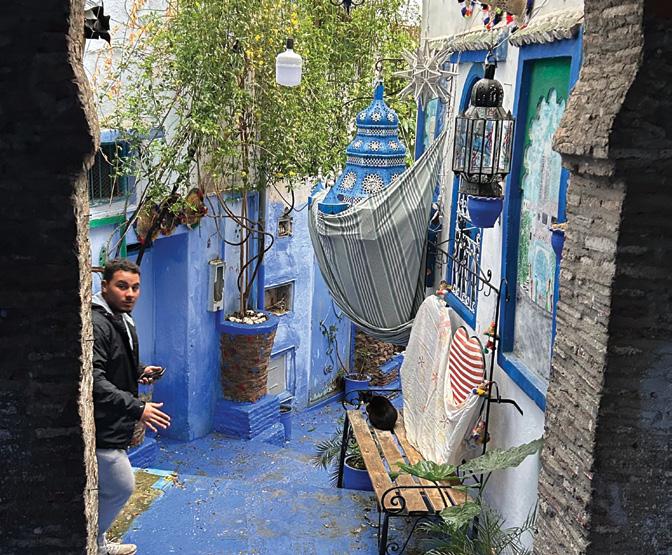
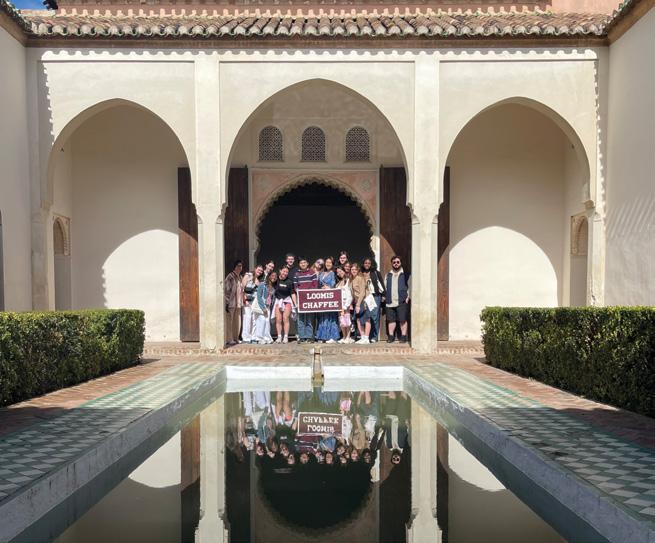

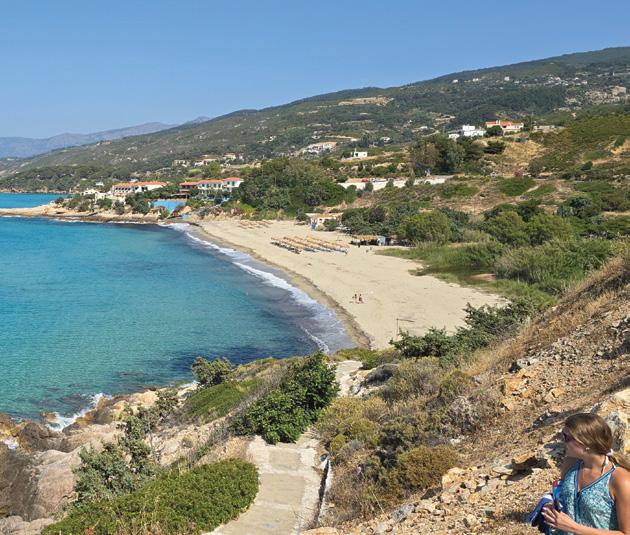

Take the idea and run with it. Well, first you need approval, but then put on your track shoes. The idiom “it takes forever” does not apply to Senior Projects.
Students are given two weeks to move from idea to execution, which includes a half-hour presentation and Q&A session. This year 28 students engaged in 19 projects. They shared their results and reflected on the endeavors during three evenings of presentations in May.
The Senior Projects program began 30 years ago. Students are excused from classes for the last two weeks of the school year to concentrate on their projects. This year’s projects ranged from a podcast that showed the
personal side of teachers by Katelyn Kim and Jordan Russell to an exploration of black hair — from stereotypes to unhealthy products on the market — by Kika Ebie, Zaryjha Harrison, and Fatou Samb.
Idil Turkmen created an Artificial Intelligence-powered language learning app that helps expand the user’s vocabulary in eight languages using a phone camera to identify objects in the target language.
Eli Krasnoff, William Chun, and Eric Zhou worked to develop a hydrogel injection to deliver a cancer-fighting drug to lymphoma tumors.
Two student-athletes, Abby Congdon and Jaime Patton-Martin, worked with students
at Renbrook School in West Hartford with the goal of, as the name for their project suggested, “empowering young athletes.”
Rachael Lantner created a porcelain tea set. Amy He, also a ceramics artist, created large porcelain vessels in the style of Qinghua vases, a style that originated centuries ago in China. Penelope Struthers, who has studied ballet since she was 4, designed lesson plans for and taught three basic ballet classes to students, faculty, and a faculty child.
“The 2025 Senior Project program was robust and diverse,” said Ed Pond, a science teacher and Senior Projects advisor. “The students involved were passionate about their work and grateful for the opportunity to conclude their Loomis careers in this special way.”
The Rogan Atrium in the Clark Center for Science & Mathematics hummed with conversation on an afternoon in May as advanced science students, stationed by their presentation boards, explained the research projects they had conducted this school year in molecular biology, environmental sustainability, robotics, cell biology, and other subjects.
So began the inaugural Loomis Chaffee Science Symposium, which attracted a capacity crowd of fellow students, parents, and faculty members seeking to learn more about the 27 sophisticated research projects involving roughly 60 student scientists.
After the initial forum, the crowd gathered in Gilchrist Auditorium for presentations on three of the projects and a keynote address from engineer Kathryn Guarini ’90.
The student presenters were:
n Seniors Daniel Jiang, Farrah Kanorwalla, and Toby Chen, who engaged in Guided Research Projects in molecular biology this year. They and the five other students in the course explored connections

between the circadian clock and the immune system, with each student testing the response created by a different agonist, a chemical that activates a molecular receptor in a living cell.
n Senior Sally Hayes, whose Guided Environmental Research Project (GERP) studied the diversity of tree species at Loomis Chaffee and prepared an application leading to the campus’s certification as a Level 1 arboretum. Three other seniors, Evie Flowers, Jake Delcampe, and Grace Rodner, also pursued GERPs this year.
n Seniors Eli Krasnoff, William Chun, and Eric Zhou, who collaborated on a two-week Senior Project developing a hydrogel injection to deliver a cancerfighting drug to lymphoma tumors.
In her keynote address, “From Curiosity to Impact: Why Your Science Journey Matters,” Kathryn discussed her path from fascinated physics student at Loomis Chaffee to engineer, chief information officer at IBM, advocate for STEM education, and current Yale professor. “Science opens doors,” she said, and she asserted that the world needs more curious, hard-working technological innovators like the students at the symposium.
In addition to conveying the excitement of working in the field of innovation, Kathryn emphasized that this work requires effective collaboration, communication, and people skills.
“Innovation is a team sport,” she told the students.
Above: Senior Athip “Oat” Twinvintoo explains his research project to Head of the Math Department Lauren Riva.
Senior Shaylee Moreno called her experience in the Innovation Trimester, more commonly known as the I-Tri, a “full-circle moment.”
Bits and pieces of knowledge gained in the Loomis Chaffee classroom get put to use. This year’s 13 I-Tri students spent the spring offering potential solutions to challenges faced by local businesses and nonprofit organizations. The program allows selected seniors to step away from their regular classes for their final term and focus on the I-Tri.
“Loomis has, over my four years, really embraced my creativity and encouraged everyone to speak up and voice our opinions,” Shaylee said in May before the group’s final presentation. “This is the perfect space to do that.”
This year the group had three major projects: working with the Hartford Athletic professional soccer team on how to enhance fans’ experience on rainy game days; with Summit Adaptive Sports, which offers outdoor sports for individuals with disabilities, on increasing its merchandising; and with Riverfront Recapture in Hartford to connect more people to the Connecticut River.
Michael Zaleski, the president and chief executive officer of Riverfront Recapture, was among the representatives of the organization who attended the final presentation. “We are very fortunate to have the perspective of
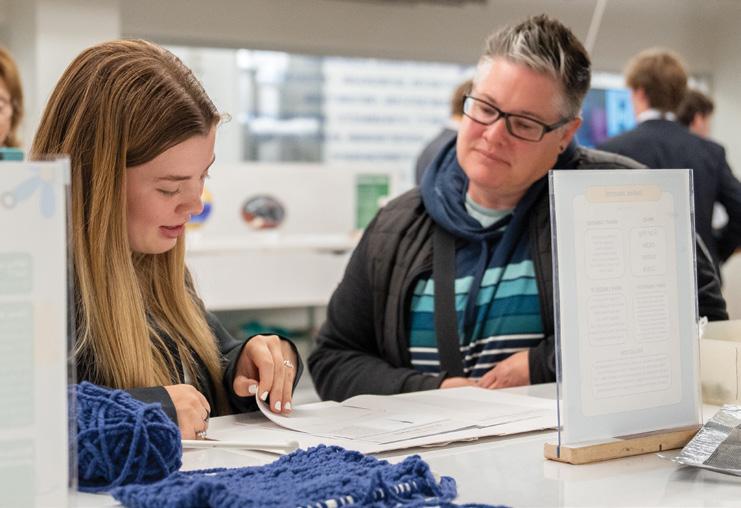
fresh eyes,” Mr. Zaleski told the I-Tri students after their presentation. He said Riverfront Recapture planned to use the materials from the student proposals to push ideas forward. “We’re hopeful in a year or two we can show some results,” he said.
After the presentation, Naomi Appel, a teacher and member of the I-Tri leadership team, complimented the students on their good work and improvement over the course of the I-Tri. “I hope going forward that you take with you the ability to walk toward things that are hard and things that are uncomfortable,” she told them.
Jen Solomon, associate director of innovation and I-Tri leader, noted the courage and resilience of the participating students.
“You didn’t have to do this. And yet you did,” she told them. “The public speaking, the collaboration, the problem-solving are things generally really hard to do, and I hope you feel that hard effort was worthwhile.”
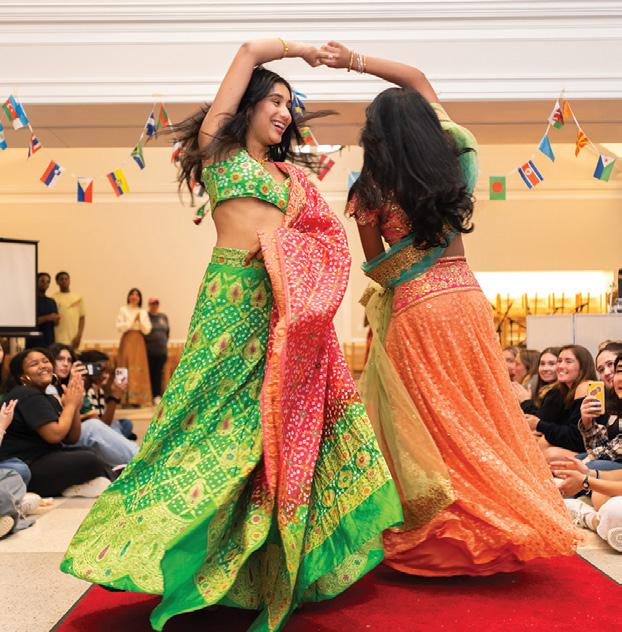


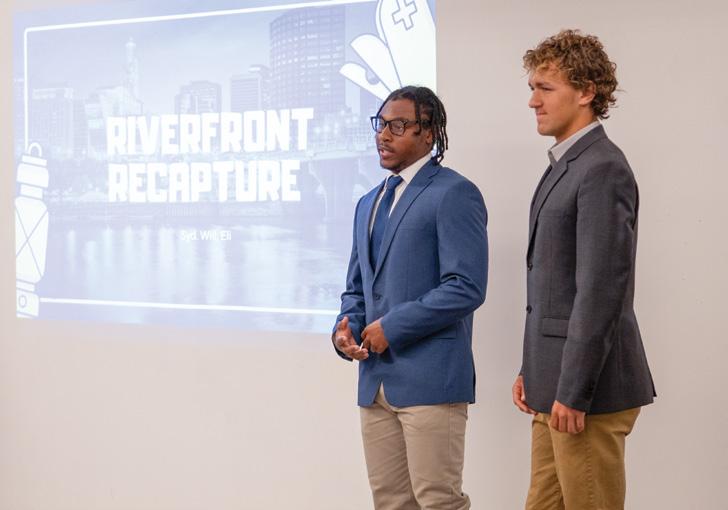
There was little doubt about that, based on participants’ comments.
Ava McCann said the I-Tri helped her gain confidence in public speaking and skill in developing a presentation. She said she learned that “it’s not just making a slide show and presenting it, but rather it is researching first and understanding what I am trying to make before starting the process of presenting my solution.”
Kyle Gyimah-Padmore reflected on what he would take away from the I-Tri process. “Yes, it’s fun. Yes, it’s non-traditional,” he said, “but if you think about all that we do, it is tying everything to a real-world setting. All the skills I learned I can use in college and as life moves on.”
Above left: Niamh Foley shows her final I-Tri project to faculty member Lindsay Beer at a reception marking the program’s conclusion. Above right: Elijah Darity and Will Stillman make a presentation to Riverfront Recapture representatives.
Melding music, food, fashion, dance, and colorful displays, Cultural Outburst was a smashing success this spring. The celebration of the many cultures represented in the school community was organized by the International Student Ambassadors and the multicultural organization PRISM. The always popular fashion show included (left) sophomores Maya Mattamana and Aahna Shah in lehengas from India, (middle) sophomore Georgii Demkin in a traditional Russian kosovorotka with a fur hat called a papakha, and (right) freshman Jediah Brew and sophomore Nana Kofi Donkor in caftans from Ghana.
Junior Shane Lischin’s essay “Roots in the Silence” won a gold medal in the national Scholastic Art & Writing Awards in the personal essay and memoir category, and junior Aanum Khan’s piece “Killing Doves” received a silver medal for poetry. Their submissions and seven other entries from Loomis Chaffee students had advanced to the national competition after winning gold keys at the regional level. More than 30 other submissions from Loomis students earned silver keys and honorable mentions at the regionals. In another competition, rising senior Ji Yee Chung was awarded a “first class” distinction in the 2025 National Council of Teachers of English Achievement Awards in Writing contest. National judges evaluated each submitted piece of writing for expression of ideas, language use, and unique perspective and voice, according to a news release from the organization. First class is the highest of four designations.
Junior Ben Whitehouse placed second in the 63rd WALKS Constitutional Essay Contest in April. The WALKS schools are Westminster, Avon Old Farms, Loomis Chaffee, Kingswood Oxford, and Suffield Academy. The head of the history departments at each school chooses two outstanding student research papers on a constitutional topic, and those students become finalists. Junior Maddy Vorchheimer was the other finalist from Loomis Chaffee. The essay topic this year was the evolution of the executive branch, including how executive power has evolved since the inception of the U.S. Constitution, and what the consequences are. The contest was established in 1962 to stimulate the study of the Constitution. This year’s judge was retired Connecticut Superior Court Judge Elaine Gordon.
Stories written by freshman Cylina Wang and sophomore Vivaan Chaturvedi received top honors in the 2025 Katharine Brush Flash Fiction Contest. This year’s prompt, chosen by
history teacher and school archivist Karen Parsons, Writing Initiatives Director John Morrell, and English teacher Zach Grobe, was to use a public place as a launching point for the flash fiction story. Twenty-three students wrote stories, which were judged by published authors Brendan Flaherty ’02, Tory Henwood Hoen ’02, and Nicole Seymour. Professor Seymour, an environmental humanities scholar, spoke at Loomis Chaffee last year. Katharine Brush was a widely read author in the 1920s and 1930s whose career is preserved in a collection in the Loomis Chaffee Archives and for whom the school’s library is named.
Eighteen Loomis Chaffee musicians were selected for the Connecticut All-State Music Festival in March. They earned their places in the All-State choir, orchestra, and band by first auditioning for and earning spots in the Northern Region Festival in November, then auditioning in February for the All-State Festival, sponsored by the Connecticut Music Educators Association.

Seniors Boden Bubb, Zaryjha Harrison, and Iris Sande presented ‘Night, Mother, a Pulitzer Prize-winning play by Marsha Norman, on two evenings in May in the Black Box Theater of the Nichols Center for Theater and Dance. In recognition of the play’s difficult themes related to mental health, epilepsy, thoughts of suicide, and other issues, a discussion hosted by the Counseling Office followed each show.
Clay that was unearthed on campus last summer for construction of the school’s newest dorm found new life this spring in 30 pieces of pottery created by seniors Amy He and Rachael Lantner. The clay, dug up during the excavation for Culbert Hall, was saved and given to ceramics teacher YoonJee Kwak, who provided it to Amy and Rachael for their Global & Environmental Studies Certificate capstone project. The two seniors, both skilled in ceramics, wanted to try using natural clay from campus. The process presented multiple challenges, from reclaiming the clay into a usable consistency to shaping it into vessels on a pottery wheel and determining the right temperature for firing the clay in a kiln. The rewards were intrinsic. “We’re using something directly from Loomis, so we are very connected to our material and the land we are on,” Amy said.
Loomis Chaffee brought two teams to the Connecticut High School Regional Science Bowl at the University of Connecticut in February, and one of the teams finished in the top six and was one win away from reaching the quarterfinals.
In April the Financial Literacy program launched an app for student use developed by senior Bryan Chung. A major aspect of the
Financial Literacy program has been the use of pelicoin, a virtual currency system that serves as a tool to teach personal finance to students. The app “fundamentally changes record-keeping, reporting, scheduling, purchasing, transfers, and donations of pelicoin,” says Linda Fisher, the program’s director. “He put countless volunteer hours into developing the application.” Bryan worked with the school’s Information Technology Department, primarily Senior Systems Administrator Patti Donovan, to create the financial literacy app.
Student Council’s annual benefit concert (BenCon) in April raised money for Sandy Hook Promise, based in Newtown, Connecticut, and founded and led by several family members whose loved ones were killed in the mass shooting at Sandy Hook Elementary School in 2012. This year’s BenCon featured assorted student acts, ranging from singing and dancing to a magic show — all exuberantly received by the student audience in Hubbard Performance Hall.
A new event in May, Artstravaganza, highlighted the work of Loomis Chaffee art students this year. From paintings, drawings, prints, sculptures, and ceramics to interactive games created by 3D Fabrication students, work by the Video and Animation class, and a sound
suit-cake design collaboration among Graphic Design and Sculpture I classes, students displayed and presented their work during the afternoon event inside the Richmond Art Center and on the patio outside the building.
“Take action” was the focus of a culminating event in May for students in the Global & Environmental Studies Certificate program. Some students participated in a resource recovery initiative, helping to set up the endof-school-year collection of unused toiletries and food in the dorms for donation to people in need in Greater Hartford. Other students helped spread wood chips along pathways of the Loomis Chaffee community gardens and stacked wood at the LC Sugar Shack, where maple syrup is produced. Another work crew readied the Greenhouse for the summer. The “take action” initiatives followed the presentation of the certificates and prepared remarks from two seniors in the GESC program. The Alvord Center for Global & Environmental Studies coordinates the program, which involves coursework, co-curricular engagement, experiential learning, and capstone projects with the mission of developing “global and environmentally engaged citizens.” Taking action is one of the tenets of the program.
Below: Junior Sophie Singer takes the stage in Hey Again, Yurian during the Framed-In Theater Festival.

The IDEA Framed-In Theater Festival this spring featured two plays written, directed, performed, and produced entirely by students. Senior Ell Chen wrote and directed Hey Again, Yurian, and juniors Nina Gitlitz, Natalie Pereira, and Sophie Singer performed the play. Freshman Klara Oppenheimer wrote and performed in An Imperfect Cycle, which was directed by junior Keunhoo Park. Juniors Abby Fullerton and Angelina Wang joined Klara in the cast. Working behind the scenes for both plays on lighting and management of the stage were sophomore Lily Autry, freshman Zoe Rhodes, sophomore Joy Smith, and senior Boden Bubb. For the annual festival, participants must produce their plays on a given theme and within certain parameters. This year the theme was “artificial intelligence,” plays had to begin with the line “Hey again” and end with the line “two plus two equal four,” and the “frame” of the stage was a 10-foot square of light with corner light paths.
At the annual Community Honors event in June, faculty and staff members were celebrated for their dedicated work:
The Austin Wicke Prize was presented to Skyler Dovi ’17, who teaches in the Social Science Department and is the dorm head of Cutler Hall. The prize is given in memory of Austin by his parents to a faculty member
of less than 10 years of service who has demonstrated a dedication to teaching and a commitment to fostering the growth and development of young people.
Kevin Henderson, who teaches in the History, Philosophy & Religious Studies Department and the Social Science Department, received the Distinguished Teaching Award in honor of Dom Failla, a longtime philosophy and
religious studies teacher. The award was created by a number of alumni who raised a Failla Fund after Dom retired in 2009. The fund supports faculty salaries, professional development, and this award, which is presented each year to a senior faculty member.
The Lena M. Chen M.D. ’87 Faculty Prize for Mentoring was awarded to
Three longtime faculty and staff members retired this summer, leaving their mark on the school. They were celebrated at a special event in June.
Timothy Dowd, grounds supervisor, 27 years: Lance Hall, director of the Physical Plant, said Tim was “a truly dedicated man ... whose heart, soul, and countless hours have shaped Loomis Chaffee into the beautiful, welcoming campus we all love. ... He’s built a grounds team that takes pride in every detail, from the neatly trimmed grass to the thriving trees and pathways that welcome all visitors.” Lance said the grounds crew joked that even in retirement Tim will probably stop by to check on things. “He’s a worker at heart,” Lance said. Beyond that, though, Lance said that Tim is “a man of honesty, loyalty, and family values — someone who leads by example.”

Jean Sapula, athletic trainer and athletics faculty, 20 years: Jean holds a special place in Loomis Chaffee history, noted Head Athletic Trainer Kevin Agostini. She was the school’s first full-time female athletic trainer. “Your absence will be deeply felt, but your legacy is secure,” Kevin said to Jean in his remarks. “Thank you for your service, your heart, your strength, and your belief in others. You have been one of the rocks of this Athletic Department.” Adrian Stewart, the head of physical therapy, said Jean was “a true pillar — not only within the athletic training room but across every corner of this campus.” He described her as the very definition of a “servant leader.”
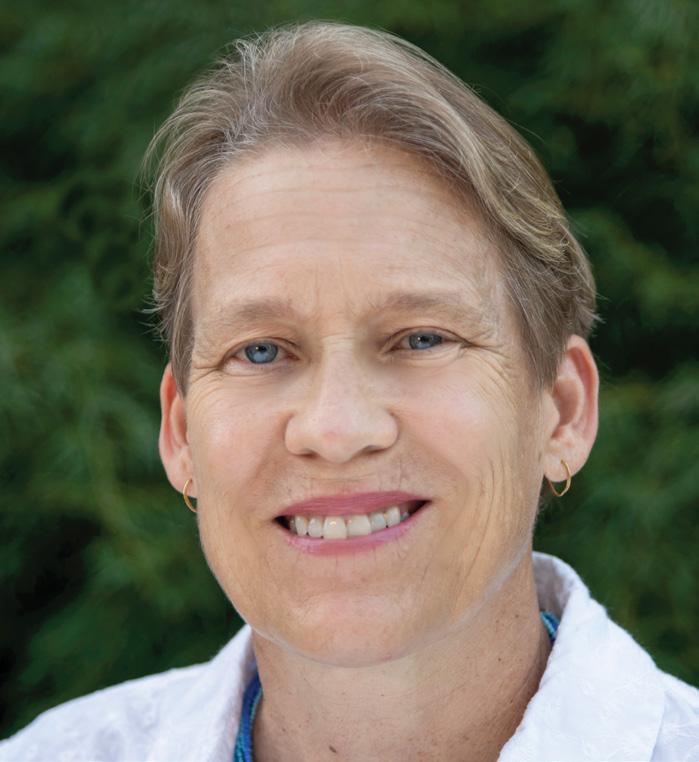
Chris Lamy, director of campus safety, 10 years: Chris’s “leadership has helped create a campus where people feel safe, valued, and welcomed,” said Lance Hall, the director of the Physical Plant, who spoke in tribute to Chris at the retirement event. Lance noted that the first cameras on campus appeared under Chris’s tenure “and now we have over 90 cameras covering every corner — making our campus safer for everyone. What has always stood out for me is his genuine care for the campus and those on it. He’s worked closely with Windsor Police and developed a stronger connection with the town.”

Katherine Langmaid, the senior associate director of admission and the associate director of financial aid. Established in loving memory of Lena by her family, the award is presented annually to a faculty member who excels as a mentor to students. The award honors and celebrates the impact that faculty members have on the lives of students in and outside of the classroom.
A Palmer Fellowship was awarded to Director of Writing Initiatives John Morrell. The Keller and MacLean families established Palmer Fellowships in honor of former faculty members Ann and Keith Palmer to recognize superb teaching, with the specific goal of fostering innovative pedagogy. John is on the English faculty and the History, Philosophy & Religious Studies faculty.
The school honored three teachers with instructorships: Music teacher and Orchestra Director Netta Hadari was named to the Thomas Benedict Carter Instructorship in Music. Michele Trenchard was named to the Herbert Savin Instructorship in Math. Will Eggers was named to the Mr. & Mrs. Loomis Memorial Instructorship in English.
Service to the School Awards were presented to seven members of the staff: Joshua Paleski from the Engineering Department, Mike Mango from Campus Services, Patrick Velie from Campus Safety, Diane Crean from the Office of Admission, Jeff Otterbein from the Office of Strategic Communications and Marketing, Christine Silva from the Alumni/Development Office, and Hannah Hayes, from the Office of the Head of School.
Head of the Science Department Neil Chaudhary ’05 was named Teacher of the Year for 2024–25, an honor presented by the Student Council at the all-school awards assembly in May. The Student Council also instituted and presented a new award: Community Member of the Year. Mailroom supervisor Amber Passardi was selected for the honor. Recipients of both awards are chosen by the Student Council based on student nominating letters. Neil was lauded for his seemingly tireless dedication to students
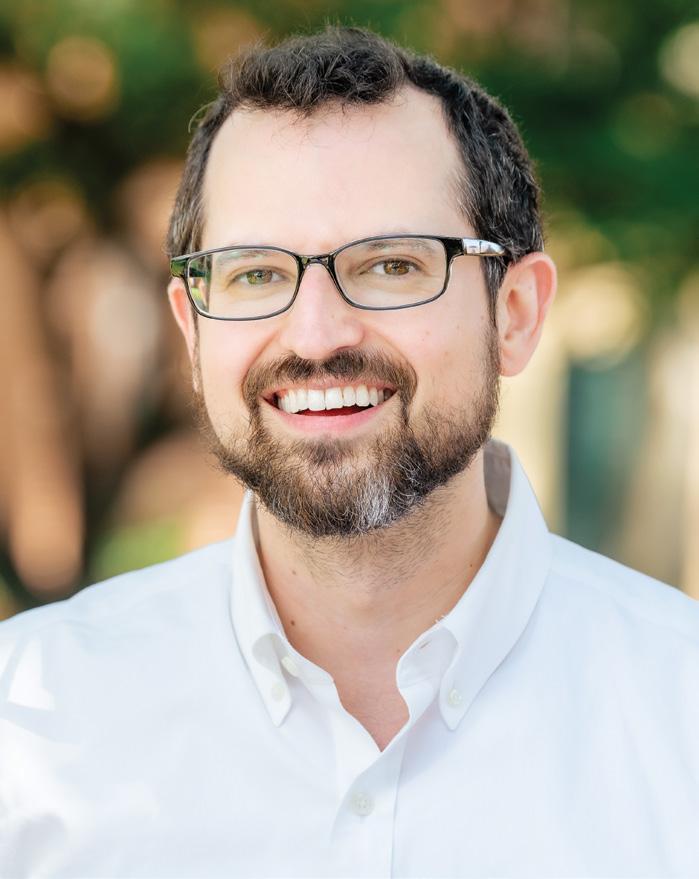

and his ability to make sense of complex science concepts. Amber was recognized for having a positive impact on the community and student experience and for her dedication to her job.
At an all-school meeting in May, faculty and staff were honored for employment milestones in five-year increments:
Five years: Adam Bartolucci, Cinthia Claudio, Diane Crean, Jeff Eades, David Edgar, Makhala Huggins, Richard Karrat, Sangyeop Kim, Lauren Riva, Petagay Rowe ’95, Ashley Soper, Charles Stewart, and Laura Schulte
Fifteen Years: Rich Esposito, Joanna Harvey, J.R. Zavisza, and Jake Leyden
Twenty Years: Naomi Appel, Craig Lamenzo, Jean Sapula, and Asmir Nurkic
Twenty-Five Years: Mike Donegan, Rachel Engelke, Ken Fischer, Webb Trenchard, and Michele Trenchard
Thirty Years: Karen Parsons and Delphine Robison
Thirty-Five Years: Andrew Bartlett, Julie Knight, and Scott MacClintic ’82
Forty Years: Chris Beckford
Several Loomis Chaffee faculty members led workshops at the school’s third Artificial Intelligence Symposium on June 3. More than 200 teachers and administrators from Loomis and 30 other schools attended the day-long symposium on campus. Titled “New Paths Forward: A.I., Humanity, and the Next Era of Education,” the conference opened with a keynote address by Annie Murphy Paul, author of The Extended Mind, followed by 25 workshop options. Among the presenters from the Loomis faculty were Caitie Cotton, Elliott Dial, Sarah Griggs, Ned Heckman, Eric LaForest, Scott MacClintic ’82, Marley Matlack, Karen Parsons, Kate Seyboth, and Jen Solomon. Director of Educational and Administrative AI Initiatives Matt Johnson helped to organize the symposium.
With a 1–0 victory over Kingswood Oxford in May, head varsity baseball coach Donnie McKillop notched his 100th career win at the helm of the Loomis Chaffee program. Donnie joined the Loomis Chaffee community in 2017 as head varsity baseball coach, assistant athletic director, and assistant football coach. Since his arrival, he has become a cornerstone of the athletics program and broader school community. He also serves as dorm head of Warham Hall. Donnie was a standout baseball and football player at Middlebury College, graduating in 2011.
Top: Teacher of the Year Neil Chaudhary ’05
Bottom: Community Member of the Year Amber Passardi
Ten Years: Rock Battistoni, Michelle Carr, Freddi Dupre, Chris Lamy, Luis Natal, Chelsea Ouellette ’08, and James Rickevicius
Faculty members departing the Island at the end of the school year for new endeavors were science teachers Mike Armstrong, Hannah Goodrick-Armstrong, and Aidan Winn; English teacher Michaela Chipman; English, history, and religious studies teacher David Edgar; and Dean of Enrollment Amy Thompson.
BASEBALL 11-9
BOYS GOLF 8-4
GIRLS GOLF 13-4-1
Founders League Championship, 2nd Place
BOYS LACROSSE 16-1
Founders League Tournament Champion
GIRLS LACROSSE 11-5
Founders League Tournament Semifinalist
SOFTBALL 10-2
Western New England Class A Tournament Semifinalist
BOYS TENNIS 10-6
GIRLS TENNIS 5-5
BOYS TRACK & FIELD 7-0
Founders League Meet Champion
New England Division I, 3rd Place
GIRLS TRACK & FIELD 8-1
Founders League Meet Champion
GIRLS WATER POLO 5-9

Junior Ani Tzonev 2: Senior Jack Daley
3: Freshman Andes Chai
4: Senior Niamh Foley
5: Junior Jayden Rodriguez
6: Junior Temi Ogundare
7: Senior Lucas Hanley
8: Sophomore Charlotte Slayton
9: Senior Meredith Doherty
10: Senior Gretchen Kawecki
11: Sophomore Andy Yang
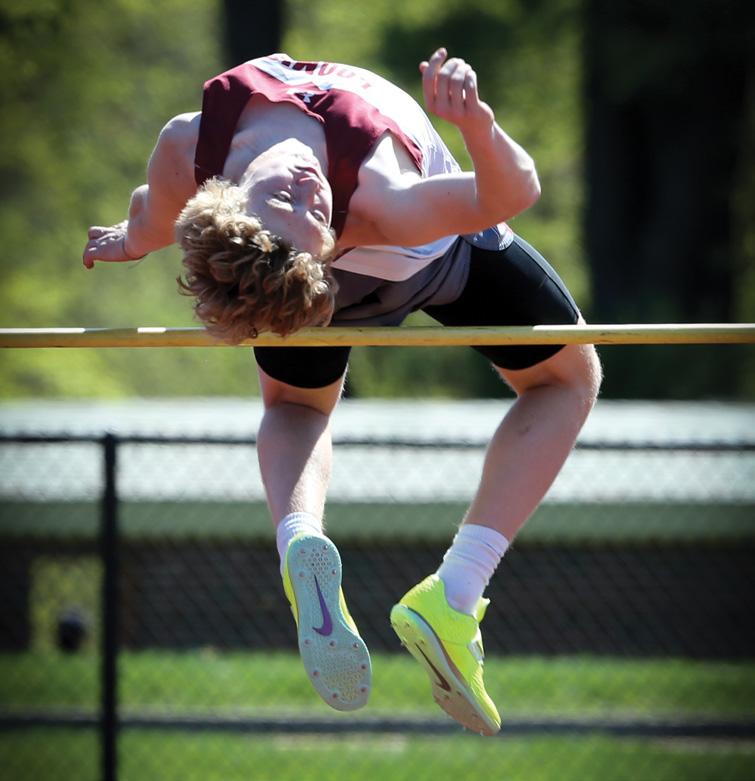





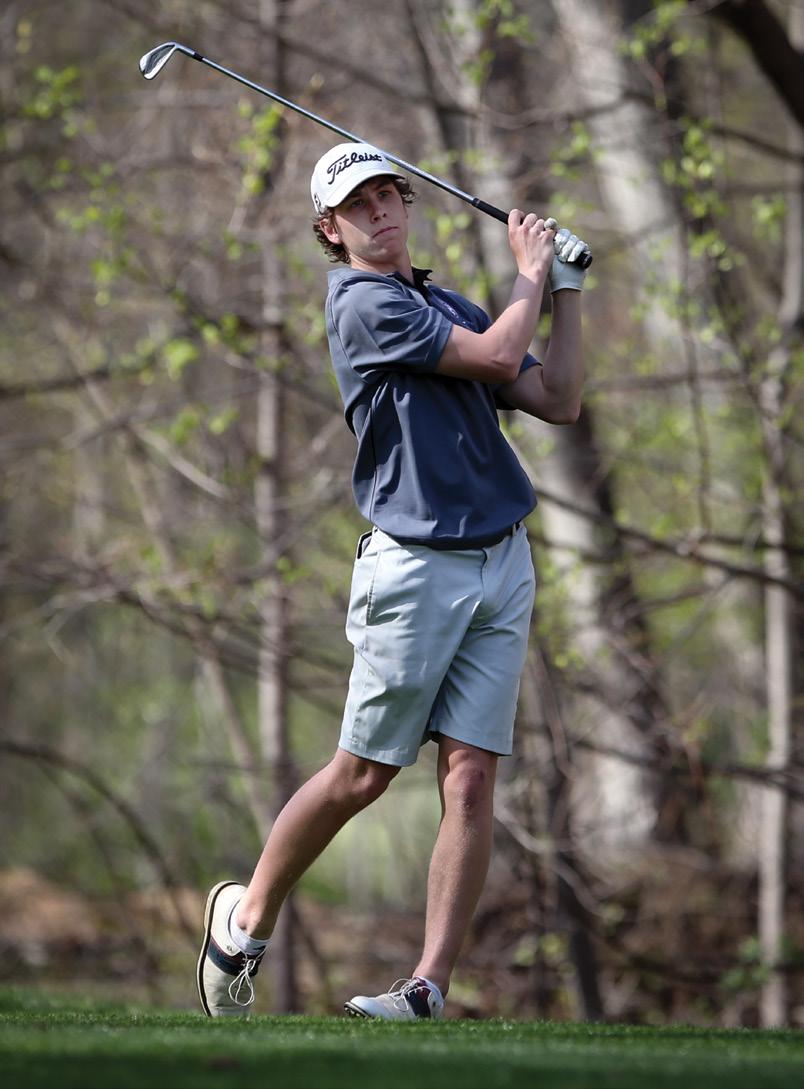
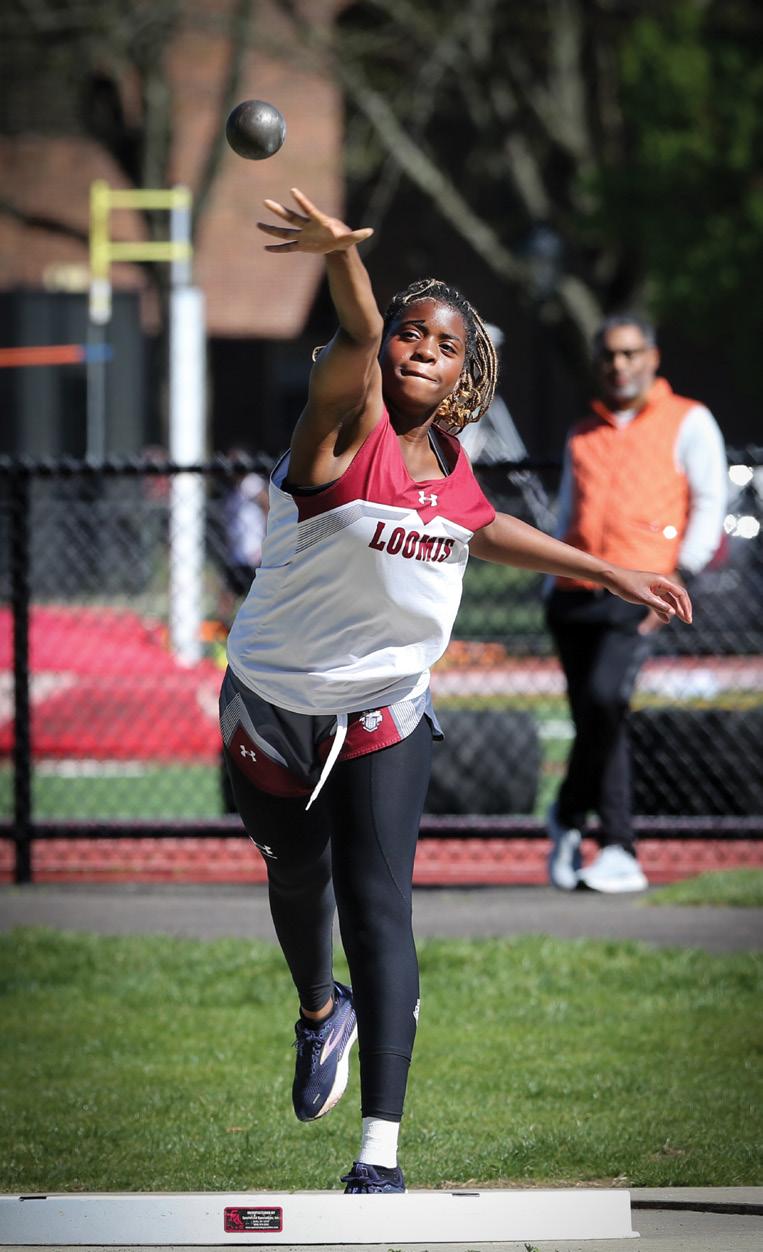

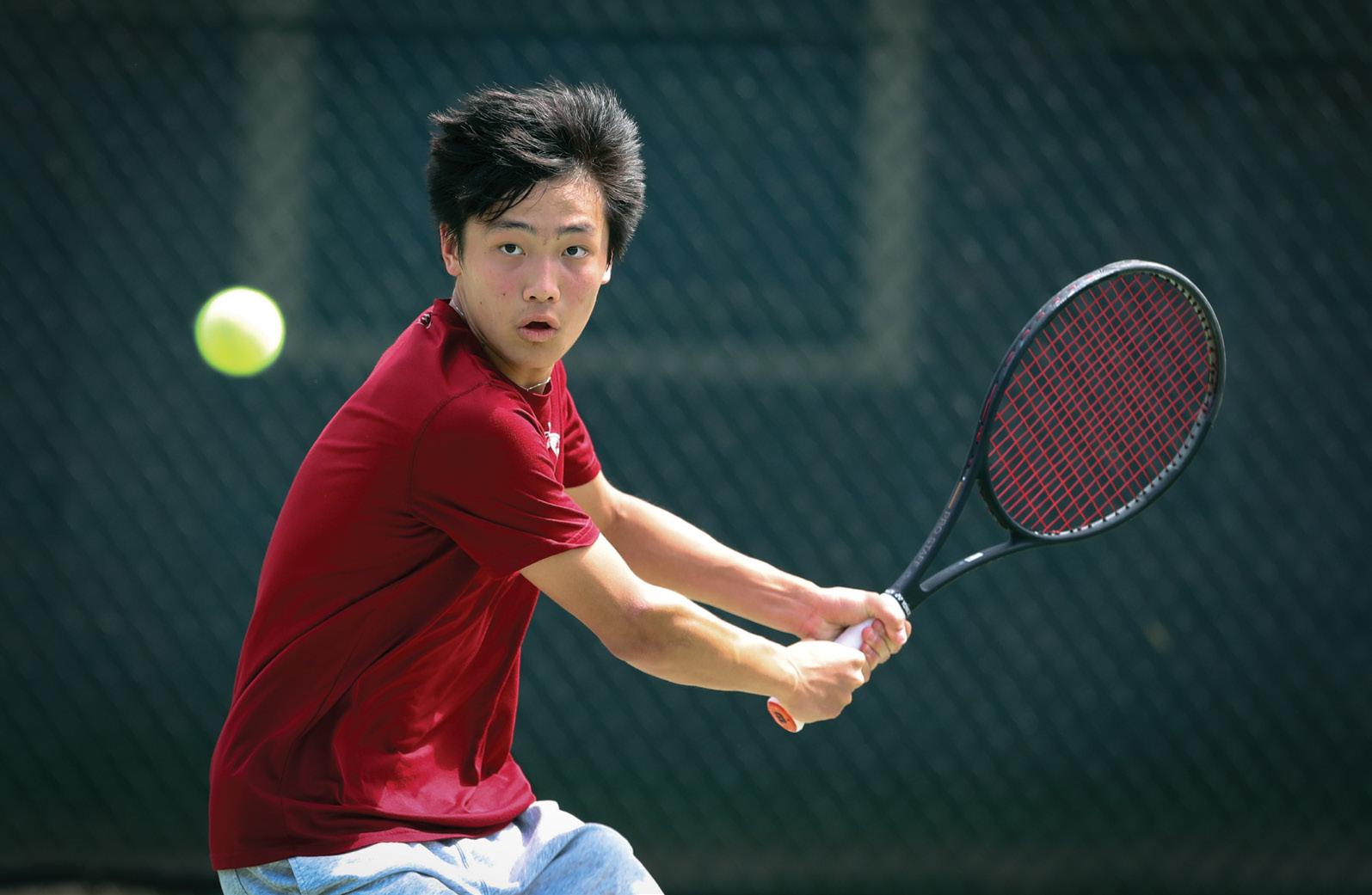
By Karen Parsons
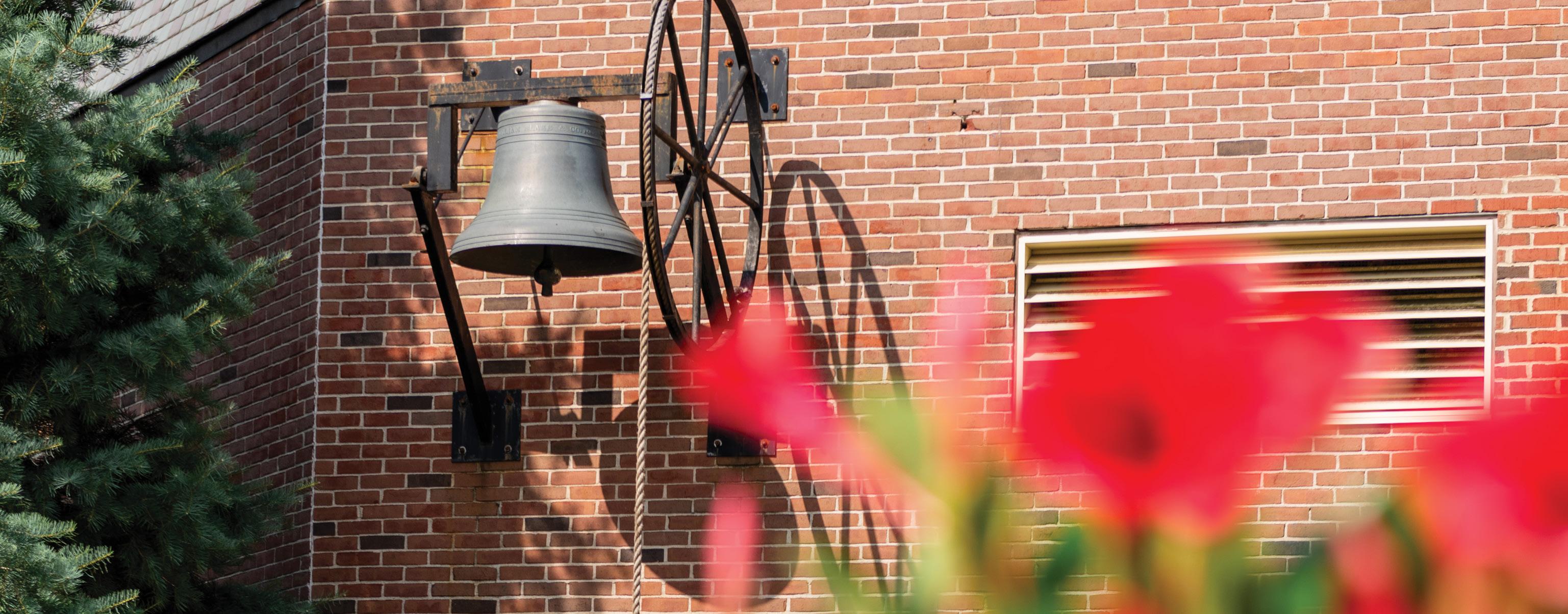
The Loomis School’s Victory Bell rang for the first time during a Friday night pep rally on October 1, 1965. The next day it rang again — two rounds of what The Loomis Log described as “crisp, clear tones sounding joyously over the Island” — signaling wins for the soccer and football teams. Sixty years later, the tradition endures. On many Wednesday and Saturday late afternoons or even early evenings as buses return from away games, the tolling bell can be heard from every location on campus, set in motion by team members tugging at its rope pull. This is one way Loomis and Loomis Chaffee teams have celebrated their successes and let their school know they notched a victory that day.
Herbert Savin ’44 and Loomis parents Arnold S. Cartin and Joseph S. Sudarsky donated the bell in 1965 as a memorial to faculty member John Anthony “Tony” Worthington. While a memorial fund had been established in Tony’s name to support a library of German books at Loomis, the three men felt that something needed to be done to preserve the memory of Tony’s impact across the campus. The gift’s accompanying citation noted his “boundless energy, enthusiasm, and good spirit [that] inspired all Loomis students who knew him to strive to do their best whether in the classroom or on the playing field.”

the rope pull and guides the bell to swing back and forth. Around 2000, the bell was taken down in preparation for the wall’s demolition and construction of the Olcott Center. It was rehung slightly north of its original location after the Olcott Center’s opening.
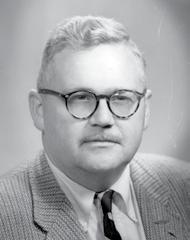
Tony Worthington taught French, German, Spanish, and Latin at Loomis. He coached JV soccer and cooked meals for Darwin Club outings. The Loomis Bulletin described Tony as having “a brilliant career as a teacher of languages.” He was just as well known for serving up legendary omelets and steaks with salad at the Darwin Club cabin in East Hartland, Connecticut, or playing his guitar and singing with gusto in the Faculty Follies shows staged at the Norris Ely Orchard Theater. Tony was a seasoned international traveler, having moved to England with his family as a child and lived there through college and graduate school at Oxford University. He joined the British Army during World War II, eventually serving in military intelligence units in Africa and Europe. His strong capacity for languages served him well; he was fluent in French, German, Spanish, and Swahili and was described as “acquainted” with Russian, Italian, and Dutch. Travels with Loomis faculty friends and solo journeys took him to Italy, Mexico, and Europe. Tony was in his 10th year at Loomis when he unexpectedly passed away in 1964 at age 45.
and telling jokes, composing long rhyming verses that mentioned every Loomis faculty member and their family as his Christmas greeting, or simply being cheerful. One student remarked the year after Tony’s death, “He was always cheerful, but more than that, he made other people cheerful, even those who barely knew him.”
As the bell signified Tony Worthington’s legacy, the families of its donors — the Cartins, Savins, and Sudarskys — would grow over time to include two or three generations of alumni, including Blanche Savin Goldenberg ’70, former chair of the Board of Trustees who recently received the Henry R. Kravis ’63 Distinguished Service Award, and Edith “Gay” Sudarsky ’39, who served as a Loomis Chaffee Trustee beginning in 1965 and was involved in planning for the merger of Loomis and Chaffee. She received the Distinguished Service Award in 1986.
The bell was riveted to the west-facing exterior wall of Erickson Gym, its sturdy iron frame supporting the headstock from which the bell hangs as well as the large wheel that feeds
Alumni and faculty colleagues remembered Tony as someone engaged passionately in whatever he was doing: teaching, coaching, encouraging sportsmanship, smoking his pipe
In 1965, Loomis joined the ranks of colleges and schools with a victory bell, including Williston Northampton School, whose bell was given in 1962 to honor Chuck Vernon at the close of his senior year at the school. Chuck began his long career at Loomis and Loomis Chaffee in September of 1968, just over three years after Tony Worthington had passed away. Many remember Chuck, who died last year, for living life to its fullest, for his sense of humor, and for his good cheer. Above all, he was blessed with the gift of friendship, a characteristic he shared with Tony. Both men made the school a better place. That is clear as a bell.
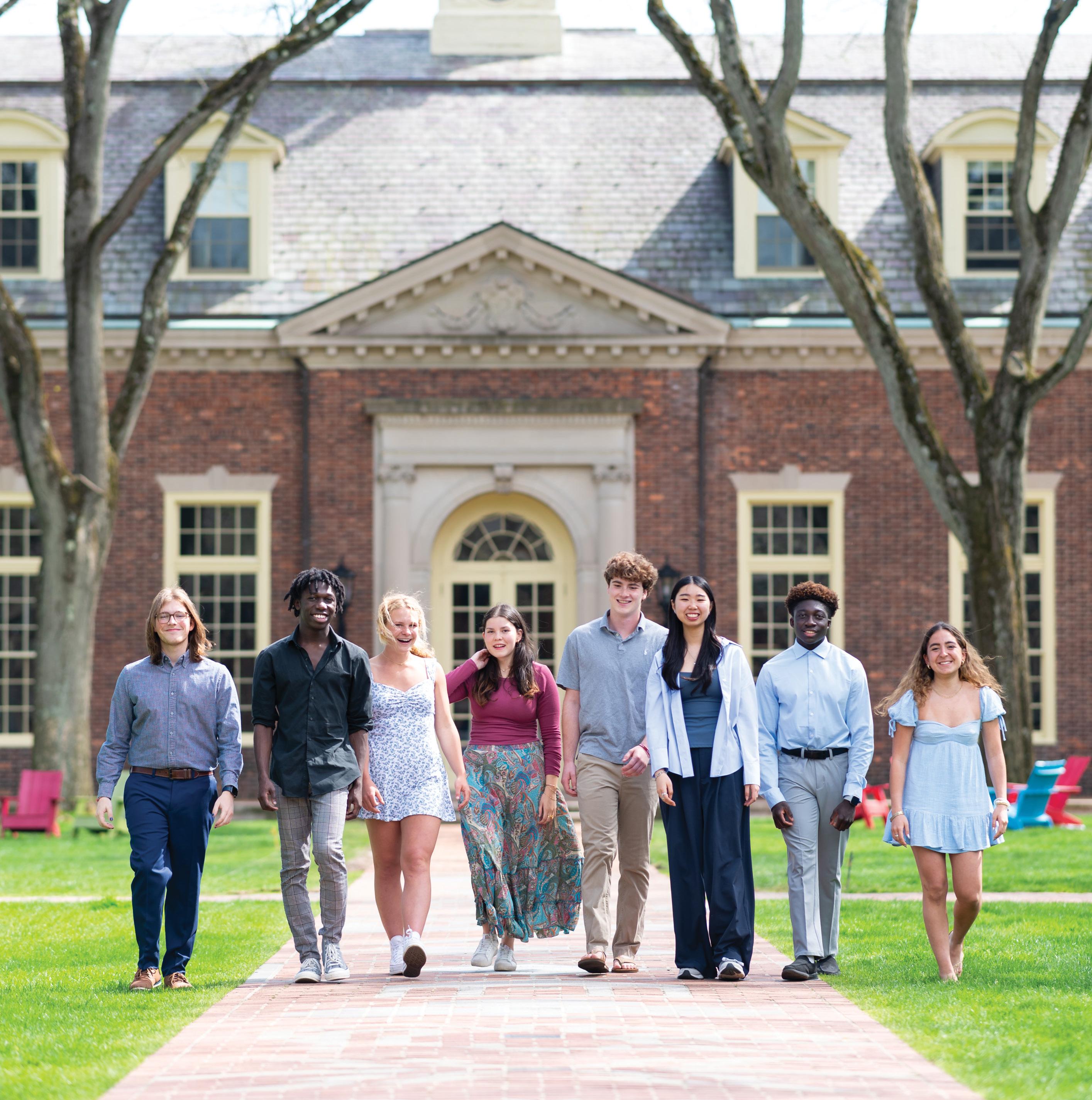
By Jeff Otterbein
We talk with eight members of the Class of 2025 for our annual senior profiles.
College: Columbia University
Activities/awards: Model United Nations, Shultz Fellows (junior and senior year; co-president as senior), Chaffee Leadership Institute, Founders Prize, Student Council president, varsity soccer captain, Batchelder Prize at Commencement
What three words describe you as a freshman? “Hopeful, anxious, and excited.” And as a senior? “Resilient, tenacious, and compassionate.”
Favorite snack: TruFru, which is dried fruit in chocolate; and Trader Joe’s Giant Peruvian Inca Corn, a crunchy and salty combo.
A person past or present you’d invite to dinner: Supreme Court Justice Ruth Bader Ginsburg. “It’s powerful how she was a woman in a male-dominated field. And she was able to push through to become a prominent woman leader in our country.”
What is something people might not know about you? “I am a very social person, but I do like my alone time. A lot of people might not guess that about me.”
What ice cream flavor best describes you? Chunky Monkey from Ben and Jerry’s (banana ice cream, walnuts, chunks of fudge). “There is a lot going on there, but it all comes together and is unique. I think I’m a unique person and have a lot of interests.”
On the influence of Model U.N. and Shultz Fellows: “Model U.N. has taught me so much about how the world works, how other nations interact, and how I can put myself in another country’s shoes and see an issue differently than I see it.” Schultz Fellows, she says, is “political discourse but with people who respect each other’s ideas.”

When Sara Feged spoke as Student Council president at the opening of school in September 2024, she asked students to think about why. Why are they at Loomis Chaffee? What is their motivation for the various things they do?
“When I wrote that speech, it made me reflect on why I do all of this,” Sara says as her senior year is winding down. “All of this” included serving as a captain of the varsity soccer team, Student Council president, and co-president of the Shultz Fellows, the student nonpartisan discussion group that encourages civil discourse.
“Something for me that is important,” she continues, “is that in all of my activities across campus, I love leading a group of people. I love getting to know the people around me, understanding them, and seeing how I can help them be their best selves. I find that compelling, and I get excited seeing people succeed. And in the last few years I’ve found I am someone who really values resilience. I love responding to what comes at me. I think it shows my character. I think that is my why — to understand the people around me and to be a leader when things get tough.”
Things certainly got tough for Sara on the soccer field. A serious injury forced her to miss her junior year of soccer. She says she had a different vision of how that year would go but had to adjust.
She adapted and worked hard to rebuild her strength, getting back on the field for her senior year.
“It was amazing to play with joy and have fun in my last year,” Sara says. The Meadows has always been her favorite place on campus. “When I think of the Meadows, I think of walking down the stairs on game days with my teammates behind me, and we have our huge speaker with this one song we always
“I love getting to know the people around me, understanding them, and seeing how I can help them be their best selves. I find that compelling, and I get excited seeing people succeed.”
— SARA FEGED
play [“We Own It” from the Fast & Furious 6 soundtrack)],” she says. “There are nerves, but there is this excitement of going down to the Meadows and playing a game.”
As much as she loves playing soccer, Sara decided not to pursue the sport in college — she is attending Columbia University — so that she could focus on academics. The decision came on gradually, she says.
“Sometimes you have an idea for what your life the next four years will look like: ‘This is where I will end up. I will be playing soccer at this place,’” Sara says. “The [injury] rehab process taught me that even though I do love the game — and I learned how resilient I am and that I am willing to work and fight for what I love — I’m also mature enough to know [not playing] might be a better option. Different from what I had thought I wanted, but suits me better at this time.”
Sara plans to major in economics and political science at Columbia with a concentration in international relations. She is one of just a few students in the Class of 2025 to receive departmental honors in all five main academic subject areas.
“A lot of my passion with foreign affairs and international relations comes from my belief that we can make the world a better place,
and I want to be a part of that,” Sara says.
She has made Loomis Chaffee a better place, leading on and off the field. As Student Council president, she spent a few hours each week on Student Council activities and meetings, and she represented the student body in a bi-weekly meeting with Head of School Jody Reilly Soja. “That has been a great space for me to share what the students are thinking,” Sara says.
Here’s what others have thought of Sara: When she was awarded a Founders Prize as a junior, she was described as diligent, organized, mature, resilient, caring, tenacious, competitive, and compassionate. She carried all those traits through her senior year, too.
At Commencement she was awarded the Batchelder Prize, recognizing a student in the graduating class for industry, loyalty, and integrity.
Her college counselor said Sara brought “a calm, steady hand to every challenge. ... It’s not only her ability to solve problems, but how she does so with grace, ensuring that everyone around her feels heard and valued. Sara’s leadership isn’t about power or control; it’s about creating a space where collaboration thrives.”
Her co-leader in the Shultz Fellows, classmate Ollie Iverson, was witness to that leadership style.
“Sara is a great leader, super smart, but the things that make her so great are not just those things, but it is her ability to be a kind and generous person,” Ollie says.
“What I respect about Sara is that she does all these amazing things but also makes the human connection in those leadership roles.”
It would be hard to forget Iris Sande’s booming voice as emcee of the Kit Kat Club in the musical Cabaret or the flair with which they portrayed Algeron in The Importance of Being Earnest. Or any number of times Iris captivated the Loomis Chaffee community with spoken-word poetry or written pieces. Then there is Iris’s passion for diversity, equity, and inclusion, which led to leadership positions in multiple affinity groups.
Iris is all about the humanities. Except when it is about math and science, apparent by some of Iris’s senior-year courses, CollegeLevel (CL) Multivariable Calculus, CL Molecular Biology, and CL Microbiology. At the University of Chicago, Iris will concentrate on the sciences.
“It is not often we find a student so deeply interested in the humanities who is also deeply interested in STEM-related fields, but Iris is such a student,” reads a college recommendation.
Iris says that during most of their time at Loomis, they leaned toward pursuing the humanities in college, but they shifted toward math and science this year. “My CL Microbiology and then Molecular Biology courses just blew up my world,” Iris says. “There’s so much going on at a level I cannot see with my eyes but plays such a large and fundamental role in everything that happens in my life — and that is really interesting.”
Iris is always interested — and interesting. Take, for example, their thoughts on how they changed from freshman to senior years. As a freshman, Iris says, they were naive, ambitious, and free. As a senior, calm, involved, and free. “As a freshman everything is new,” Iris says. “I’m trying everything. That’s a bit of naivety and ambition. I don’t know what’s going to be on my plate, so I’ll just put everything on my plate. ... Slowly, slowly, slowly, I came to realize there is only so much room on a plate, so I
“I’ve learned through theater how to be everyone else other than myself, and by learning how to be everyone else other than yourself, you learn more about who you are.”
— IRIS SANDE
need to take things off and enjoy what I like the most. And the freeness is there because as a freshman, I don’t know what’s ahead of me, and that allowed me to do everything. As a senior, I’ve been here, know more, and I can do the most in the places that I want to do the most.”
One of those places is theater.
“Theater is one of those things that will stick with me forever,” Iris says. “I’ve learned through theater how to be everyone else other than myself, and by learning how to be everyone else other than yourself, you learn more about who you are. You realize, ‘I can connect this part of myself to this character, so what does this part of myself really mean to me?’”
Affinity groups also are important to Iris, who once said, “I feel like everyone needs a place to call home, and it’s really important to me to help make that space as best a home as I can.”
Iris took his leadership skills overseas in the spring of junior year for a semester in London at The School for Ethics and Global Leadership. “The program teaches you how to exist in a world that needs change and to actually learn how to make that change,” Iris says. “The greatest thing I learned was exactly that — yes, I can literally make
change. ... It’s possible if you take the time, put in the hours.”
Even with a more manageable plateful of passions, Iris was seemingly everywhere. When asked to name a favorite place on campus, they say, “Can I do it by year?”
Freshman year that place was the outdoor stage near Chaffee Hall, where Iris made their LC theatrical debut in The Love of Three Oranges. “After that I would go back to that spot or the playground across the street and say, ‘I did that.’ That was bigger than any play I did in middle school, and I did it with amazing actors who were really cool and inspiring. ... I also developed my love of poetry as a freshman and would go there and write.”
Sophomore year Iris’s favorite spot was the Norris Ely Orchard Theater. “Every day after classes, no matter what, I could go there and just rehearse and work on creating a show that I liked, with characters that I liked, and with people that I liked being around. There’s nothing like that,” Iris says.
Junior year the favorite spot was also near Chaffee, where Iris and a friend who was interested in astronomy would look at the night sky and all its changes in the fall and winter. That spring Iris was in London, and a spot by the Thames River carries memories.
Senior year, the top spot was the gap between the Richmond Art Center and the Nichols Center for Theater and Dance, with a vista onto the Meadows. They describe it as nice during the day and peaceful at night.
Four years. Four places (with a bonus spot overseas). That sums up Iris: able and eager to look at things from different perspectives.

College: University of Chicago
Clubs/activities/awards: PRISM (People Rising in Support of Multiculturalism), Spectrum (gender-sexuality alliance), BRAVE (an alliance and affinity group for LGBTQIA+ and their allies), theater, The Loom, Writing Studio tutor, Jennie Loomis Prize at Commencement, Morris H. Brown Senior Dance & Theater Arts Prize for theater, Founders Prize, Junior English Award, department honors across five subjects: science, history, mathematics, language, and English.
On Loomis Chaffee: “There is always another spot at a table in the dining hall, someone will hold the door open for you and ask how your day was. There are always little things people will do to make sure you feel welcome in a space. One of the gems of Loomis really is the community.”
Traveling favorite: When Iris was in Morocco on an International Education Program trip during March break this year, Moroccan tea hit the spot. “I miss the taste, everything about it.”
Three things you could not live without: “A writing utensil of some sort, a very
close friend or a friendship that would become close, and — this one is bit abstract but — a breeze on a summer day where the breeze is just cool enough that is balances out [the heat] ... It’s in that space of perfection.”
What ice cream flavor best describes you? Any ice cream flavor you find at a place you go into for the first time and say, ‘I’ve never seen that flavor before.’ It would be that flavor because it is unexpected in a very welcoming way. Most recently I had Earl Grey ice cream, and it was very good. The unexpected flavor is what describes me.”
College: Williams College Clubs/activities/honors: Varsity field hockey and lacrosse captain, Writing Studio tutor, Founders Prize, Barbara W. Erickson Senior Athletic Achievement Prize, Florence E. Sellers Prize at Commencement
On playing field hockey and lacrosse:
“I have been a big believer, as has my family, in cross training, being a diverse athlete. I’ve always played multiple sports. My experience with each sport at Loomis has been different but so much fun and helpful.”
Something you did not do here that you wished you had done? “My sisters [she has three younger sisters] all have been in plays, and they say they loved it. I don’t know how talented I might have been in the theater, but I think that is a cool, different team dynamic than the one I have had throughout my life, which is sports.”
A lesson learned inside the classroom: “The importance of listening. My freshman and sophomore years I was a big talker. And I’m thinking, ‘I’m the only one talking. What’s going on here?’ Then I realized the less I talk, the more other people will feel they can participate.”
What ice cream best describes you? “Rocky Road. Pretty tough, and there’s a lot going on.”
Three things you can’t live without: “A good book. I need something to read at all times. A ball. Always need to be throwing a ball around. And my journal. It helps me organize my thoughts.”
On keeping a journal: “Balance between my social, athletic, spiritual, and academic endeavors is what keeps me centered, and I make it a priority to check myself by way of journaling and self-inventory to see if I feel like there is a healthy balance between these pillars of my life.”

Give Katie Sigrist a good book and she will get lost in it. Give Katie a field hockey or lacrosse stick and she will find her way on the field.
Katie is a book lover and through high school met her goal of reading 50 books a year. Her favorite genre is contemporary fiction. Katie also was a two-sport varsity athlete at Loomis Chaffee, playing field hockey and lacrosse all four years and captaining each team as a senior.
“I have always loved reading,” Katie says. “Reading has been the best way I can unwind and get myself centered.” She didn’t get a smartphone until her freshman year, and she says she only “begrudgingly” downloaded the Snapchat instant messaging app because it was the best way to communicate with teammates. She says she doesn’t instinctively go to her phone or download apps.
Books, that’s another story.
“They have expanded my world view,” Katie says, “and my vocabulary has improved. Writing has come pretty easy to me, and I think that is because of how extensively I have read. And also attention span — I have the capacity to sit down and focus for an extended amount of time, which I think is getting hard with social media and the instant gratification of the scroll.”
For the last three years Katie tutored in Loomis Chaffee’s Writing Studio.
“I was a little hesitant to sign up for that as my work job because I knew that I liked to write, but I didn’t know how good I would be at helping others, especially when the stakes are high and grades are on the line,” Katie says. “But I am glad I did because I think helping other people structure their essays has expedited my writing process. Plus, it’s fun to get to know people through their writing.”
“In the back of my head I’m thinking, ‘I want to receive the Founders [Prize].’ It’s a testament to being a well-rounded student, and I didn’t want the focus to be just on my athletics. That is one thing I love, but there are so many other things, too.”
— KATIE SIGRIST
Athletic opponents got to know Katie — probably more than they wished they had. When she won the Founders Award, given to juniors who exemplify the school’s ideals of citizenship and scholarship, the citation mentioned many of Katie’s positive and laudable qualities, followed by this: “You know who really doesn’t think Katie is so delightful? The many Founders League foes in field hockey and lacrosse who have had the misfortune of playing against Katie on the Upper Turf.”
As a captain, Katie says she strived to help the younger players feel comfortable. As a leader, she says she was more “show than tell. I let my play speak for me.”
It has spoken. Katie will attend Williams College, where she plans to play field hockey and lacrosse. Her parents both attended Williams and played two sports — her mom played basketball and softball, and her dad played football and baseball. “We’re checking all the sports boxes,” Katie says.
Katie has always aimed to check more than just sports boxes, though. Last year during the spring awards assembly, a friend predicted that Katie would receive the award for the top female athlete in the
junior class. But that’s not the award Katie aspired to receive.
“In the back of my head I’m thinking, ‘I want to receive the Founders [Prize],’” Katie remembers. “It’s a testament to being a well-rounded student, and I didn’t want the focus to be just on my athletics. That is one thing I love, but there are so many other things, too.”
Katie got her wish that day when her name was announced as a Founders Prize recipient. “I was really honored and grateful to have faculty members see that in me,” she says.
As a senior, Katie was awarded the Florence E. Sellers Prize, given at Commencement each year to a student whose qualities include a quest for excellence, self-discipline, and a concern for others. Katie earned plenty of recognition for her athleticism and sportsmanship, too, including the Barbara W. Erickson Senior Athletic Achievement Prize.
And to think all of what she accomplished might not have transpired at Loomis Chaffee.
She says she had doubts during her freshman year and part of her sophomore year about her decision to attend Loomis. She wondered whether she should have gone to public school at home in West Hartford. “I’d have all my friends within five minutes of me, and I could play games under the lights in front of the whole town,” she thought to herself.
But she says she came to realize the inherent value of the Loomis community. “If you give yourself over to it and spend more time on campus and make an effort to get involved, it will give back so much more.”
Victoria Amador’s educational journey took a turn in seventh grade.
She watched a YouTube video about a week in boarding-school life. “I kind of went down this rabbit hole of finding out about boarding schools. I guess I was 12 at the time, and as fate would have it, I found out there was going to be a boarding school fair in my hometown [Denver]. Loomis Chaffee was there. And I remember … seeing an aerial shot of the campus that looked just great,” she recalls.
She applied. She got in. “My parents for some reason allowed me to follow this insane dream that I had,” Victoria says.
Coming to Loomis, she says, is her proudest moment because it led to so much.
“I had never been to the East Coast,” she says. “My first time at Loomis was when I was moving in. I can’t understand how I did that as a 14-year-old, but it has changed the trajectory of my life into taking even bigger steps, going abroad to study in Italy [in the fall of junior year], and now college. All of that seemed so much easier because I decided to take the step to come here, so I’m very proud of myself.”
Victoria was a president of Pa’lante, an affinity group for Hispanic students, for two years; and a diversity, equity, and inclusion intern for three years.
“I grew up in a predominantly Mexican community and went to an Hispanic Catholic school, so the biggest challenge [in adjusting to Loomis] was not having that community,” Victoria says. “But that is also what excited me about Loomis, getting to know other people, and I think there is a lot of value in that. But there is value in making community [that reflects yourself], and through Pa’lante and DEI that is what I’ve tried to do.”
Another challenge, she says, was finding the right balance between academics and other parts of school life. “I was unbalanced early
“My first time at Loomis was when I was moving in. I can’t understand how I did that as a 14-year-old, but it has changed the trajectory of my life into taking even bigger steps, going abroad to study in Italy [in the fall of junior year], and now college.”
— VICTORIA AMADOR
on,” she says, “but found the balance my junior year, and this year I was busier than ever.”
In the summer before her junior year, she spent three weeks studying global entrepreneurship in Dublin, Ireland, and then she spent a semester in Italy in the School Year Abroad program as a junior.
As she entered her senior year last fall, she joined the girls cross country team. She had never run cross country.
“When I was telling people, they said, ‘Why would you add another crazy responsibility to an already busy time?’” she says. “I had started running with my sister [rising junior Regina] over the summer, and she was going to join, and I said, ‘There is really no other chance for me.’ I had never been part of a team, so I joined. It was insane and super difficult, but it honestly was one of the most enjoyable parts of my year because I was pushing myself every day. And it was really nice to be part of a team.”
Her semester in Italy involved an abundance of experiential learning opportunities, including trips to various sites of cultural and historical significance, she says. One of her senior electives back at Loomis, Literature and the Environment, taught by Writing Initiatives Director John Morrell, brought that same sense of wonder. The class read Walden, the classic book by Henry David
Thoreau, and the classroom extended beyond its walls.
“We would take the time to go on walks and observe,” Victoria says. “That was really nice. ... You live here but you don’t notice how much is around you if you don’t actually look, and I feel that class has helped me to look and connect with nature and appreciate it.”
Books have stoked Victoria’s endless curiosity for years. Her favorite books are the Throne of Glass series, fantasy young adult novels. “You step into another world, and that has inspired me to do that in my life,” she says.
She was involved in debate before high school, and she participated in the Loomis Chaffee Debate Society all four years. She also entered the Katharine Brush Flash Fiction Contest all four years, and her work was honored during her final three years.
“I knew I loved to read, but wanted to give writing a go,” she says. For the past two years, she also was assistant editor of The Loom, the school’s literary magazine.
Victoria graduated with Cum Laude honors and a Global & Environmental Studies Certificate (GESC). The GESC program, administered by the Alvord Center for Global & Environmental Studies, combines coursework, co-curricular engagement, and experiential learning. Its mission is to “develop global and environmentally engaged citizens.” A capstone project concludes the program. Victoria’s centered on transcribing 20 pages of the travel journal of one of Loomis’ Founders, Osbert Loomis, from his year spent in Europe in 1871.
“Loomis has allowed me to learn so much, to grow, and experience the world,” Victoria says.
Through the eyes of a Founder of the school, and through her own eyes more than 150 years later.
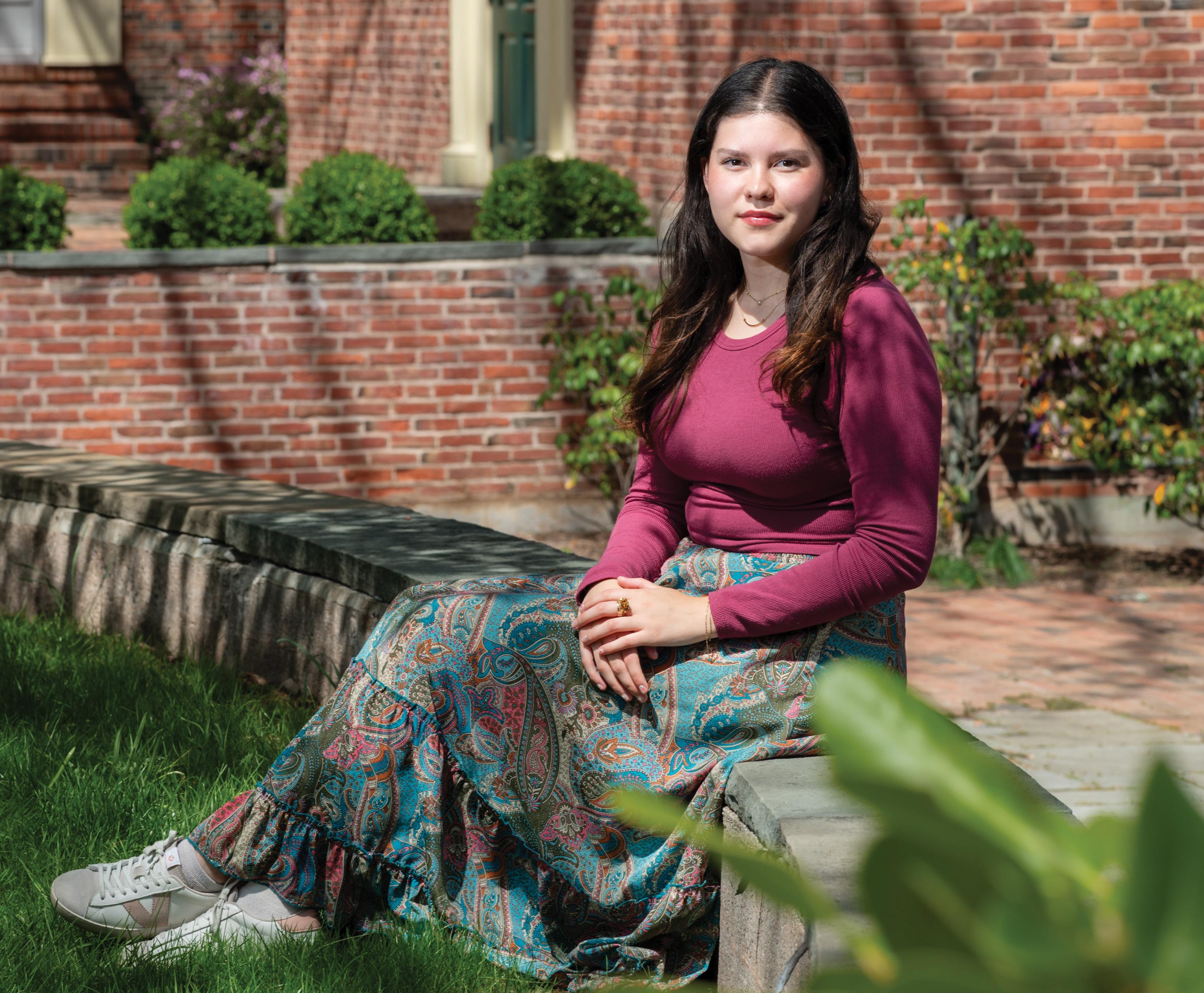
College: Pomona College
Clubs/activities: Cum Laude Society; a president of Pa’lante (affinity group for Hispanic students) for two years; diversity, equity, and inclusion intern; resident assistant in Flagg Hall; assistant editor of The Loom, LC’s literary magazine; Debate Society for four years; cross country team as a senior; Global & Environmental Studies Certificate
On being an RA: She enjoyed the opportunity and says it is not an
“authoritarian relationship” but one of “we’re here to build community together.”
Describe yourself as a freshman and as a senior: “Brave but lost ... and more reserved” as a freshman. As a senior, “more confident, maybe more free, and grateful for all the opportunities.”
Favorite meal at home: Posole (Mexican soup with pork and hominy). She describes it as hearty and delicious. “I could eat it breakfast, lunch, and dinner, winter, summer ...” There also are her mom’s breakfast chilaquiles, a dish made with corn tortillas, eggs, cheese, and enchilada sauce. “On the weekend we have it all the
time for breakfast, and I love it.”
If you were a superhero, which superpower would you have? “Reading minds. I feel I’m good at reading people, but actually being able to would be great.” Her superhero name? “Mind Master.”
If you could invite anyone to dinner, past or present, who would it be? Her late grandfather on her dad’s side. “My family always talks about his story because he was the first to move from Mexico to the U.S., and I’d like to hear how it was for him.”
Years before Andrew Addo was born, his older brothers played in a competitive soccer showcase in the Meadows at Loomis Chaffee. As far and wide as one could see, there was one field after another marked off. If the sight of all those fields was impressive, so was their play. They each ended up playing at Loomis Chaffee.
Andrew grew up hoping that one day he, too, would be playing soccer in the Meadows and wearing a Loomis jersey. Yet when he was young, he sustained an injury that halted his soccer-playing. He turned his athletics attention to swimming. Still, he says, he had that dream. He wanted to be a varsity soccer player.
In his freshman fall at Loomis, Andrew played on the III soccer team. By the time he was a senior, he was on the varsity team, achieving his goal of being a varsity soccer player. He also was a four-year varsity swimmer.
“The Meadows,” he says, “not only symbolizes my growth as an athlete — starting on III and making my way to JV and varsity — but I think it symbolizes my growth overall. What can I do in this place? I am going to figure this out.”
He figured it out. He was selected for a Norton Fellowship as a rising junior at Loomis, going to Ghana in the summer of 2023 to help clean up waste and start a recycling initiative. He had long played classical piano but joined the Jazz Improv Ensemble when he was a junior. He earned induction into the Cum Laude Society for his sustained academic excellence over four years and is going to college at Princeton University with plans to major in engineering.
Beyond the Meadows, behind the tree line, there is a whole other world out there, one that Andrew will continue to experience. But it all started in the Meadows for him: “The Meadows is the most beautiful place
“The
Meadows, not only symbolizes my growth as an athlete — starting on III and making my way to JV and varsity — but I think it symbolizes my growth overall. What can I do in this place? I am going to figure this out.”
— ANDREW ADDO
on earth, I like to say.”
The beach in Prampram, Ghana, was not beautiful when he used to visit family there. The water was choked with plastic waste. For his fellowship, administered by the Norton Family Center for the Common Good, he organized a beach clean-up effort, purchased a machine to grind the collected plastic, and connected with a recycling plant to sell the plastic. He sought to build something more sustainable than a one-time event.
“As I reflect on the [Norton Fellowship], the lessons I learned from the process were invaluable,” Andrew says.
“Going out into the real world and making a difference and applying skills I learned at Loomis.”
When Andrew talks about what he learned at Loomis, he emphasizes “the process of engaging in learning ... learning how to learn.” And he talks about thinking through what you’re doing, asking questions, seeking help — and working hard.
Andrew says boys swimming head coach Grant Gritzmacher was one person who taught him the importance of working hard, that eventually one day the dedication will pay off. Yet, Andrew says, there are some things you cannot control. “Maybe that big day comes and you get sick, so anything can happen, but living by [a commitment
to working hard], you just have to trust that at the end of the day things work out,” Andrew says.
When he is asked what ice cream flavor best describes him, he circles back to learning. Andrew says chocolate chip cookie dough is his favorite, but he would add this and that to it — “because I think I’m a bit of everything.” His ice cream persona reveals itself in his approach to school. “I never wanted my education to be one-dimensional, and I still don’t. I think that is also a reason I came here — the breadth of education and being able to explore pretty much anything you want on the Island. And I’ve discovered new things as I’ve gone along. I try to be as well-rounded as I can because I want to learn as much as I can for as many years as I can, so to describe myself as an ice cream, throw everything in there.”
Well-rounded describes his approach even within his particular areas of interest. Take music, for example. Andrew has been playing piano since he was 5, but classical music. One day in his junior year he was considering how to earn an arts credit, and a friend suggested jazz improvisation. “If he wasn’t there on that day to say that, I would not have done it, and I would have missed out on so much,” Andrew says. “A whole world has opened up to me.”
He says he still enjoys classical music but likes the freedom that jazz gives him to express himself.
“I always say my years at Loomis have been the best four years of my life,” Andrew says. “This truly is a wonderful community, and I think the mission is in practice here: The best self and common good is real. I’ve seen it in myself. I’ve worked to be my best self. I’m not there yet. It’s a lifelong journey, but it does start here.”

College: Princeton University
Clubs/activities/honors: Cum Laude Society, head tour guide, varsity soccer as a senior;,varsity swimming all four years, Norton Fellow, Quantitative Resource Center tutor
On the decision to go to Princeton: “What I really liked was their Metropolis Initiative. … I’ve always been passionate about creating a more sustainable future and wanted to go to a university that values that mission.” The Metropolis Initiative at Princeton was designed to
advance innovations that make cities more sustainable, resilient, and equitable.
Favorite meal at home: Jollof rice, a West African favorite. The other is rice and spinach, which came about when he was young. “I was a very picky eater. My parents tried everything.” One day his father put rice and spinach and olive oil together to create something that to this day is a favorite Sunday dish his mom will make. “On Sunday, after a hard week of learning and studying, I know there will be rice and spinach and salmon. I do have a third thing ... Saturday morning pancakes. It’s a nice family time.”
On his bucket list: “Skydiving. I’m not
exactly sure why [skydiving], but the feeling of the air as you’re going down and then the force of the parachute going up.”
Would you rather live 100 years in the future or 100 in the past? “The future. Part of me doesn’t want to know what’s going to happen, but going back seems trivial [because it has been documented]. One hundred years ago was around the time of the Great Depression. I don’t know that I want to live in that time period. And I know the depression is going to happen and maybe I can stop it, but I don’t know if I want to. Some things are not meant to be touched. Maybe we don’t learn lessons.”
Ollie Iverson spent his freshman year in high school in his home city of San Francisco, California, learning remotely because of COVID-19.
The next year he decided to come to Loomis Chaffee, starting all over once again as a freshman. Within weeks of arriving, he was elected to the Student Council. Ollie also joined the football team that fall although he had never played the sport before. He wanted to make the most of his high school days.
“When I got here, I wanted to dive in head first,” he says. “The reason I wanted to re-do my freshman year — who wants to do five years of high school? — is I did not want to miss an opportunity, let anything pass me by.”
Ollie served on Student Council all four years. “Every Tuesday 6:30 to 7:30,” he says of the commitment to attend the weekly meetings. He played football and lacrosse all four years, too. He was a Shultz Fellow as a junior and co-president of that group as a senior, and he served as a resident assistant in Batchelder Hall this year. The Shultz Fellows, a bi-partisan group that regularly meets to discuss politics and current events, takes its name and inspiration from former U.S. Secretary of State George P. Shultz ’38.
Ollie says the Shultz Fellows experience helped him grow as a person. As he says, politics can be thought of as a “taboo” subject where you’re afraid to say the wrong thing. Shultz changed that, providing the space “to talk about complex, divisive issues on opposite sides of the political spectrum. It has been invaluable for forming opinions, reinforcing opinions, shifting opinions. Everyone’s voice is equal. So you’re always reassessing. It has helped me find a way to talk about politics that is really positive.”
“... there is value in filling a role, doing your job, being the person you need to be, maybe not the person you want to be entirely, recognizing what’s important is the team.”
— OLLIE IVERSON
His athletics journey also taught him lessons. Lacrosse was his sport long before he came to Loomis. He says he had to get accustomed to not “being the guy” on the Loomis lacrosse team. Ollie acknowledges he struggled a bit making the adjustment but “recognized there is value in filling a role, doing your job, being the person you need to be, maybe not the person you want to be entirely, recognizing what’s important is the team. I’ve gotten so much out of lacrosse.”
Football, too. He looked around and thought he might not get on the field given the competition. “Maybe I’ll try to be the kicker,” he thought. He was the team’s punter and place-kicker from sophomore year through senior year. Ollie will attend Tufts University and is a preferred walk-on in football, which means he has a spot on the roster.
The kicker position carries pressure but also is “very zen,” Ollie says. “The way I think about it is hitting golf balls at a driving range. … You just go out there and do your thing. You get in your own head, relax, and do one motion over and over again. ... Do this one thing, do it well, do it the same way. It wasn’t something I thought I would be doing when I came here.”
But one never quite knows everywhere the Loomis journey might lead. Ollie says he almost decided against being a resident assistant (RA), but he stayed true to his promise to himself not to let opportunities pass him by. “I wanted to help make Loomis as great a place as it can be, not just for myself, but for those around me,” he says. “The way I looked at it, even though there was a lot of work I’d have to do, all the work benefits someone, makes the dorm a better place, makes someone else’s experience better. I think in the end that is what pushed me to be an RA.”
Ollie says he is proud of himself for “meeting so many different people, that I put the effort in. I think there is a lot of value in that.”
He also says that along the way he has learned “to look on the bright side [and] to be grateful for what you have.”
When he walked through Grubbs Quadrangle on a warm May afternoon, with spring signifying that Commencement was near, he knew there was still time to take it all in, savor the moment, and be grateful for his Loomis Chaffee experience. “It’s so nice to see a bunch of people you know enjoying the sun,” he says. “I think it is amazing, especially for where I am now on my Loomis journey. And the Senior Path going through the middle, it is so symbolic. Everyone can come together in one space at the end of the year and just enjoy the campus. We’re all sharing this space where we have lived for four years.”
When he arrived on the Island, he says, he was eager, outgoing, and a bit intimidated. When he left, he was still outgoing but also “content and more mature.”

College: Tufts University Clubs/activities/honors: Student Council representative all four years; Shultz Fellow for two years, including co-president as a senior; varsity football and lacrosse all four years; resident assistant in Batchelder Hall; Global & Environmental Studies Certificate
Favorite snack: Watermelon Sour Patch Kids and Tootsie Pops.
If you could invite anyone to dinner, past or present, who would it be?
“My grandfather on my mom’s side. I hear a lot about his story and what he did for our family, how he was resilient in his journey of coming to America [from Russia]. So what that looked like for him and his perspective on where I am now would be interesting.”
Things you can’t live without: “My first instinct is to say my phone, but I don’t want to give that answer. My favorite pen, which was a gift from one of my friends who graduated [in 2024] and I used in class all the time. My flipflops. I really love wearing flipflops. They had to go away in the winter [at Loomis], but back home they are an everyday thing.”
If you were a superhero, what superpower would you have? “I would have super strength ... but I don’t think I would tell anybody. I would use little bits here and there in playing lacrosse or football. ... ‘Oh, you want a gamewinning field goal from your own 20? Yeah, I got you.’”
What flavor ice cream best describes you? My favorite is mint chocolate chip, but I don’t know if that best describes me. Maybe vanilla with a caramel swirl because vanilla is a little bland, and I’m just a regular guy, but I have this swirl of something interesting here and there.”
College: University of Michigan
Clubs/activities/honors: Student Council representative; co-founder of Unwired, a Community Engagement program; a president of PRISM (People Rising in Support of Multiculturalism) and PASA (Pan Asian Student Alliance); resident assistant; Disciplinary Committee member; Hourglass and E-Mag graphics director; member of Advancing Belonging Student Working Group; Richmond Art Center curatorial assistant; Palette Collective co-founder and co-president; Asian Pop Culture Club co-leader; Street Art Club co-founder and co-president; Global & Environmental Studies Certificate; Innovation Trimester (I-Tri)
Describe yourself as a freshman and now as a senior: “Freshman me was shy, frustrated, and craving, as in I wanted something more. As a senior, “initiativeor action-driven, creative, and empathetic.”
Something you’re most proud of: “I’m open-minded, resilient, and impactdriven in terms of what I do and why I want to do it.” She says she enjoys hearing other perspectives, learning from others, encountering ideas that challenge her.
Three things you could not live without: “Family, a computer, and my passport.”
Favorite meal: An Indonesian chicken soup called Soto Ayam. “A comfort meal for sure.”
On choosing the University of Michigan: She will study art and design and also will be able to take advantage of programs in the Ross School of Business and the School of Information. The latter school’s stated goal is to combine information with technology to build a better world. “The collaboration aspect is important to me,” Christine says.
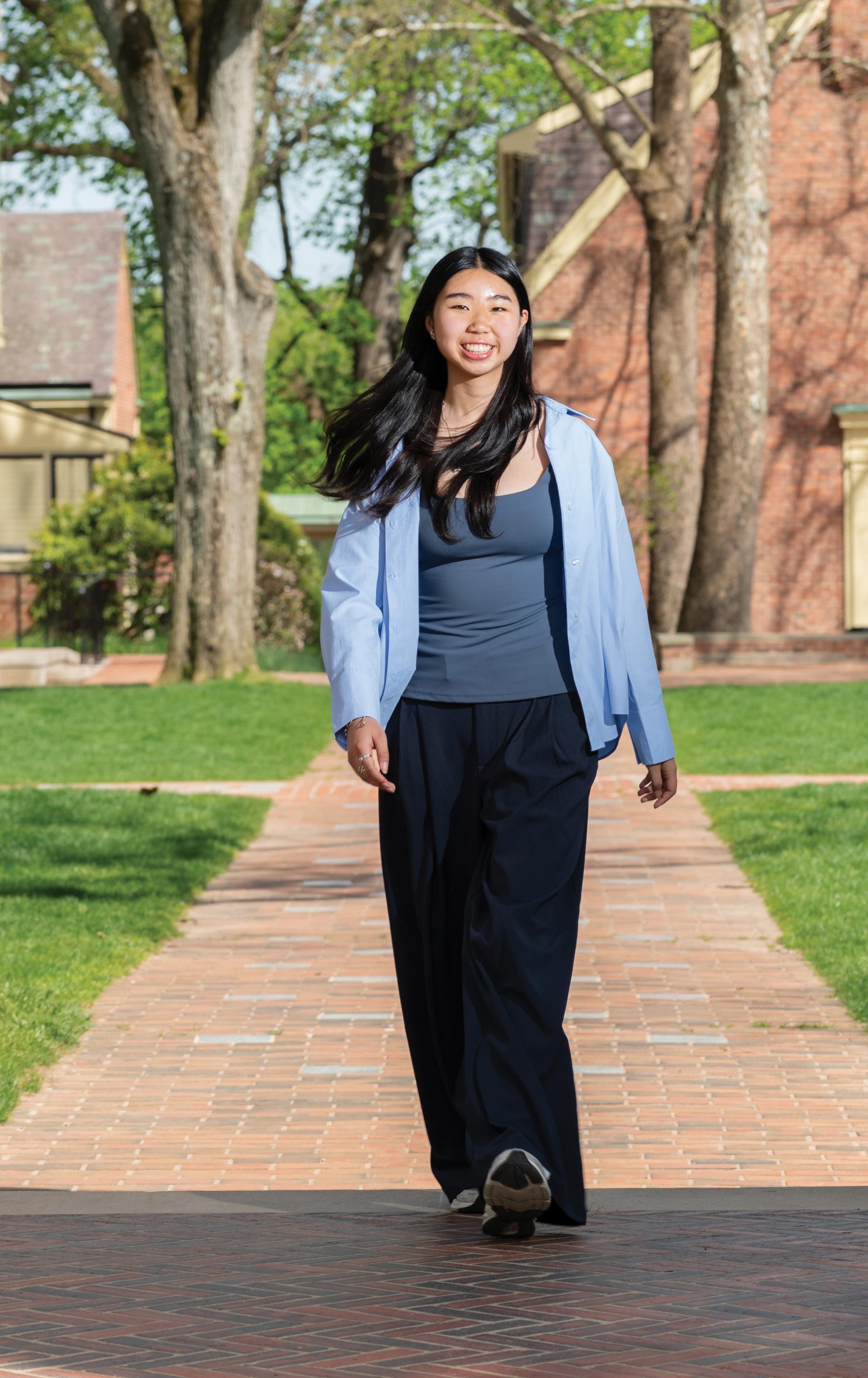
One might easily conclude that “Through Whose Eyes?” — a permanent installation in the Richmond Art Center — was created by an outside artist. But this work came from within, and by a student no less.
Christine Wu’s installation, comprised of multimedia artwork and video, was created for the Loomis Chaffee Global & Environmental Science Certificate program and the College-Level Art Seminar. The exhibit “explores what we see and why in conversations about race, and dives into the different ways to view and understand race from both an American perspective and a global perspective,” Christine wrote in a presentation on the project.
Visual art has long been a passion of Christine’s, as has her involvement with diversity, equity, and inclusion (DEI) efforts. She was a president of PRISM (People Rising in Support of Multiculturalism) and PASA (Pan Asian Student Alliance).
“When it comes to talking about DEI, it should be about celebration — celebrating people and their cultures and perspectives and being respectful of everybody,” Christine says. “And be willing to listen and engage in history, no matter if it’s something uncomfortable or is something familiar because it is all about respect. ... The lens I have been leaning toward is human connection rather than race and topics being politicized. It’s all about people and how you treat them and see them ... and seeing them without a filter and bias is important.”
Other passions for this young woman who has many are product design, innovation, and social entrepreneurship, she says. That’s why, despite the extensive work on the art installation, she also spent her last few months in the Innovation Trimester (I-Tri). I-Tri students step away from their regular
“The lens I have been leaning toward is human connection rather than race and topics being politicized. It’s all about people and how you treat them and see them, ... and seeing them without a filter and bias is important.”
— CHRISTINE WU
classes and daily schedules in their senior spring term to offer innovative solutions to problems faced by local businesses and nonprofit organizations.
One organization the I-Tri students worked with this year was Summit Adaptive Sports, which provides year-round outdoor sports opportunities to athletes with disabilities. Christine’s group recommended the creation of internships to help with marketing and merchandising. She says the organization impressed her. “The work they do relates to accessibility and engaging people who don’t have as much access to activities such as skiing and snowboarding,” Christine says. “To see that a nonprofit can do so much good and make an impact on a community that is not given as many resources as others is eye-opening and inspiring.”
Community was a recurring theme in Christine’s many endeavors as a Loomis Chaffee student. When she arrived at Loomis as a freshman from Hong Kong, she was at a new school in a new country, trying to find her place. Doubts crept in. “But I wanted to persist because my parents had done so much to give me this opportunity,” she says. “I’m an action-driven type of person.” So she ran for Student Council, which
started her on her way to making a difference in many areas of Loomis Chaffee life.
In addition to her involvement in PRISM, PASA, Student Council, and the Center for Diversity, Equity & Inclusion, Christine was a resident assistant in the dorm as a senior and a committed participant in the Community Engagement program throughout her time on the Island. She and classmate Oscar Kong co-founded Unwired, a Community Engagement program where students visited elderly residents of Kimberly Hall South in Windsor. The goal of the program is to foster connection and understanding between generations by talking with one another and working on projects that require no technology, thus the name Unwired. “That is a generation we don’t get a lot of connection to,” Christine says. When she and Oscar started the program, Christine says she found herself “leaving the residence more grateful for what I have, more excited for the opportunities to come, and more appreciative of the uniqueness of people around me.”
This same sentiment sums up Christine’s overall experience at Loomis Chaffee. When she reflects on the last four years, she appreciates all she has learned, the people she has met and come to know, and the resilience, curiosity, and courage she has developed.
She’s gained wisdom too. Among the pearls she’d offer to students just beginning their Loomis journeys: “Your voice is important. … No matter who you are around, it’s important to give your perspective.” Also important is a willingness to risk disappointment, she says. “If there is something you want to achieve and you know it has a purpose ... try to pursue it because in a space like Loomis there is nothing that can really go wrong if you fail.”
College: Tufts University
Activities/clubs/honors: Cum Laude Society, Chamber Singers, Concert Choir, A Cappelicans leader, robotics captain, ultimate Frisbee captain, National Merit Commended Student, Charles Edgar Sellers Faculty Prize, Donald M. Joffray Senior Mathematics Prize, Founders Prize, William C. Card Junior Music Award
Do you like movies that make you laugh or cry or both? “A movie that does both is a pretty great movie, so I’d say both because it isn’t purely sad. You don’t leave feeling depressed, but there are deeper emotions than just a comedy.”
Going through your mind on graduation day: “A lot of joy, but also the bittersweet ending of the Loomis Chaffee experience. ... Thinking a lot about how to keep in contact with friends.”
How would you go about selling hot chocolate on a Florida beach? Two words — “Iced cocoa.”
Favorite event on campus: “BenCon [the Student Council Benefit Concert] is always really, really fun. I might be a little biased because I performed this year and last year. I love the ensemble performances, but there are people not in ensembles who are really talented, and you get to see them.”
On being known for his sweaters: “My sweater wearing just sort of happened. At some point freshman year, I just ordered a bunch of sweaters online and started wearing them periodically. Friends and teachers started getting used to them. ... I think probably my most unique sweater is black with a large Daffy Duck face on the front –– I know Mr. [Kevin] Henderson said it was his favorite. I also really love the purple sweater I have that has a green base and white clouds. That is my advisor’s favorite. I think the silliness and/or bright colors fit with my own silliness and fun.”

When Saul Lawrence is asked one of life’s more important questions — “Which ice cream best describes you?” — he thinks for a few seconds. “I’m trying to analyze it,” he says, “but you know chocolate chip cookie dough is my favorite, and I’m just going to make that work. I think I’m just an average guy, but then there are these chunks of cookie dough, these little bits of kindness.”
This “average guy” was the leader of the A Cappelicans, captain of the outreach section of the robotics team, and captain of the ultimate Frisbee team as a senior. He was one of four seniors to be awarded the Charles Edgar Sellers Faculty Prize, presented on Class Night in recognition of personal achievement and service to the Loomis Chaffee community. Saul also received the Donald M. Joffray Senior Mathematics Prize. As a junior he was awarded a Founders Prize and the William C. Card Junior Music Award. Not bad for an “average guy.”
“Though STEM is in his head,” according to his college advisor, “the arts and music are in his heart. Saul combines these in unique and beautiful ways, and he is a stronger physicist because he is a musician, and a stronger artist because he is a mathematician.”
And those “bits of kindness” that Saul referenced? “I feel really good about trying to be as friendly to people as I can,” he says.
The kindness comes from his family, he says. “I have good examples of that. My mom and dad and brother are very kind, but it’s also being conscious of how others are feeling. I try to make it as easy for others as I can.”
If that kindness comes from his family, so do the music genes. His father, Tim, dean of academics and curriculum, plays multiple string instruments, ranging from the fiddle and mandolin to the banjo and bouzouki, and has performed on and off campus. Saul has taken after his father regarding strings: He started on cello, then added piano and ukulele and then guitar while continuing with vocal groups. He now has a bass, too.
“Though STEM is in his head, the arts and music are in his heart. Saul combines these in unique and beautiful ways, and he is a stronger physicist because he is a musician, and a stronger artist because he is a mathematician.”
— SAUL’S COLLEGE ADVISOR
Saul’s brother, Ben ’20, was a member of the Concert Choir and Chamber Singers. Their mom, Paige Bray, has a penchant for music, too. The family lives in Howe Hall, and music is often heard in the house, frequently being played by family, relatives, or campus friends.
The A Cappelicans practice in Founders Chapel, and that became a special space for Saul even before his freshman year. During middle school, he’d get off the bus and head to his father’s office in Founders Hall, sometimes ending up in the chapel. Just a few years later this long-cherished spot became a central part of his growth.
As have robotics and ultimate Frisbee, where he also has been a leader, with a style that invokes more kindness than in-your-face confrontation.
“I’m more of a poll-the-community kind of leader,” Saul says. “Honestly, something I would need to get better at is being more decisive, saying, ‘We’re going to do this.’ I tend to be more of a guiding force as a leader ... supporting people, trying to bring everybody in.”
One might say he makes sure it all melds together, an apt metaphor for someone who became a certified welder a few summers ago, in part simply because the opportunity presented itself.
Frisbee is an intramural sport at Loomis Chaffee, and when you see kids practicing on the field on Batchelder Road on a nice spring day, there’s little wonder why so many are out there.
“I’ve never been a runner,” Saul says, “but this has been good purely from an exercise standpoint. At its core, there is a spirit to this game. We’re out there having fun, and it is a great community of people.”
Community also is what he found in robotics, which he says introduced him to many of his closest friends through four years of working on outreach and documentation. That role, he says, “has made me more comfortable with public speaking, organizing events, and leadership generally.”
There’s a lot to the role.
“Outreach is responsible for organizing team events, whether workshops, activities, bringing professionals in, or touring companies in industry,” Saul says. “On the documentation side, we compile all of our engineering and programming work over the course of the season — along with our events and their impact — into a 15-page portfolio that we submit to judges at competition. This is what shapes their impression of our team and our work, and qualifies us for awards.”
Saul’s own conduct and spirit of good will has shaped people’s impressions of him in his four years at Loomis. Every year the College Guidance Office surveys rising seniors to gather their comments on their peers, which helps the office get to know students better.
“Saul is one of the most genuine and caring people I know,” one student said in a survey response. “Around campus he is so welcoming. He is open-minded, smart, and wears his heart on his sleeve.”


By Jeff Otterbein
Yearbooks with their senior portraits, group photos, candids from big events, snapshots of everyday life, and other images from September to June help tell the story — the students’ story — of a school year, but there is much more.
“A great yearbook isn’t just a collection of photos; it’s a time capsule that captures the spirit of the year,” says Ro Clark ’97, the yearbook advisor and head of the Visual Arts Department at Loomis Chaffee. “It should document, celebrate, and connect, ensuring every student sees themselves reflected in some way. The best yearbooks stand the test of time by balancing structure and creativity, using strong design principles while leaving room for dynamic layouts and storytelling.”
“What truly makes a yearbook special is that it’s created by students, for students,” she continues. “When their voices shape the design, photography, and writing, it becomes more than just a book, it becomes a reflection of their experiences. That authenticity is what makes it meaningful, both now and years down the road.”

The 1943 Loomiscellany opens with a two-page illustration marking the four-year journey from leaving “home, sweet home” to Commencement. “Sat. Night” and “girls!” illustrate part of what was on the minds of students. War was, too, though, as the yearbook notes that “a large share of seniors will face the Services in some form.”
The 1970 yearbook, Loomiscellany, says Brian Rooney ’70, the co-editor, “was a reflection of what was happening at Loomis and in the country at the time ... and rebellion against tradition and authority. It was a revolution in the streets and the Loomis yearbook.”
The Vietnam War. Civil rights. Women’s rights. A restlessness among youth.
“Traditionally a yearbook is a record of the school year, primarily for the benefit of graduating seniors,” Brian says. “It’s a capsule of biographies, accomplishments, events, and athletic records. Ideally it is a book that you can look at years later and remember who was who, and what happened. Personally, I consult yearbooks more frequently as old friends begin to depart this world.”
But the 1970 Loomiscellany was much different.
“When I enrolled at Loomis, we had to wear jackets and ties to class and meals,” Brian recalls. “Attendance at chapel was required twice during the week and on Sunday. It was a senior privilege to drink coffee. By the end of my senior year, we had staged a revolution against mandatory chapel, the dress code fell, the curriculum became more like a college with choices, and the all-boys Loomis had announced its merger with the all-girls Chaffee.”
“Given everything happening in the larger world, and at Loomis, [co-editor] George Catlin and I decided to blow up the mold of the traditional yearbook and make the 1970 book a reflection of the times rather than a literal record of the year,” Brian
continues. “We wanted people to see a shelf of yearbooks and notice that something happened that year.”
They designed, Brian says “a free-form book of candid photographs. We did away with the formal headshots, biographies, and team pictures. Instead of the Loomis seal on the cover, we put a peace symbol. We wanted it to be a book that said just by its presentation that 1969–70 was a different year in the history of the school.”
Page 150 reprinted an article from The Log, the school newspaper, from May 15, 1970, reflecting the unsettling times.
“People in general and most specifically young people of late, tend to pick up a cause, make ample noise about it, then drop it quite soon afterwards,” reads the article. “It would be very easy to strike for one day, boycott classes, etc., to prove to everybody where we stand. But then what happens the next day? ... and the next? ... and the day after that? Do we just forget about it and look for something else? Daily canvassing, helping out at various headquarters, educating oneself, one’s fellow students and friends, doing such menial jobs as clerical work, or mailing lists — these are all means of expressing one’s moral and political stance. Don’t give anyone any reason to use that cliche: ‘Those crazy kids — they never stick to anything.’”
In the back of that yearbook, in the section reserved for ads, generally taken by businesses, were two anonymous ones: “Let us stop criticizing the younger generation. If we can’t keep up with them, we can at least get behind them. Signed, A Parent.” And: “Do you know what it means to be a Black
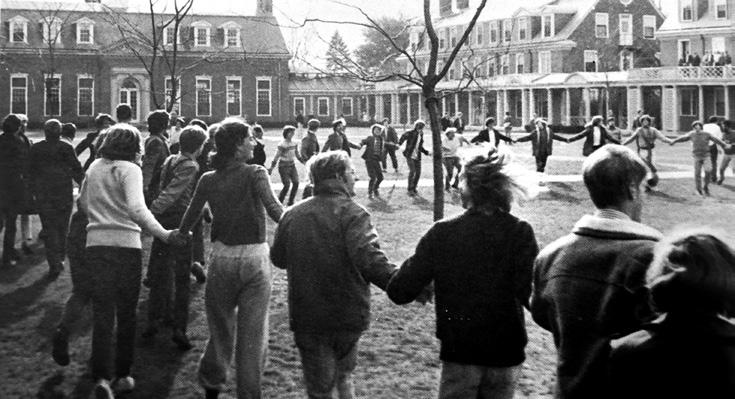
American in this country today?”
Brian and George did not ask anyone’s permission to change the yearbook, which had been formulaic for many years. “George and I talked it over with Jim [‘Grim’] Wilson, the yearbook advisor, who knew everything about putting a book together, and he guided us through reinventing the wheel,” Brian says. “Grim was a true teacher and encouraged us to be creative if that’s what we wanted to do.”
At The Chaffee School, the 1970 Epilogue had what might be best described as a groovy typeface. Lyrics from the song “Get Together” by the Youngbloods adorned the opening pages: “Come on people now, smile on your brother, everybody get together, gonna love one another right now.” By 1972 the Chaffee yearbook had forged a very different path, too. There was no title, nothing on the front or back, just the year on the spine. No section for such things as clubs and athletics. No faculty and staff section. No lists under the names of seniors. No formal photos.
“As I recall,” says Anne Schneider McNulty ’72, “there was some difference of opinion on whether we should have had our formal pictures included. After all, we had gone to the trouble and expense of having Deford Dechert photos taken ... and then they didn’t appear anywhere until our 50th Reunion booklet. But the opinion that the candids better reflected our personalities won out. [The 1971 yearbook] compromised and had a gallery of the portraits in the back of the book. It was an evolution, not a sudden change.”
Anne also says that she “believed that the feeling at the time is that the facts (clubs, athletics, etc.) of our time at Chaffee were less important than the feelings and impressions and desire for expression.”
“During the early ’70s everything was changing: dress codes abolished, no A, B, C letter grades, no study halls, and coeducation,” Anne continues. “The zeitgeist was one of breaking with traditions of all sorts.”
Yearbooks often have dealt with monumental local, national, and world events, including war and its surrounding protests. Right: Some examples from yearbooks during World War II, Vietnam, and the aftermath of 9/11. Left: Weighty moments can bring students together, as in this scene captured in the 1970 Loomiscellany
Often yearbooks reflect what is happening in the world beyond the Island, and some years the pages must reflect indelible, weighty events. The 1964 Loomiscellany paid tribute to John F. Kennedy, the 35th president of the United States, who was assassinated on November 22, 1963, with the famous quote from his inaugural address: “Ask not what your country can do for you; ask what you can do for your country.” The yearbook noted, “It seemed like any other Friday — it was as most of us came out of the Dining Hall from lunch that we all heard the almost unbelievable news.”
The events of September 11, 2001, were so weighty that the dedication on the 2002 Loomis Chaffee yearbook, The Confluence, addressed them in a four-page opening spread titled “Courage and Compassion.” That was the first day of the school year,

but then the news began circulating between first and second periods. “I remember walking into Palmer after class. ... There were 20 people packed into our social room and my best friends were staring at the TV, crying,” wrote then-senior Sandra Kwan ’02. Sophomore Dan Schacter ’04 wrote: “From people crying and others like me, just staring, the fear and shock that filled the SNUG, was utterly palpable.” In the hours, days, and weeks to come, the school pulled together, noted Student Council president Jacobs Sills ’02 in that dedication. “I saw interested and changed students; I saw thousands of dollars raised for relief efforts; I saw hundreds of students lined in the quad to partake in a candlelight vigil; I saw the students come together for a cause


much greater than their own individual lives,” he wrote.
The spirit of community members coming together for something bigger than themselves is a recurring theme in the Loomis, Chaffee, and Loomis Chaffee yearbooks. The 1918 edition of Loomiscellany carried the headline “Patriotic Service,” under which was the story of Loomis’ reaction “as the more rigorous war conditions began to impress themselves on this country last fall.”
Conservation of food, including “eating about one-fourth as much flour as was normally our portion,” monetary donations, formation of the Red Cross Society and the Thrift Club, whose goal was to work on the Loomis farm “at least one afternoon per week.”
“We have given up many things,” noted the 1918 yearbook, “and contributed much of our own money, but, when one thinks about it, he finds that he has missed nothing. Only the most wasteful of luxuries have been taken from us thus far, and we must realize our past efforts have been very small, and that our future efforts must be many more







National and world events, cultural upheaval, and societal shifts have left their marks — some overt, some stylistic — on Loomis Chaffee yearbooks across the decades. But like any meaningful time capsule, the yearbooks also reflect the most local and time-stamped events and trends, those of the students and the campus as they were during discreet nine-month periods in the life of the school. Unlike news that shakes the world, these Island-specific details might otherwise be unchronicled and lost were it not for the yearbook.
From athletics events to the performing and visual arts, from occasions big and small, students each year pack the pages with the life of the school, and along the way have much fun doing so. Some years diaries appear as a way of solidifying memories.
An entry in Loomiscellany from September 30, 1919: Mr. Batchelder in assembly, “All those not playing football, report to the corn field for work.” School goes out for football.
From October 19, 1919: Our invincible eleven smears the Wesleyan 2nds with 31-0 plaster. And the last entry of that year’s diary: LOOMISCELLANY COMES OUT. Mr. Batchelder and Howe report to sanitarium.
From the 1934 Loomiscellany: The senior porches are well crowded, as the eternal contest of seeing who can get the best tan is now at its



After the schools merged, the yearbooks became one, too, renamed Confluence for the joining of the Farmington River and the Connecticut River beyond the Meadows. The ’74 class was the first in which the girls had spent all four years on the Island.
Loomis Yearbook Loomiscellany
Chaffee Yearbook Epilogue
Loomis Chaffee Yearbook Confluence
height, with most of the contestants appearing a painful but martyred red.
An entry in Loomiscellany from February: Saturday night marks the term’s second informal dance and Sunday breakfast is filled with tales of Terry’s budding romance.
And from June 1950: Rabbit Foster cavorts to Thursday breakfast in shorts, but Mr. Stookins thwarts him and deports him for the Dining Hall.
Graduation day is the end line — at school anyway — but it’s just the start of all that comes next.
Senior superlatives appear in many yearbooks, all in good fun, unless you land in one, we suppose. Consider those in the 1990 Confluence: “Talks most, says least,” and “Laziest” might not be the most coveted accolades. But maybe “Best Dressed” and “Most Likely To Succeed” are.
The 1936 Epilogue has a class prophecy that starts: “Mrs. Finley, sitting in a chair, rather drowsily murmurs, ‘That senior class. I’ve just about given up hope for them. I wonder what they’ll be like 10 years from now.’ Heaves an unhappy, worried sigh, slides down in chair, and closes eyes. As she dreams, she sees ...” One of the things she sees is Ella
Tambussi ’36 running for mayor of Windsor Locks. Ella Tambussi Grasso would become the 83rd governor of Connecticut from 1975 to 1980. She was the first woman to become governor in the United States in her own right, not as a successor to her husband.
Class wills also could be found in Epilogues From 1949: “Jamie leaves her shorts on the floor of the Loomis gym.” ... “Faith was in too much of a hurry to leave anything.”
Graduation day is the end line — at school anyway — but it’s just the start of all that comes next.
Tucked inside a 1933 Epilogue is a photo from June 9 of that year from The Hartford Daily Times: “Class of Ten Graduated From Chaffee School” reads the headline above the photo. Each girl has a bouquet of flowers and a floor-length white gown.
The 1962 Epilogue provides a succinct tale of the graduates’ four years. When the girls came in as freshmen: “The class gets its first glimpse of Chaffee life at the Freshman Tea. We meet the student council, and Mrs. Erickson [head of school Barbara Erickson] speaks to us about the standards which Chaffee upholds.” When those same girls are seniors, they “hold their informal dance with a genuine rock ’n’ roll band; the twist makes the evening a great success.”


Dedications are a big part of the history of yearbooks. Fittingly, the first Loomiscellany in 1916 was dedicated to “Mr. and Mrs. Batchelder, our beloved friends.”
Many administrators, faculty, and staff leave their mark on their school, and often the yearbook is dedicated to more than one. Such was the case in 1930, when “in appreciation of their keen interest in the literary and artistic side of Loomis life and their stimulus to the Cercle Français, Dramatic Club, and Art Class, this volume is respectfully dedicated to Monsieur and Madame Chéruy.” Artist Germaine Rouget Chéruy left Paris, France, to join legendary French teacher René Chéruy on the Island in 1926, shortly after the couple married. Madame Chéruy championed a vibrant art program for Loomis and Chaffee. Monsieur Chéruy also was an artist and had served as secretary to French sculptor Auguste Rodin.
Inside the 1954 Epilogue is a photo of a book with glasses and a pipe resting on it. “We, the Class of 1954, in deep appreciation of the patient understanding, their generous assistance, and their good humor, dedicate our yearbook to our fathers.”
The 1949 Epilogue dedicates the book thusly: “We, the Class of 1949, in deep and lasting appreciation of her infinite wisdom and


understanding and humor in guiding us both personally and as a class, dedicate our yearbook to Mrs. Sellers.” Florence Sellers was director of The Chaffee School from 1936 to 1954.
And the 1919 Loomiscellany started with a two-page memorial tribute to John Metcalf Taylor, calling his death on November 6, 1918, “an incalculable loss.” He had been a Trustee since 1901 and president of the Board since 1904. The article went on to say that “no hour was too busy for him to talk of Loomis affairs, no detail too trivial for his attention.”
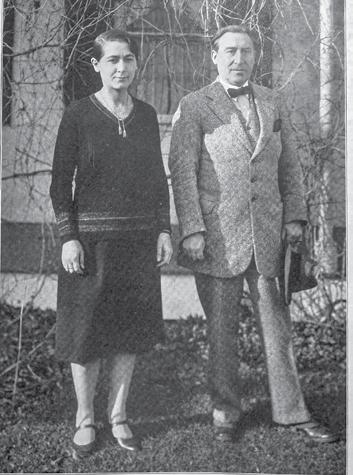
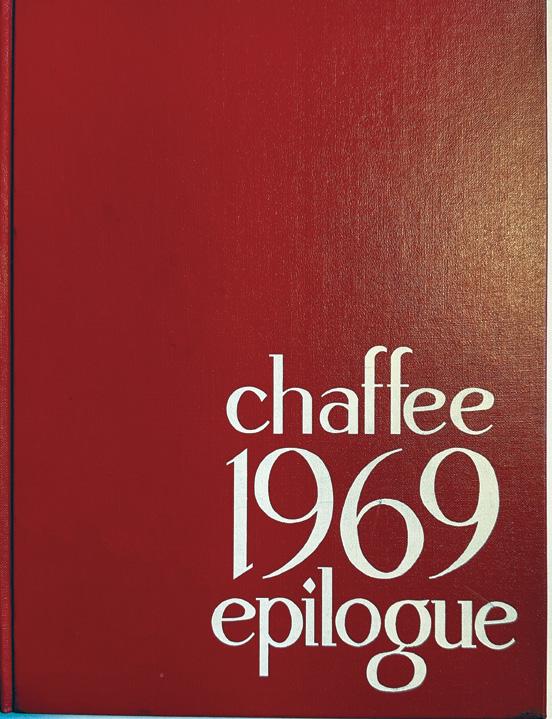

The first dorm had been named for him when the school opened in 1914, and today the nose of John Metcalf Taylor’s plaque outside Taylor Hall has been rubbed so much — for good luck — that its bronze luster shines.
The 2010 Loomiscellany was dedicated to the Physical Plant, which keeps “the Island afloat.” From the little things (“they put together our bunkbeds”) to the big things like renovation and maintenance, the crew did it all then just as it does now.

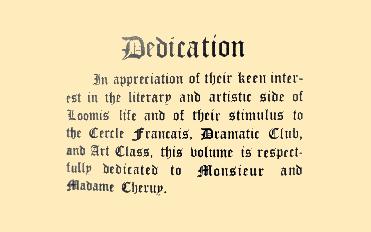
Left: Germaine and René Chéruy, to whom the 1930 Loomiscellany was dedicated.
Above: A book, eyeglasses, and a pipe might have invoked dear old dad relaxing with a good book at night: The 1954 Epilogue dedication was to the Chaffee girls’ fathers.



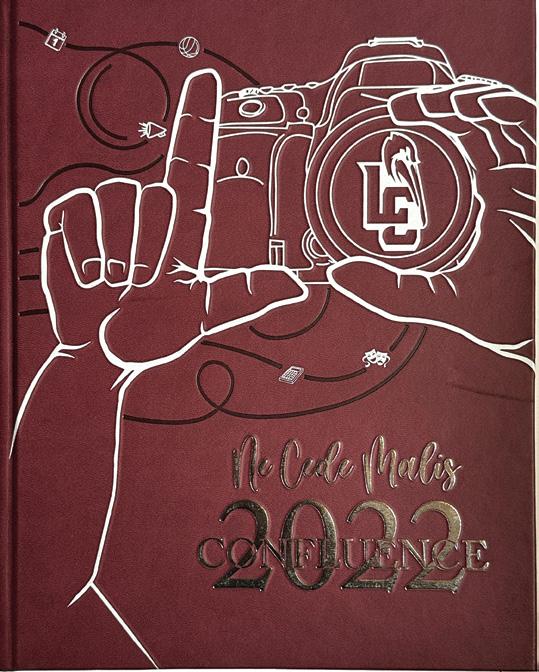




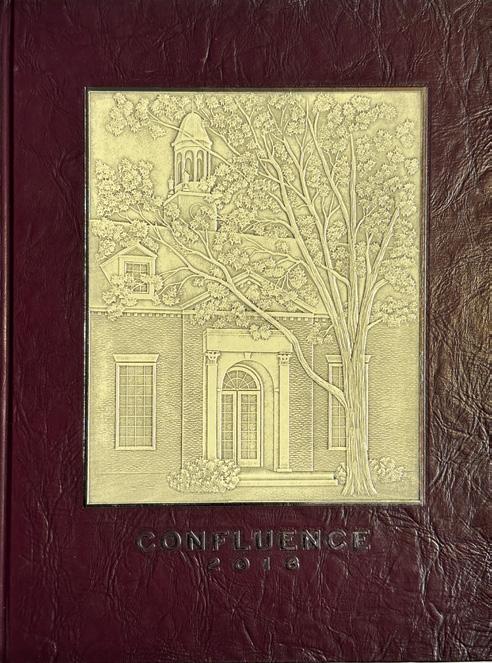
The senior portraits and accompanying text of Richmond family members spanning three generations illustrate changes in formality and personal expression in yearbooks across decades. In addition to Howard ’35, Elizabeth ’80, and Anita ’16, Pelicans in the Richmond family include Larry ’72, Frank ’71, Jason ’99, Madelynne ’15, incoming freshman Benjamin, Spencer Richmond Schulman ’11, and Harrison Richmond Schulman ’13.

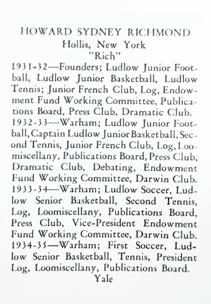
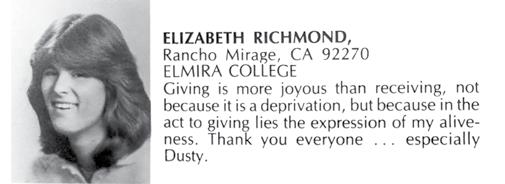
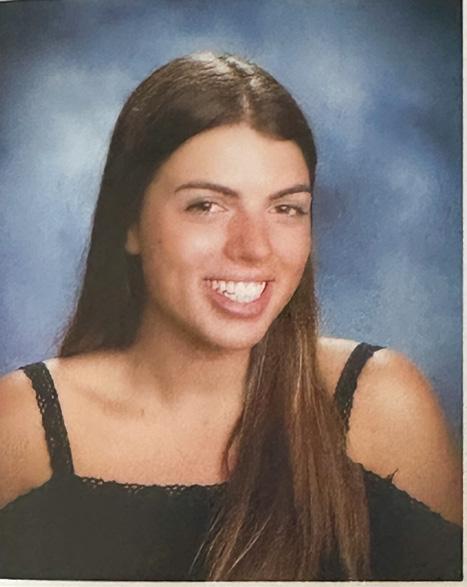
Anita Louise Richmond Schulman
Tarzana, CA
United States
University of California, Berkley
Class President, Head Tour Guide, Chipotle Club (President)

The words accompanying senior portraits have had various iterations:
Straightforward: The 1948 Loomiscellany lists the name and address of each senior with any nicknames they went by and then breaks down by school year what they did, which gives a sense of the times, too. As in: “Day Fellow, Wolcott Senior Football, Wolcott Rifle, Wolcott Track.” Or this one: “Maher House, Work Squad, Hockey Manager, Reforestation Group, Stamp Club.”
Straightforward with a Twist: Under the senior photos in the 1968 Loomiscellany the students’ various activities were listed. Then, under their names were a few paragraphs that took liberties, such as this one: “Fortunately, John avoided, throughout his Loomis career, a justified case of swelled head, possibly because the collarbone he broke junior year would not support one.”
I get that ... but I don’t get this: The 1954 Epilogue for the Chaffee seniors has a portrait and a candid, and some words about the girl. Some, you get. Some, well, you had to be there. One reads in part: “Quiet efficiency ... expressive face ... immovable will ... ‘I’m not mad’ ... perpetual misser of Chaffee bus ... ardent Yankee fans ... desire to be teacher ... ‘Put your glasses on Martha.’ ... industrious secretary-treasurer of class.”
You definitely had to be there: From a segment next to a portrait in the 1985 Confluence: “Leave already? I’ve been having the time of my life. Honey-oney-bunny-sunny (etc.). Depeche Mode. Yaz + UB40. RIP Spencer van. I wuv you Awittabus, bestest buddy.”
Thank yous: Some years seniors remembered those who got them to the finish line. Wrote one graduate in a Confluence: “Life is full of surprises and so is Loomis. To me, Loomis is a harbor against the furies of the thunderstorm, and the home of my eternal friends and mentors.”
Quotes: From time to time, the text under a senior portrait begins with a quote. This from the 2020 Confluence: “How lucky am I to have something that makes saying goodbye so hard.” It is a quote from the noted philosopher Winnie The Pooh.
Mathematics teacher Elizabeth Speirs’s copy of the 1952 Epilogue contains messages of gratitude from her students, handwritten next to their senior portraits.

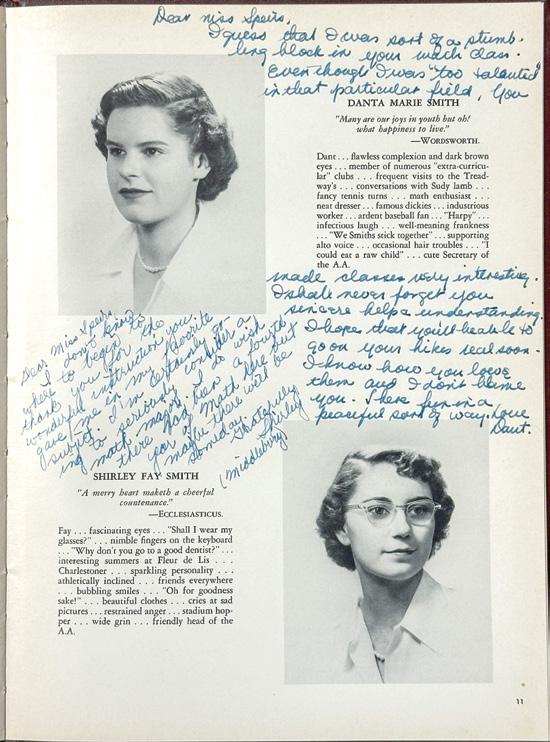
Advertisements have morphed over the years. At first, businesses had their say in the back of the book. At some point along came shout-outs from family.
Ads reflected their eras. The 1918 yearbook notes: “$5 Down Places An EDEN Electric Washing and Wringing Machine In Your Home. Baldwin-Stewart Electric Co., 210 Pearl Street, Hartford, Conn.”
The 1919 Loomiscellany carried an ad, as was customary in the early days, for the school itself with Mr. Batchelder boasting of all the school offered — “progressive studies preparatory to agriculture, business, scientific and academic colleges ... a large airy gym and two athletic fields ... laboratories, a library, classrooms, and a music studio” in Founders Hall, which had been completed in 1916. “Every effort,” he said, “is made to cultivate self-reliance and individual initiative.” And, noted Mr. Batchelder, the school farm of 100 acres provided “a laboratory for agricultural work, and milk and cream produced under ideal conditions.”
A 1964 ad simply stated “Mr. P.O.M.G.” No explanation, but then again for many in the Hartford, Conn., area, there was none needed.
Mr. P.O.M.G. was Bill Savitt, a Hartford jeweler known as the King of Diamonds. His slogan stood for Peace Of Mind Guarantee.
Mr. Savitt also formed the Savitt Gems, a semi-pro baseball team, and ever the salesman, he brought the likes of Babe Ruth to Hartford.
In 1930, all you had to dial was 74 to reach Windsor Garage Inc. on Central Street, which sold cars, ranging from Packards to Hudsons and Essexes. Dinosaurs all, but top of the line at the time. By the 1950 yearbook Windsor Garage was a Ford and Mercury dealer. A Mercury is no more but lasted until 2011.


To our Graceful Bunhead, You’ve blossomed into an intelligent, funny, compassionate, imaginative and beautiful young woman. We cannot wait to watch you continue to grow!
Much Love Always, Mom, Dad and Katie
About 25 years ago yearbook advertisements began to shift away from business promotions to family honoring that year’s graduates, sometimes including a photo of the grad as a toddler and always including congratulatory words.

Above and below: For years, the back of the yearbook was a place to find local advertisements like these for the Windsor Garage in 1930 and a local bank 40 years later. Left: In more recent years, family shout-outs to seniors have filled the back of the book.

The 1972 Chaffee yearbook took a different tact in its presentation of seniors. Anne Schneider McNulty ’72 recalls that the section was “assembled by telling each classmate that they had the one page to do whatever they wanted.”
Some people had others write a description of them. She asked Kitty Johnson ’72 to write hers, which in part said, “Anne, the artist and cartoonist at large who livened up my notebooks and kept me happily amused in chemistry class.” Anne included some cartoon drawings on her page. “Some people just chose quotes, many had classmates write a description. There was no rule.”
The tribute for Kitty, written by Pam Adams ’73, in part read: “Kitty is a beautiful person. Besides having that amazing sense of humor, she is understanding and compassionate. She was mommy to everyone, friend to all, and she never stopped giving of herself, from the day she arrived until the day she left.”
And Kitty (at right in the 1972 Epilogue) did return and is still giving of herself. She is the senior faculty member at Loomis Chaffee, having taught at the school for 46 years, and counting.

Yearbooks often have served as a record of who did what sports, joined what clubs, and participated in which extracurriculars. The accompanying summaries of the teams’ seasons and the clubs’ activities add memories to the time capsule.
The 1916 football team prepared for its season in one week; fear of an infantile paralysis epidemic delayed school openings across the Northeast by almost a month, according to an article in the school archives. Loomis defeated the more experienced Yale freshman team 6-0, the Loomiscellany calling the victory one of “courage and skill.”
The 1929–30 school year was the first in which fencing was recognized as a letter sport by the Athletic Association, notes the 1930 Loomiscellany. But the
from the measles.” The measles vaccine was not introduced until 1963.
The very definition of team first — as the saying goes, there is no “i” in “team” — has played out many times, and in the final meet of the 1971 season, four
Gatorade Runner of the Year in Connecticut. In the winter the girls hockey team won the New England Prep School Athletic Conference (NEPSAC) Elite Eight championship, its first since 1989; and the girls basketball team won its fourth straight NEPSAC Class A title, finishing with a

second paragraph of the article is what catches the eye: “Because of an unfortunate incident in which, by accident, some school property was damaged, the fencing squad was discontinued after its first match.” Loomis lost that match — and the season, for reasons left unsaid. The fencing team was back in 1931, finishing with a 2-2 record. And by 1935, The Loomiscellany noted that the team for the second time in four years won the Connecticut Interscholastic League “in spite of the handicap all teams suffered
members of the Loomis cross country team (Jeff Rothenberg ’73, Jay Lumbert ’72, David Low ’72 and Peter Ogilby ’73) joined hands to cross the finish line in a four-way tie.
This year’s Confluence has much to celebrate from the fields and courts. In the fall, the girls cross country team won its fourth consecutive Founders League title. The boys team also won the Founders League championship, and junior Alex Fisher was named
school-record 25 wins. In the spring the boys lacrosse team won the Western New England Division I championship. In all, teams won eight Founders League championships in the 2024-25 school year.
Clubs have been part of school life from the outset, changing as the times change. The main attractions offered by the Agriculture Society, notes the 1923 Loomiscellany, “were the poultry show in the first term, and a sheep-shearing contest held in the school gymnasium.” Winthrop Rockefeller, who later became the 37th governor of Arkansas, was secretarytreasurer of the Political Club in 1930.
Then, as now, if someone has a passion for starting a club, they can make it happen. The Radio Club was formed in 1934, “chiefly through the efforts and interest of Atchley,” that year’s Loomiscellany notes. Atchley




would be Dana W. Atchley Jr. ’35. “The club now operates the amateur radio station W1HKK in the cupola of Founders Hall,” notes the yearbook. “The apparatus is a simple but efficient home-made affair.” Two-way conversations as far as California took place.
The Darwin Club, still around today, began in the 1918–19 school year, and the 1920 Loomiscellany calls it “one of the largest and most popular organizations in the school.”
Loomis’ long history in the visual and performing arts also emerges from the pages of yearbooks.
prolific performers, putting on six shows of one kind or another in 1933. That name pops up again, the future governor of Connecticut. The secretary of the group was Ella Tambussi. In one show, according to the Epilogue, “Nancy Funk played the scripture-quoting, Scotch-drinking person. (The props in this case were weak tea provided by the Home Ec class.)” The Chaffers also put on a play during Class Day.
In the winter of 1919, the Loomis Players were founded, putting on a revue “comprising several short and clever skits” in the fall; a one-act piece written by H.P. Carter ’20 and a faculty play, A Night at an Inn, in the winter; and a

dance orchestras, concert orchestras, glee clubs, a cappella groups, chamber singers, jazz bands, concert choir, wind ensemble — you name it. The 1935 Loomiscellany tells of all the engagements of the Dance Orchestra, on and off campus, noting that “it is again chosen to play on a trans-Atlantic boat, and members will have 17 glorious days in Scotland and England.”

with a note from the Confluence editors: “With an atypical year due to COVID-19, the yearbook staff aimed to capture both the oddities and normalcies to create a comprehensive time capsule that represents the year accurately and pleasantly. We acknowledge that some tradition may have been lost, only to formulate new ones.” Adhering to the show-biz phrase “the show must go on,” for instance, the spring musical, The 25th Annual Putnam County Spelling Bee, was performed outside.
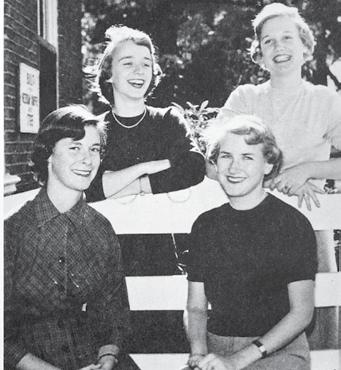

vaudeville show and two short plays in the spring. There might have been more in the winter, but the “uninterrupted reign of the scarlet fever ‘bug’ prevented staging of anything elaborate.”
The 2020 Confluence for the 2019–20 school year contained sections on fall and winter sports but nothing on spring sports as, by March 2020, the pandemic had shut down schools except for remote programming. Students did not return to Loomis from March break, and spring sports were canceled everywhere. The yearbook notes: “Due to COVID-19, the Pelicans were unable to fly back to their nest for spring term.”

The stage always has been an important place for the schools, before and after they merged. Plays, musicals, black box performances abound today. And in 1933 Chaffee outdid itself. The Chaffers were
Just a bit more than 100 years later, another “bug” prevented many things from happening. The 2021 Confluence is filled with photos of everyone in protective masks, a signature of the COVID-19 pandemic. The 2021 yearbook opens
1: The 2022–23 Student Council
2: The 1935 Dance Orchestra, whose performance locales included a trans-Atlantic ship to Scotland and England
3: The cast of Once Upon a Mattress, which toured in China in 1987
4: The 2024 girls varsity basketball team, the New England prep school Class A champion
5: The small but mighty Epilogue staff in 1955
6: The Debate Society in 2023
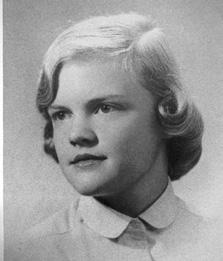
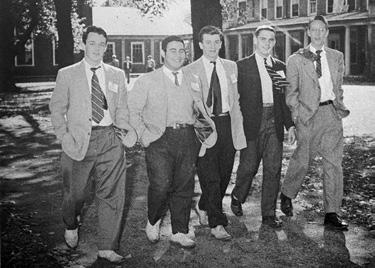





1–8 Changes in attire and hairstyles of the times are evident in yearbook photos from the 1950s to 2019. 9–10 Reflecting the growth of the school and the evolution of education, the Modern & Classical Languages Department in 2020 numbered 19 teachers, compared to the 16 members of the school’s entire faculty in 1920. 11–12 “Dressing up” had different definitions at Prom in 2013 and a formal dance in 1952. 13–15 Gathering as a community for a meal has always been a tradition, whether for a senior class dinner on Grubbs Quadrangle in 2018, a fall sports dinner in Loomis Hall in 1956, or a class dinner in the Scanlan Campus Center in 2022.
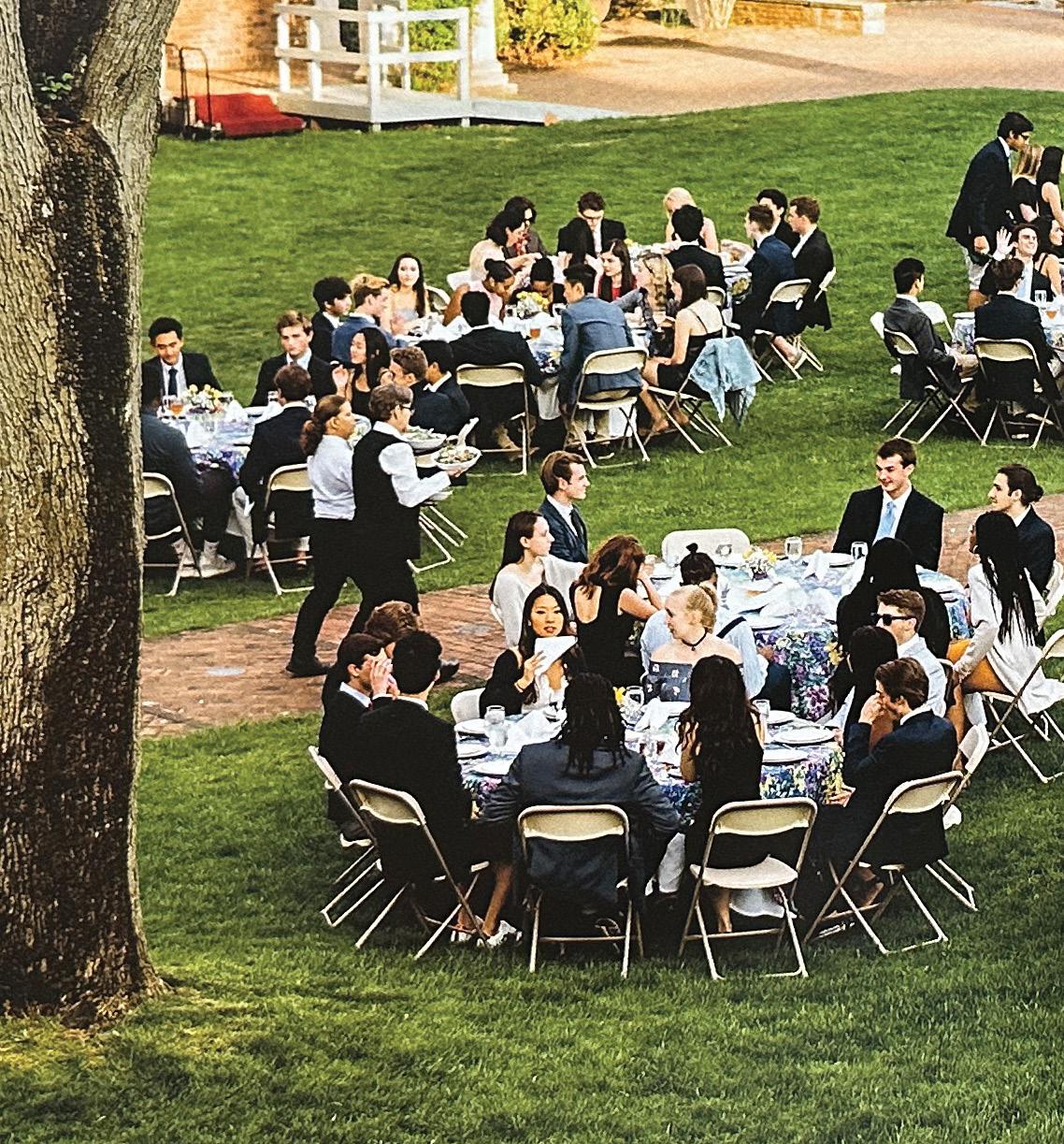
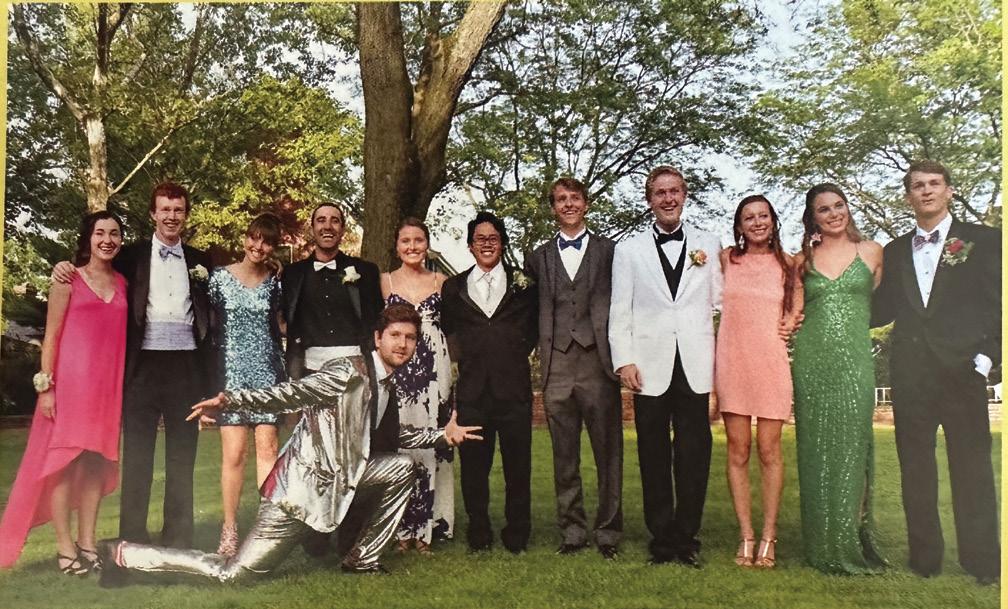

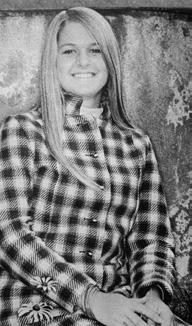

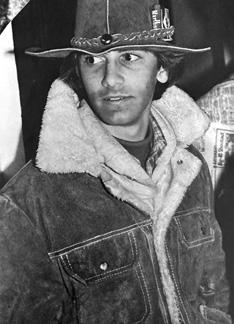


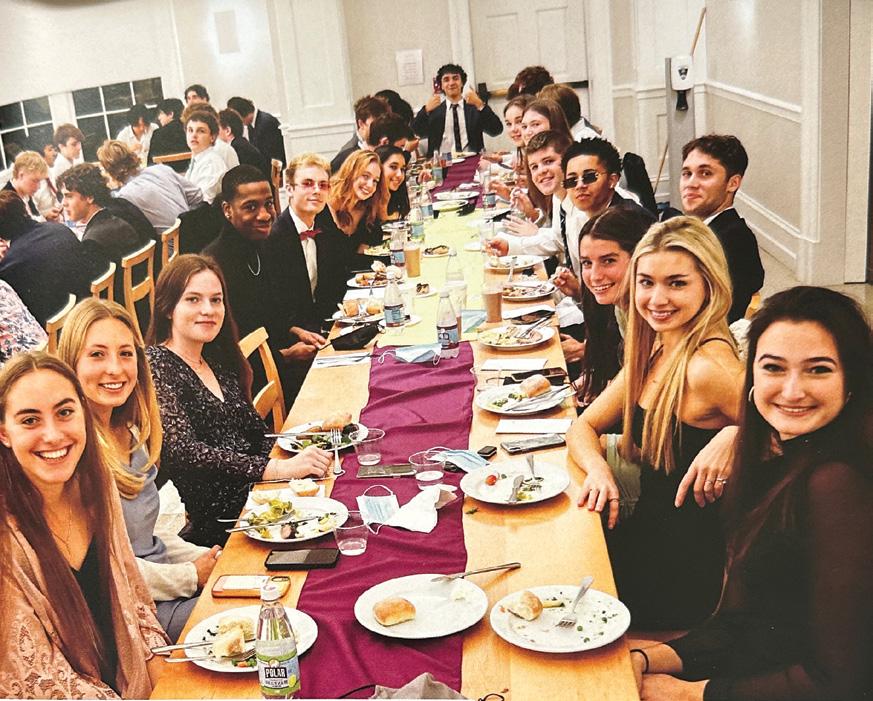
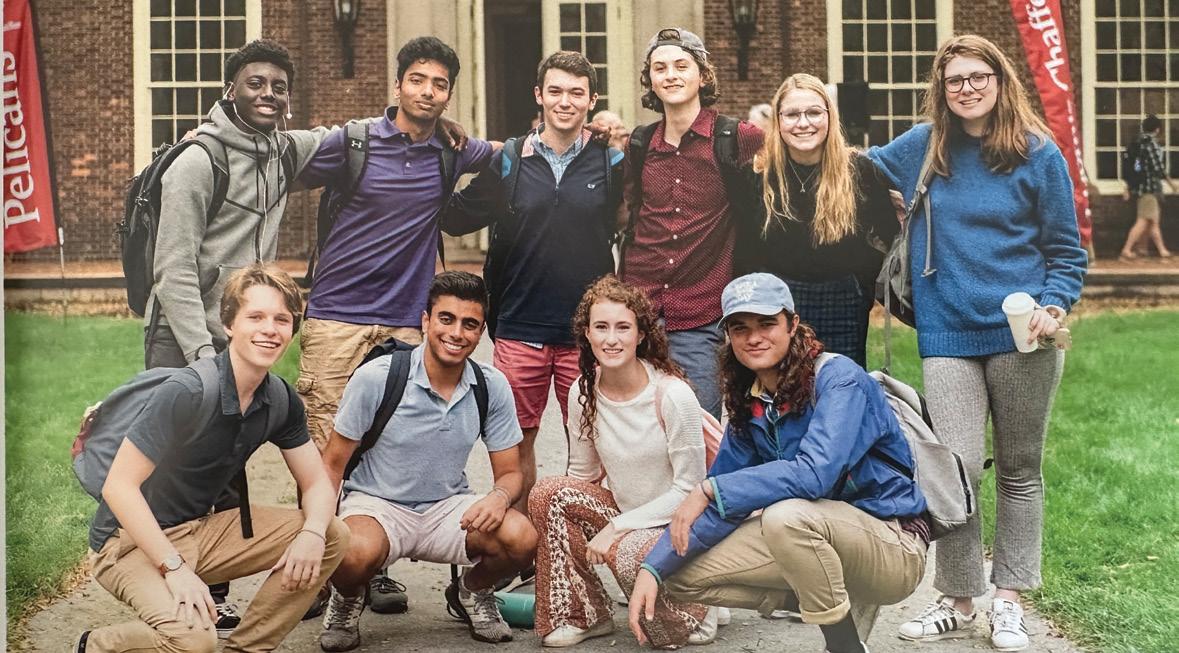
... the more they stay the same.
16–17 Seasonal flooding of the Meadows, as pictured in the 2024 Confluence and the 1972 Epilogue (inset), hasn’t heeded changes in fashions or trends of the times.

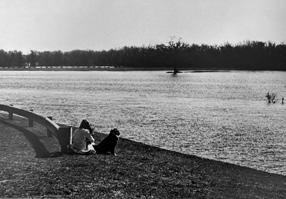
Often a yearbook carries a parting message at the end from the yearbook editor and the yearbook advisor. In 1990 the advisor’s last words included these: “Two nights a week from September ’til June, 50 or so zealots toiled to produce the voluminous 1990 Confluence you now hold in your hands. In capturing the 75th anniversary of our school, the staff shot and sorted 4,100-plus photographs, created at least 800 practice layouts, completed 416 final layouts, and spent a collective 2,700 hours in the process!”
Indeed, the yearbook does not magically appear. It is created by students for students, and plenty of them. And a devoted advisor. “Thanks for giving me both guidance & freedom at all the right times,” wrote Tory Hoen, the 2002 editor of the Confluence and
now a novelist, to yearbook advisor and teacher Rachel Engelke.
The 1970 Loomiscellany, with its freeform design, uncaptioned candids, and peacesymbol cover image, turned things upside down to match the world at the time.
“Looking back on it,” Brian says, “I am both glad that we did it and regretful. It accomplished what we had intended, reflecting a turbulent year in troubled times. But as the years wear on, it is useless as a literal record of the year you can consult to refresh your memory about people and actual events. It is an impression of the times, but not a record. Overall, I am happy we made a different book, but I never thought it should have been a model for years to follow.”

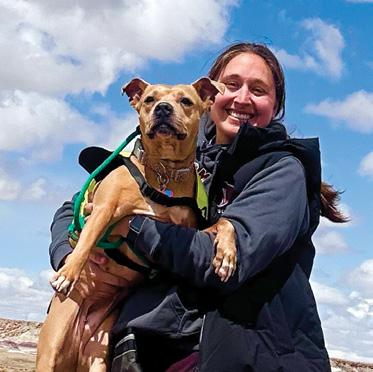
Biology and math teacher Liz Bucceri ’07 and her dog, Clara, embarked on a sabbatical road trip this spring, exploring national and state parks, forests, seashores, and wildlife refuges, as well as a few not-to-be-missed roadside attractions, as they traveled an 8,500-mile route around the continental United States. They began their journey from Palmer Hall on March 14, as soon as Liz wrapped up coaching the girls swimming and diving team for the season and completed her winter-term grading, and they returned home to the Island on May 23, in time for Commencement. Liz chronicled her two-month adventure for us in the form of “postcard” journal entries.



03.14
Assateague Island in Virginia was the first stop on my two-month adventure. After many hours of traffic, I finally arrived late at my Airbnb, Le Petit Paradis. The next day, despite the rain, I explored Assateague Island and the Chincoteague National Wildlife Refuge. I’d added it to my list for the wild ponies — but they kept their distance, and I saw them only from afar. What’s really cool is that these horses are believed to be descendants of the first brought to the island in the late 1600s — possibly survivors of a shipwreck — and have adapted to life in this harsh coastal environment, making them different than the domesticated horses most of us know today.
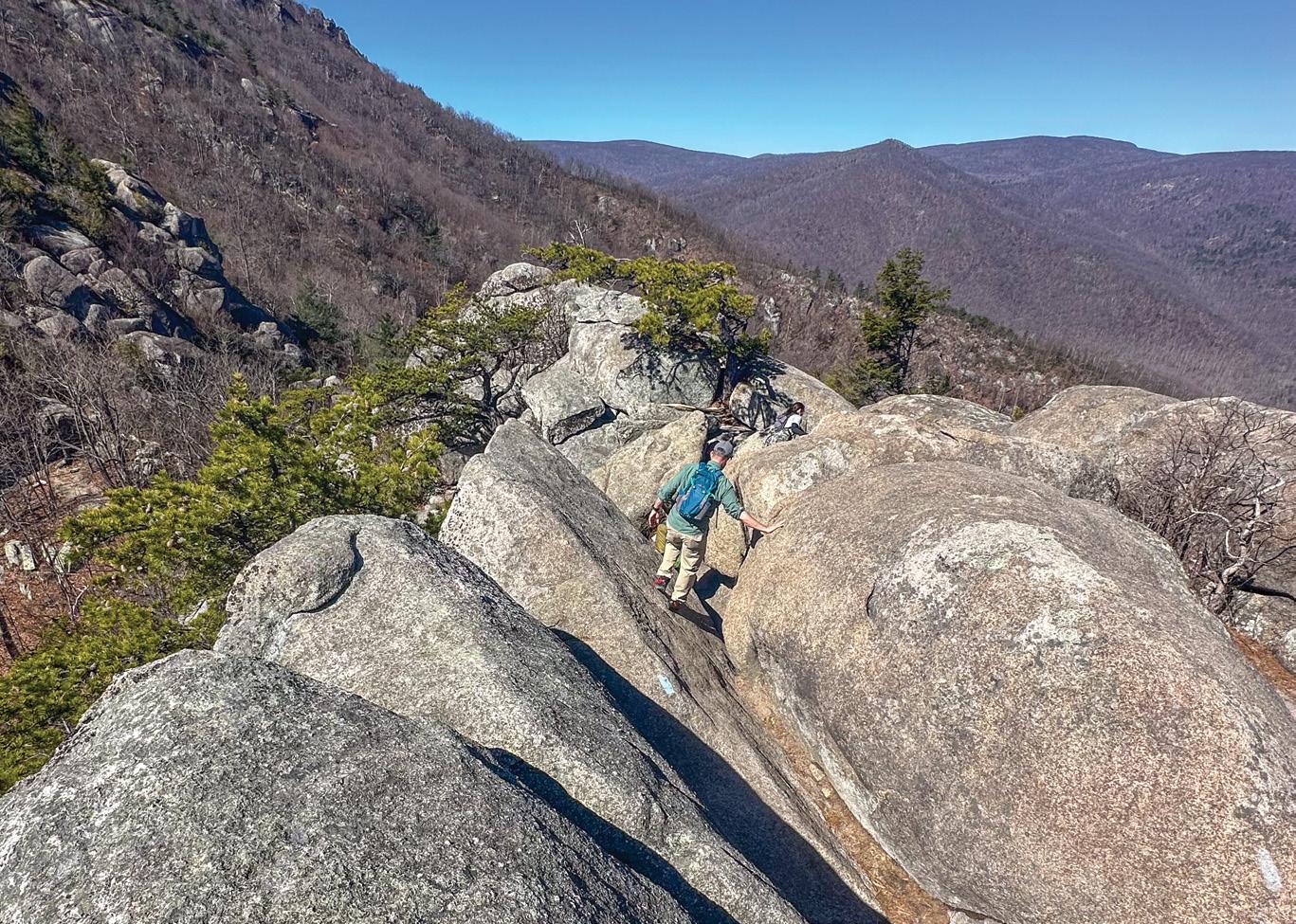

My first national park of the trip — Shenandoah — and it did not disappoint! With 500 miles of trails, Clara and I kicked things off with a hike to Rapidan Camp, once President Herbert Hoover’s rustic retreat. The next day, I tackled Old Rag solo, a challenging hike full of rock scrambles and sweeping 360-degree views. Afterward, I refueled with Peanut Butter Overload from Grammie’s Ice Cream, while Clara enjoyed her first-ever doggie bowl — and loved it!


After visiting fellow Pelicans Ellie Beale ’07 and Zoe Donaldson ’07 in Durham, North Carolina, and retired faculty members Bob and Ginny DeConinck in Hilton Head, South Carolina, I made my way across the Florida panhandle to Gulf Islands National Seashore in Pensacola. (Shout-out to my passenger princess, former faculty colleague Lil Corman, who joined me in South Carolina and part of this leg!) Once in the park, I explored the old fort, which served as protection for Pensacola Bay during the Civil War, and the pristine and scenic beach road. Then Clara and I set up our first car camp at Fort Pickens Campground. The next morning, we packed up and headed to the Mississippi side of the park. Doing it all over again, we camped at Davis Bayou Campground in Ocean Springs.




Traveling through a state as massive as Texas felt a bit intimidating — there’s no way a few stops could cover it all — but I was excited to explore. My first stop was Warren, Texas, where I checked into an Airbnb cabin near the Turkey Creek trailhead in Big Thicket National Preserve. The next morning, I hiked the Kirby Nature Trail and spotted some unique trees growing out of the water — no rattlesnakes, thankfully! Later, I drove to Village Creek State Park and kayaked a few miles in the rain. I didn’t see another soul, just the peaceful stillness of the wild.




Next up in Texas was Lake Cisco Campground — a quiet, scenic spot where Clara and I enjoyed a sunset photo shoot in the changing light. We also explored the eerie remains of the old Cisco Zoo, which opened in the 1920s and shut down under mysterious circumstances after a bear was poisoned and a deer died suspiciously. Today, the ruins are part of a hiking trail just across from the campground.
03.26




After crossing Texas, I settled in Carlsbad, New Mexico, for a few days to explore both Carlsbad Caverns and Guadalupe Mountains national parks. First up: Carlsbad Caverns. With a 10:30 a.m. timed entry, I started my visit through the Natural Entrance and followed the 1.25-mile trail into the Big Room. Along the way, I saw stunning formations like Devil’s Spring, the Whale’s Mouth, and Iceberg Rock — all about 700 feet underground. I’ll definitely have to return some time to catch the Bat Flight at dusk! Picture this: thousands of Brazilian free-tailed bats exiting the cave in a large swarm over your head.


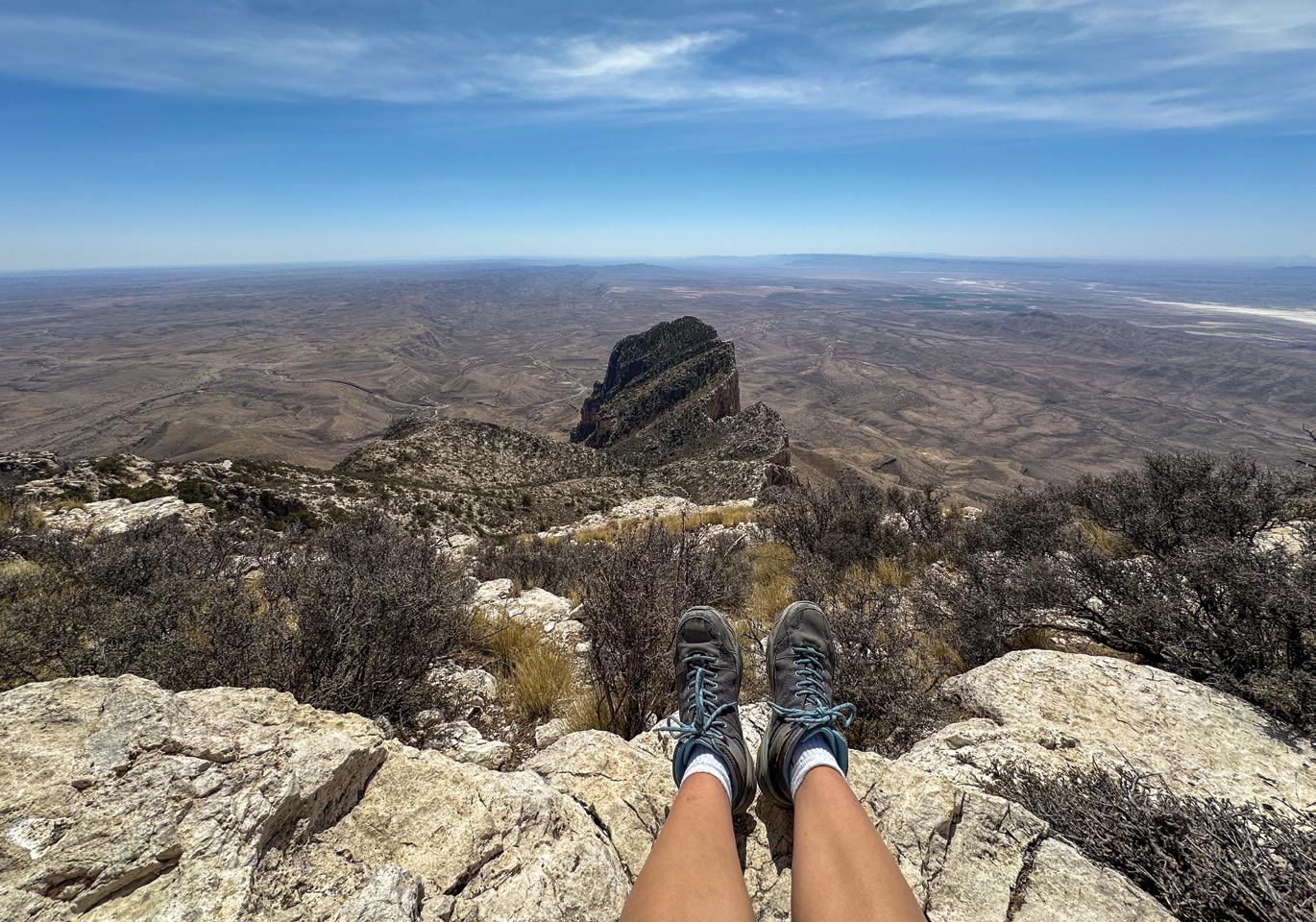

The next day, I headed south into Texas to visit Guadalupe Mountains National Park. I set out on the Guadalupe Peak Trail — an 8.5-mile roundtrip hike with a 3,000-foot elevation gain — to reach the highest point in Texas. I almost turned back but pushed through, and the views at the summit made it all worth it. I celebrated with a turkey sandwich at the top and then slowly made my way down on shaky legs and treated myself to some Prickly Pear licorice at the Visitor Center.


Before heading to White Sands National Park, I took the scenic route to Las Cruces, New Mexico, detouring through Roswell to visit the International UFO Museum — because how could I not? Then it was off to McGinn’s Pistachioland in Alamogordo, home of the world’s largest pistachio. I couldn’t resist trying their pistachio brittle and homemade pistachio ice cream. After battling a gnarly sandstorm and some intense winds, Clara and I finally made it to our Airbnb in Las Cruces.
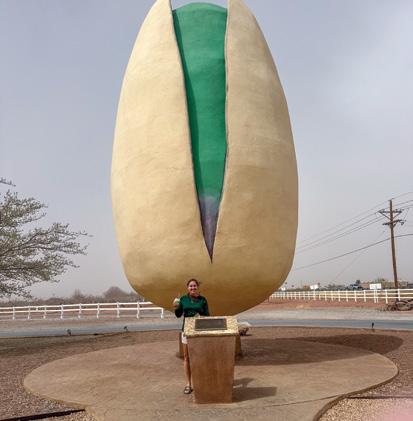





The next morning, the wind had died down, so I headed to White Sands National Park — and it truly lives up to its name. The endless white dunes were unlike anything I’d ever seen. I drove to the far end of the park and hiked the 5-mile Alkali Flat Trail, following red markers over dunes and along the edge of the White Sands Missile Range. At one point, surrounded by nothing but sand, I completely understood the idea of a desert mirage. After the hike, I emptied a surprising amount of sand from my boots and gave sand sledding a try. I only managed a few runs before the wind picked up again, so I called it a day.




Next stop: Arizona and Petrified Forest National Park. I stayed in Holbrook, where finding my Airbnb was an adventure in itself — imagine open fields, scattered RVs, and driving through a cow pasture to reach my “Peaceful Desert RV Glamping Getaway.” I’d never thought much about petrified wood before, but now I’m obsessed! It’s ancient, fossilized wood that looks like colorful stone in the shape of tree trunks. Clara and I walked the Long Logs and Agate House trails, took in views of the Painted Desert and Blue Mesa, and visited the historic Painted Desert Inn, formerly a stop for travelers along the historic Route 66. Before heading out, I grabbed a few small pieces of petrified wood from the Visitor Center as souvenirs.



Even though I was trying to avoid the busier parks, I couldn’t pass through Arizona without stopping at the Grand Canyon — and I’m so glad I did. It was absolutely breathtaking. On my first day, I entered through the South Rim (the North Rim wasn’t open yet), walked the Rim Trail, and hiked down the Bright Angel Trail to the 1.5 Mile Resthouse and back. The next morning, I woke up early to catch the sunrise at Yaki Point. And the highlight? My first-ever helicopter ride — an unforgettable tour over the entire canyon. No photo or description can capture what it’s like to see it from the air.

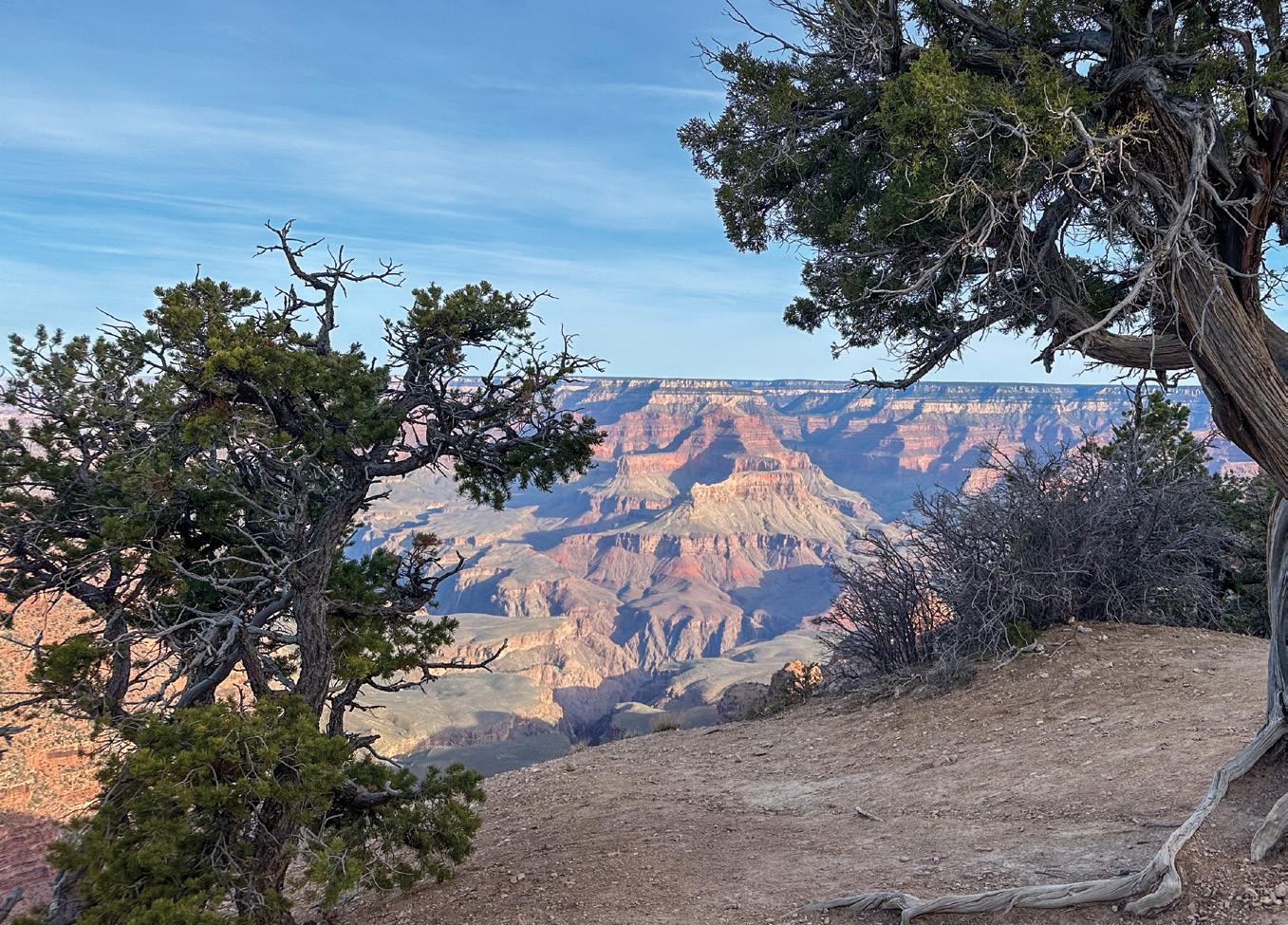



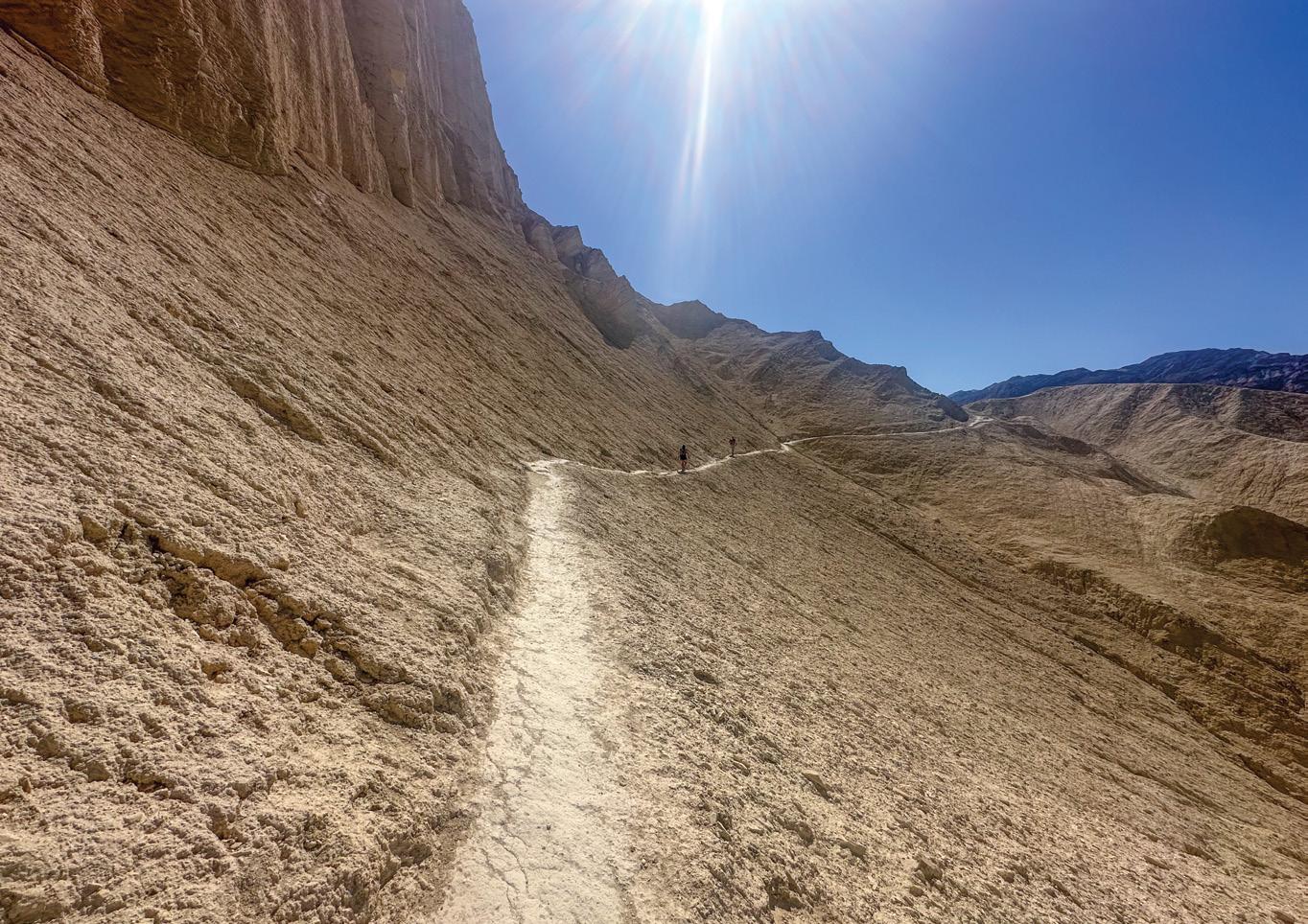
Time to kick off my California adventure, the state with the most national parks (nine!), starting with Death Valley. The park was massive and scorching, with temps topping 100 degrees Fahrenheit, unusually hot for April. I hiked part of the Golden Canyon and Gower Gulch Loop (got a little lost and didn’t finish it all) and then drove down Badwater Road to visit Badwater Basin, the lowest point in North America. The next day, I headed out later in the day, explored Ubehebe Crater, walked the rim, and caught sunset at the sand dunes. To top it off, I joined a Night Sky Ranger Talk at Furnace Creek Visitor Center under the stars.
04.09


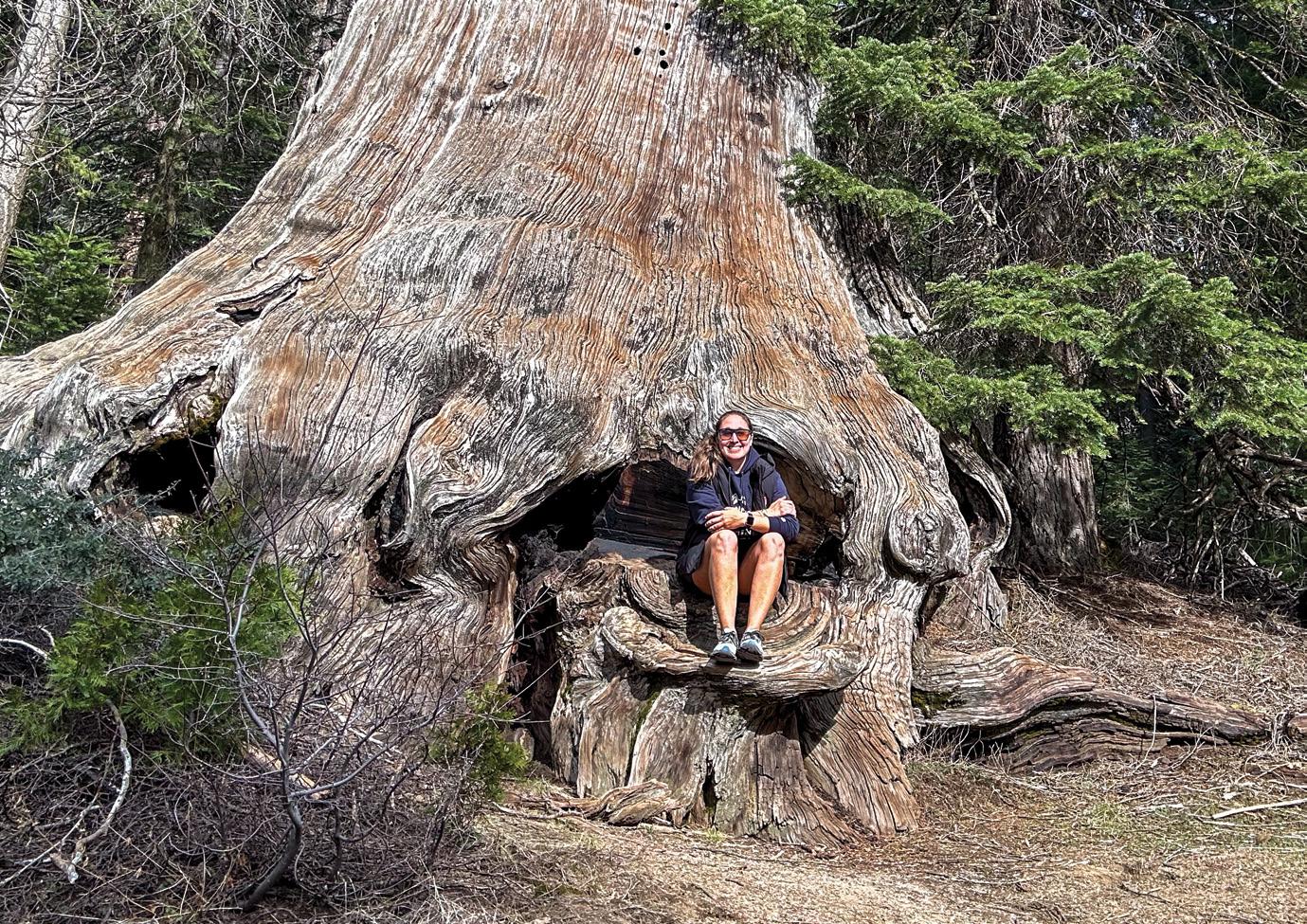
I was probably most excited to visit these two parks because of my obsession with giant sequoia trees. I first saw them up close on the Trail of 100 Giants in Sequoia National Forest, but being surrounded by even more inside the parks was awe-inspiring. I hiked about eight miles through different areas and found myself totally alone for most of it. I enjoyed the peacefulness until I came upon a black bear that thankfully was also enjoying a peaceful walk and ignored my presence. Phew! I also stopped by the Giant Forest Museum to learn more about these incredible trees. Did you know they’re the largest in the world by volume, can live for thousands of years, and have thick, fire-resistant bark that helps them survive wildfire season?
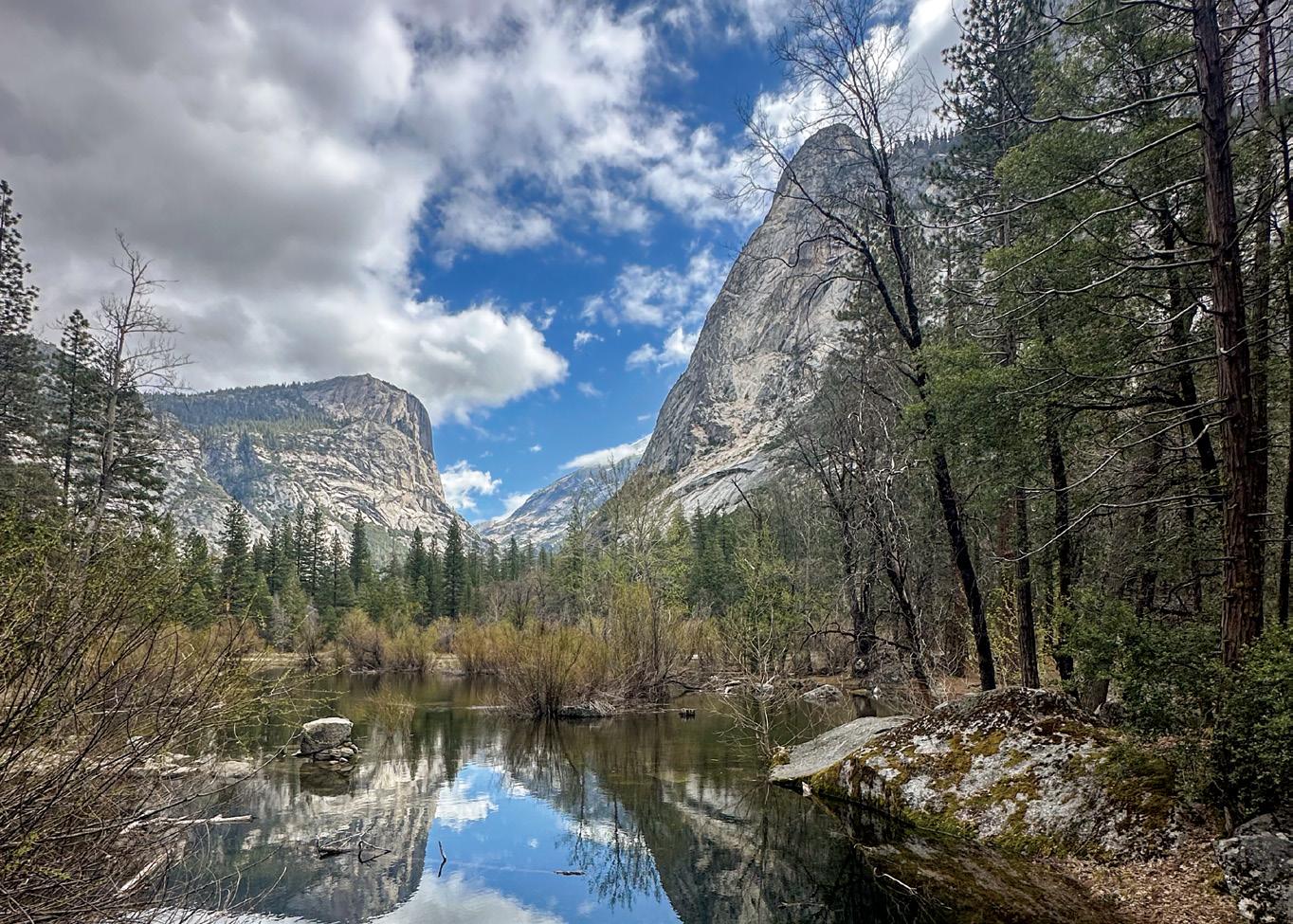

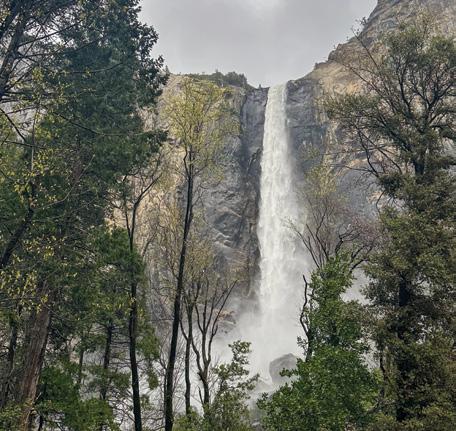
Yosemite was one park I considered skipping due to the crowds, but I realized that it was crowded for a reason and decided that I couldn’t pass it up. I arrived early to snag a parking spot and spent the rest of the day exploring via the park’s shuttle system. The highlight was hiking around Mirror Lake, with stunning views of Half Dome and several beautiful waterfalls. Parts of the trail were flooded and tough to navigate, but muddy shoes were part of the fun. Before heading out, I visited the Ansel Adams Museum and enjoyed an incredible collection of his prints from Yosemite and beyond.




After spending a few days in San Francisco visiting friends and exploring the vibrant city, I headed north along the Pacific Coast Highway — soaking in stunning views and navigating its famously winding roads. My next stop was Crater Lake National Park in Oregon, and the contrast couldn’t have been more dramatic. While San Francisco was bursting with spring blooms, Crater Lake was still buried under 15 feet of snow! At the Rim Visitor Center, I rented snowshoes and poles for my first-ever snowshoeing adventure and made my way to Discovery Point along the lake’s edge. It was an unforgettable way to see the lake from a perspective that wouldn’t be possible without the snow. Later, at a lower elevation near our cabin, Clara and I hiked over five miles to explore the Natural Bridge on the Upper Rogue River and the quiet, snow-free campground nearby — much easier terrain for walking!




Olympic National Park is often described as three parks in one — rugged coastline, ancient forests, and snow-capped mountains — and on my visit, I experienced a bit of each. I hiked the Lover’s Lane Loop through the lush forest, with a stop at the beautiful Sol Duc Falls. Then I drove up to Hurricane Ridge, still blanketed in snow, for sweeping mountain views. Finally, Clara got to prance through the driftwood and sea spray at Ruby Beach. There’s so much to explore here, and we only scratched the surface. I’ll definitely be back to see more.


The memorials of Crazy Horse and Mount Rushmore were unlike anything I’d ever seen. Standing before these massive mountain carvings was awe-inspiring, but learning about their histories made the experience even more powerful. Mount Rushmore, completed in 1941, was designed to celebrate four U.S. presidents — Washington, Jefferson, Roosevelt, and Lincoln — as symbols of American ideals. In contrast, the Crazy Horse Memorial, which began in 1948 and remains a work in progress, honors the Lakota leader Crazy Horse and represents a powerful tribute to Native American history and culture. It was especially fascinating to see how much the Crazy Horse carving has changed over the years — and exciting to think how different it might look if I return in 20 more. It was a fun way to see the connection between history, politics, and nature.









This park was an unexpected gem. I hadn’t heard much about it and only decided to visit because it was close to where I was staying, but I’m so glad I did. The landscape was completely different from anything I’d seen so far: rolling plains, abundant wildlife, and a peaceful, open feel. Although I couldn’t explore the actual cave due to a broken elevator, I spent my time hiking above ground. The park has an open hiking policy, meaning you can walk just about anywhere, and I took full advantage. One of the highlights was wandering through a prairie dog town, watching the little creatures pop in and out of their holes and chirp warnings to each other. Another unforgettable moment? Getting trapped in a parking lot between two massive bison — one in front of my car, one behind. A little nerve-wracking, but definitely memorable!
05.06

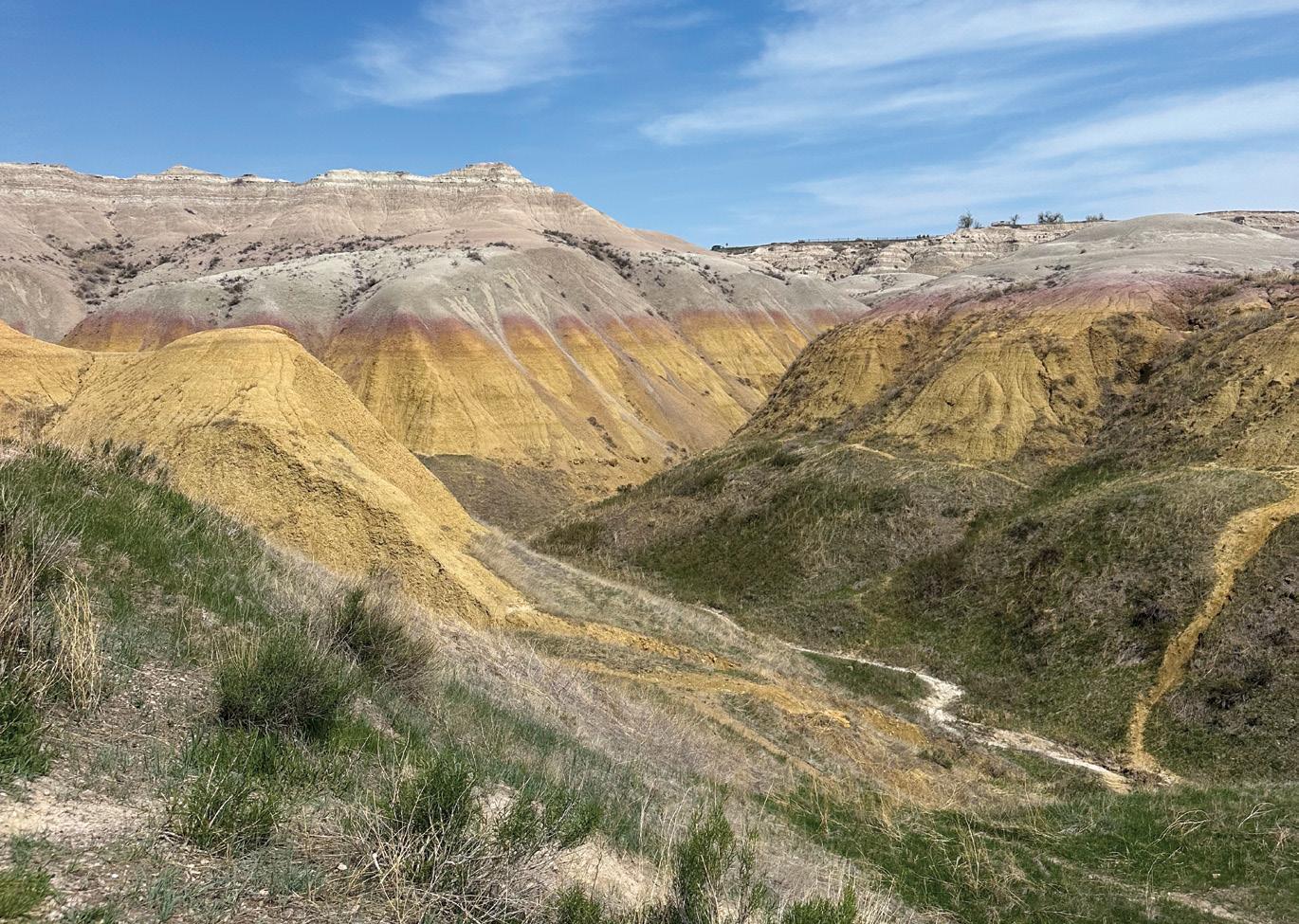
Continuing my journey through South Dakota, I made a short drive to Wasta and settled into my Airbnb before heading out to explore Badlands National Park. While I spotted plenty of prairie dogs and bison, the true highlight was the park’s otherworldly landscape — striking geological formations created by millions of years of deposition and erosion. Driving through the park was stunning, but hiking among the jagged peaks and colorful layers made me feel like I’d landed on another planet. Beyond its dramatic scenery, the Badlands are also home to some of the richest fossil beds in the world. Fossils of ancient mammals like saber-toothed cats and threetoed horses have been discovered here. I only wish I could’ve seen them roaming these lands!

Cuyahoga Valley National Park was the last stop on my trip, and while it felt bittersweet to be nearing the end, Ohio didn’t disappoint. The park is spread out among nearby towns, so driving between spots gave me a chance to explore the local neighborhoods. Clara and I hiked the Tree Farm and Pine Grove Trails, enjoying the quiet beauty of the spring rain. Later, I explored the Brandywine Gorge Loop on my own and took in the stunning Brandywine Falls, one of the park’s most iconic sights. Cuyahoga was the 15th park of this trip, bringing my lifetime total to 27 out of the 63 National Parks in the United States. Can’t stop now. Time to start planning the next national park road trip! Who wants to come with me?



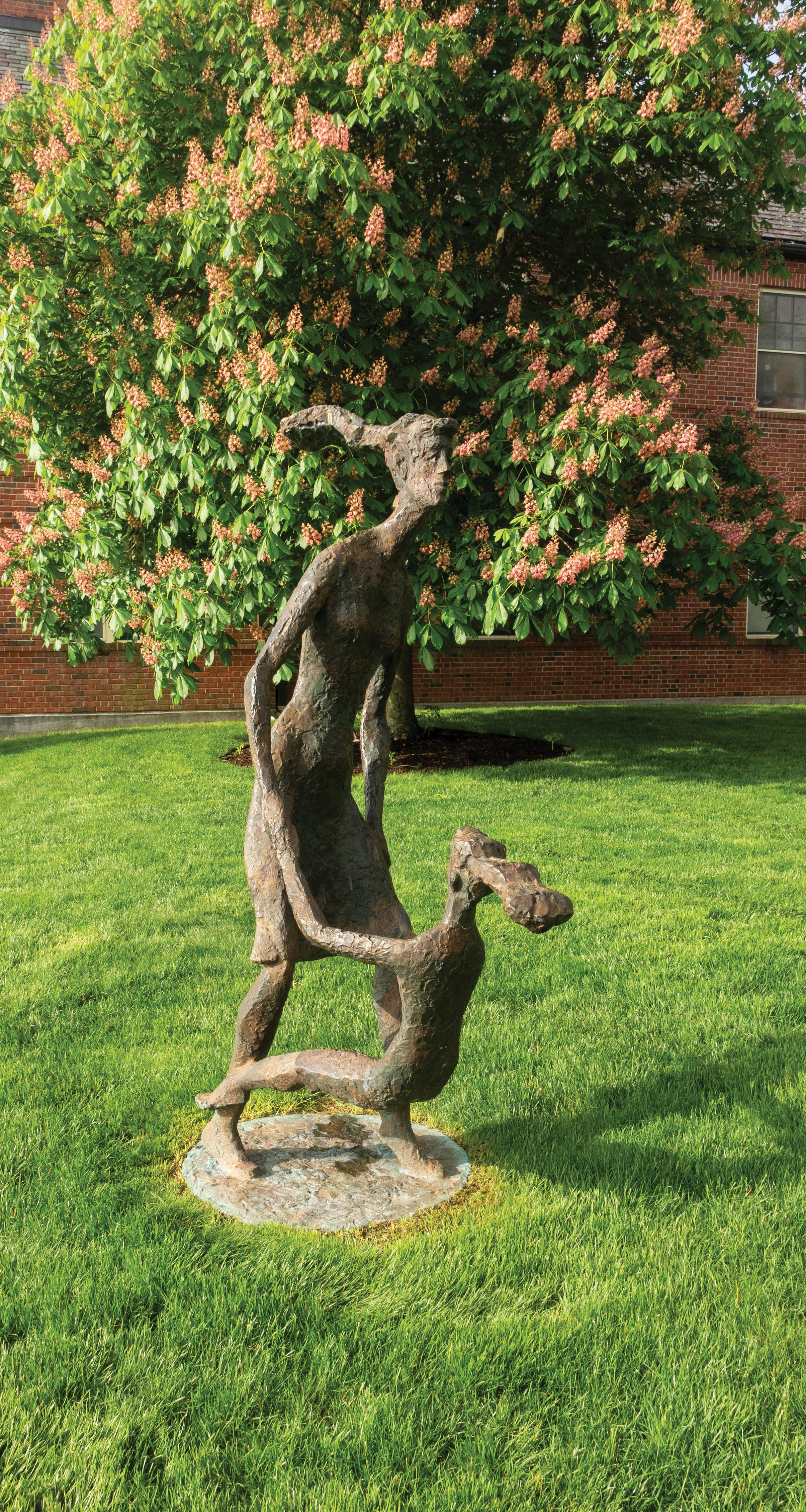
$5,256,306 Raised
Thank you! The Loomis Chaffee community has once again demonstrated its incredible generosity by raising a record-breaking $5,256,306 for the 2024–25 Annual Fund.
This extraordinary achievement reflects the strength and spirit of our community — alumni, parents, grandparents, parents of alumni, faculty, staff, students, and friends — who believe in the power of a Loomis Chaffee education. Annual Fund support helps provide nearly 10 percent of the school’s operating budget, directly enriching every aspect of the student experience, from academics and athletics to the arts and financial aid.
The Annual Fund is vital to Loomis Chaffee as it ensures that we can continue to offer a transformational education that prepares students to lead with core values like curiosity, inclusivity, integrity, kindness, and resilience.
On behalf of the entire Loomis Chaffee community, thank you for helping us reach this milestone and for making a lasting impact on the Island.

From newly minted alumni to 50th Reunion celebrants, generations of graduates marked their school-day milestones on the Island.
Class of 2025 with Alumni Family Members • Seated: seniors Graham Wiggenhauser, Isaac Garcia, Trey Walsh, Addie Looney, Penelope Struthers, Maisie Mueller, Zac Kurian, Justin Grilli, Michaela Howe, Ava McCann, Rachael Budd, and Tommy Havens Standing: Petagay Rowe ’95, Ro Clark ’97, Terry Rowe-Bailey ’03, senior Phoenix Ahipeaud, Craig Rodner ’92, senior Grace Rodner, Peter Wiggenhauser ’95, Kathleen O’Keefe Wiggenhauser ’95, Mitch Garcia ’84, Carol Toppin Walsh ’63, George Nussbaum ’81, Harvey Struthers ’60, Tim Struthers ’85, Erik Mueller ’93, Andrew Kurian ’87, Gary Grilli ’93, Jeni Spear Howe ’94, Heidi Erdmann McCann ’93, David Budd ’79, Sam Havens ’61, senior Cata Tarantino, Scott Havens ’91, and Kenn Tarantino ’93
Class of 2000 — 25th Reunion • Front: Courtney Duke Sargent, Claudine Stuchell Emeott, Heather Kawalick, Dana Sandberg Raines, Erin Onsager, Katie Schleit, Britt-Marie Cole-Johnson, and Katherine Shea Middle row: Kevin McEleney, Stephanie Wheeler, Karli Magarian Heneghan, Ellen Jacobson Cory, Ashley Grove, Julie Allen Fields, and Emily Moos Hultquist Back: Lindsay Manice Sussman, Patricia Chen, Renni Hoddinott, Kurt Malec, Michelle Jones, Eva Haldane, Anthony DiCicco, and Tyler Ball


Class of 1975 — 50th Reunion • Front: Ann Rubin, Deborah Slater, Pam Cooley O’Halloran, Sarah Pease Dalton, Jill Marcus Goldstein, Leslie Alton Kline, Meg Seigle Moran, Debbie Henken, Sharon Pullen-Hartung, Eric Schultz, Jeff Doyle, Donna Williams, and Peter Glassman Middle row: Lew Wallace, Mike Fishman, Bill Cohn, Betsy Burchell Merin, Lauren Westbrook, Ken Werner, Ed O’Connor, Don Ross, David Brickman, Sarah Fogg, Louise Taft Hyyppa, Betsy Knettell Francklyn, Chris Francklyn, Kin Schildbach, Mark Seymour, Bob Bannon, and Bruce Munro Back: James Yow, John Arntzen, David Title, Kevin Cronin, Mark Dalphin, Richard Stanley, Mickey Rowland, Charlie Williams, Dana Donovan, Bill Leete, Amy Zlotsky, John Henrikson, Al Thatcher, Peter Kagan, Nelson Anthoine, Bill Bogle, Elizabeth Dixon Caldwell, Rick Valentine, Roger Hill, Brian Hewitt, Linc Cornell, Peter Bartram, and Jim Kaufman

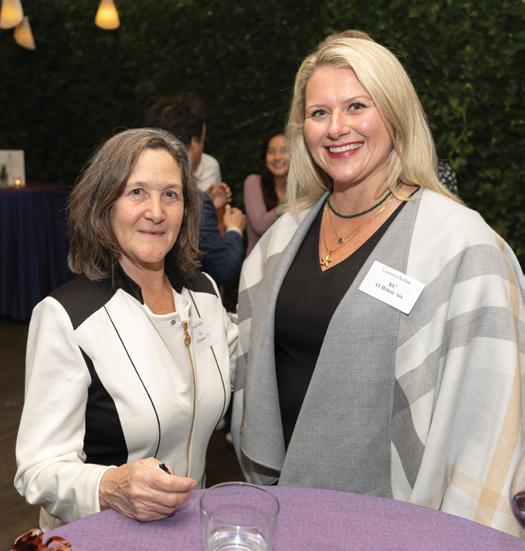
Top Left: Chief Advancement Officer Tim Struthers ’85; hosts Anita Richmond ’16, Maddy Richmond ’15, and Harrison Richmond Schulman ’13; Head of School Jody Reilly Soja; and hosts Spencer Richmond Schulman ’11 and Trustee Elizabeth Richmond ’80, P ’11, ’13, ’16 Top Right: Alex Zheng P ’28, Maggie Ma P ’28, Amber Zheng ’28, Shelley Cymerys, and Ed Cymerys ’70 Left: Sea Glassman ’77 and K.C. O’Brien ’01 Right: Morgan DiVenere, Jason DiVenere ’01, Ellis Gould ’12, and Mike Giorgio ’84

Above: Graham Struthers ’17, Melanie Wang ’15, Kayla Cui ’22, Serena Chang ’22, Coleman Long ’23, Brittany Lo ’11, and Will Pashby ’24 Top Right: host Trustee Kendra Nichols Wallace ’91, P ’24; Head of School Jody Reilly Soja; and Alexandra Nichols P ’91, ’94, GP ’24 Right: Kathleen Kumer P ’27; Molly Keller P ’20, ’23; and hosts Trustee
Doug Lyons ’82, P ’16, ’19 and Susan Lyons P ’16, ’19

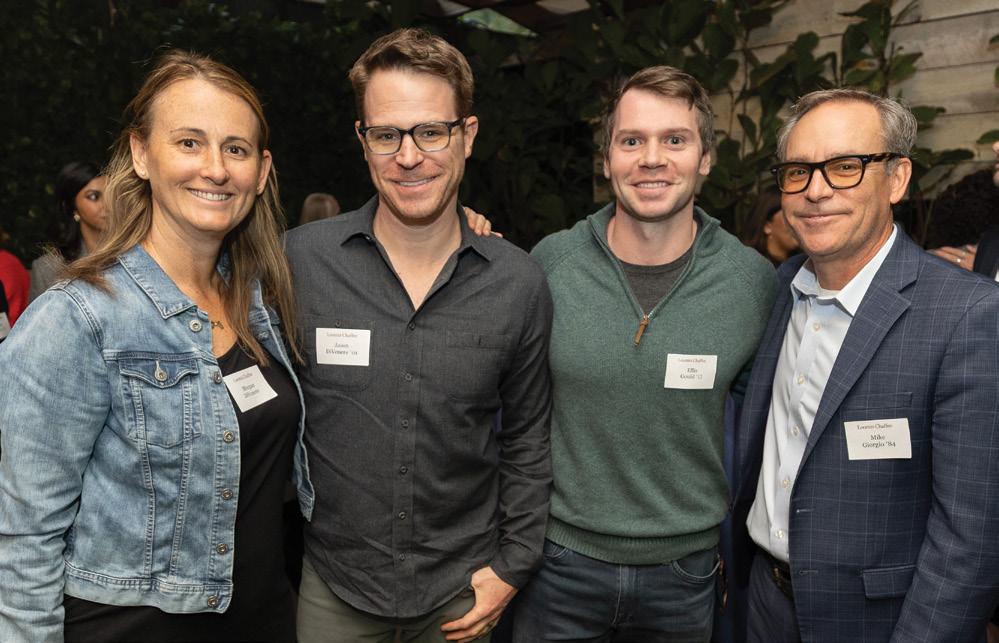
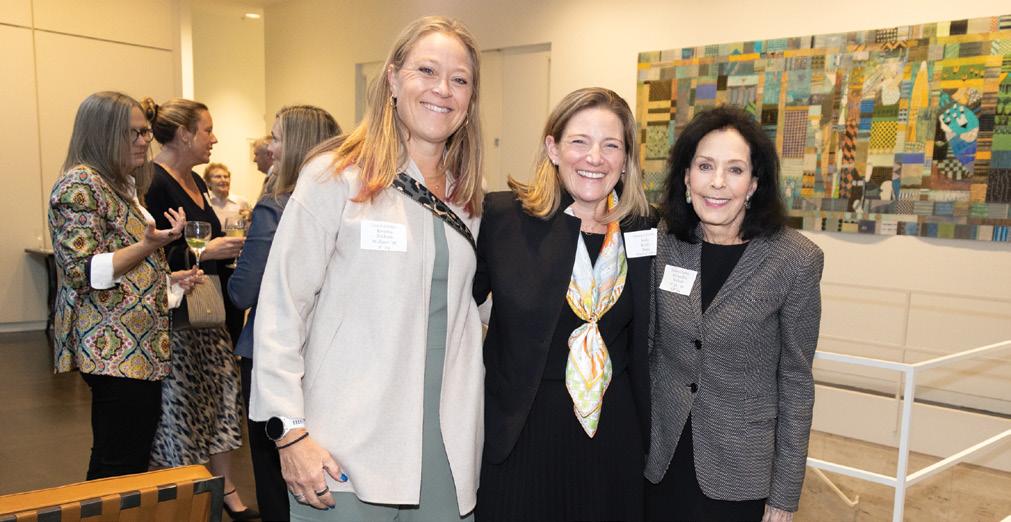



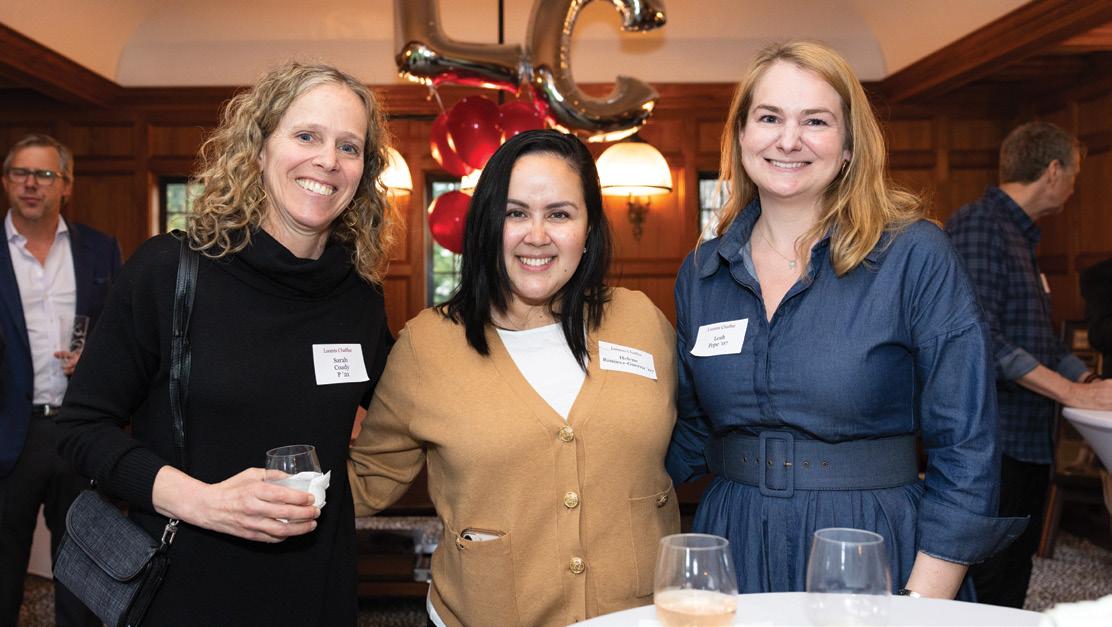


Top Left: Mischa Lassow ’09, Aarman Pannu ’20, and David Horowitz ’11 Above: Mary Lou Marek P ’91, ’93; George Marek P ’91, ’93; and Sean Wheeler ’84
Left: Alexander Hoye ’91, Reed Foster ’80, and Jeff Crolius ’91
Right: Claudine Stuchell Emeott ’00 and Renni Hoddinott ’00
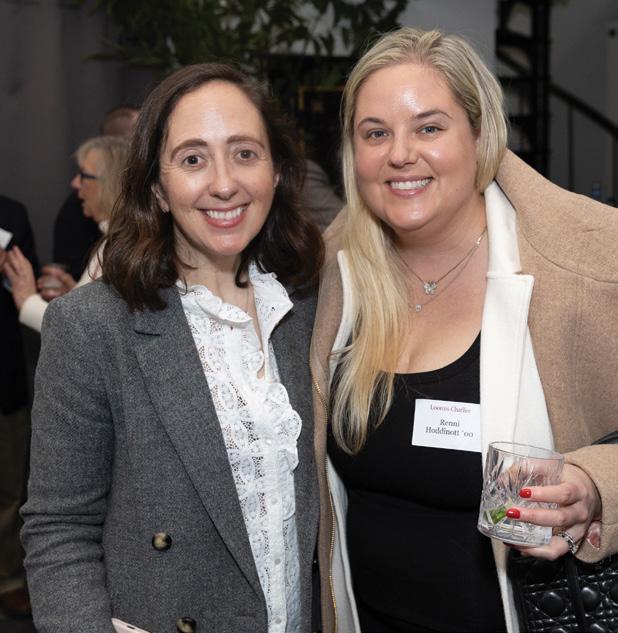
Left: Sarah Coady P ’21, Helene Ramirez Guerra ’07, and Leah Pepe ’07 Bottom
Left: John Gantz ’66, Head of School Jody Reilly Soja, and Steve Hansen ’77
Below: Hosts Diana Higgins P ’24, ’26, ’27 and Trustee Jim Higgins ’92, P ’24, ’26, ’27 with Head of School Jody Reilly Soja

The Loomis Chaffee community was deeply saddened when Martin “Tiger” Bech ’16 tragically lost his life following a deadly terrorist attack in New Orleans’ French Quarter on January 1. He was in the city for the holidays when the incident occurred, cutting short a bright life and a promising career.
In his one post-graduate year at Loomis Chaffee, Tiger left a lasting impression on the school community. A dedicated athlete and a loyal friend, Tiger embraced every opportunity that came his way, forming deep connections with classmates, teachers, and coaches. His energy, resilience, and genuine warmth made him someone toward whom people gravitated, and his impact extended far beyond the playing fields and classrooms.

Richmond ’16, established a scholarship in his memory, with the blessing of Tiger’s family. “Tiger made the most of every opportunity at Loomis,” Anita said. “He did not hesitate to embrace the community with genuine care for the people around him. I created this scholarship to honor that spirit — to support students who, like Tiger, dive into the Loomis experience with open hearts and a willingness to give their all.”
Tiger was a standout athlete, and his willingness to step up for his team was legendary. When Loomis’ starting quarterback was injured in the first game of the season, Tiger — who had never played quarterback — volunteered to take over without hesitation. “He basically just shrugged his shoulders and said, ‘I can do that,’” recalled assistant football coach Steve Colgate. Tiger’s coaches and teachers remember him not just for his talent, but also for his relentless spirit and sincere interest in and kindness toward others. “He was friendly to everyone,” said Dean of Enrollment Amy Thompson, “and took full advantage of his [post-graduate] year to improve his academics and embrace the opportunity to meet new people.”
After Loomis Chaffee, Tiger attended Princeton University, graduating in 2021. He was a starting wide receiver and punt return specialist as a member of the Princeton football team and received
numerous All-Ivy honors. He later moved to New York City, working in cybersecurity before transitioning to finance. In early 2024, he joined Seaport Global Holdings as an analyst and was quickly promoted to junior bond trader, marking the start of a promising career.

















In honor of the remarkable impact Tiger had on Loomis Chaffee, his classmate Anita











The Tiger Bech ’16 Memorial Scholarship will be awarded each year in perpetuity to a student with financial need to recognize the way Tiger lived life to the fullest and made the most of his time at the school. Through this scholarship, Tiger’s legacy will continue to inspire and support new generations of Loomis students, ensuring that his spirit of fearlessness and friendship lives on. For more information on how to donate to this fund, please visit www.loomischaffee.org/ bechscholarship or reach out to Stephanie Schilke at stephanie_schilke@loomis.org or 860.687.6861.














































LinkedIn is our primary tool for alumni networking and engagement.
The platform’s extensive network allows for dynamic and interactive connections among the thousands of Loomis Chaffee alumni who have already joined our LinkedIn group. By joining this group, you enhance your ability to take full advantage of this growing network.
To join the private Loomis Chaffee Alumni LinkedIn group, go to www.linkedin.com/groups/68181/
Be sure to update your LinkedIn profile to include Loomis Chaffee in your education section.

















































Loomis Chaffee Alumni Group


























The Board of Trustees recently celebrated two members who completed their service in June. Elizabeth Richmond ’80 served three four-year terms plus an additional two years while Unsoo Kim P’24 concluded her term after three years of service. Alongside these departures, three new Trustees were elected.

Elizabeth, parent of Spencer ’11, Harrison ’13, and Anita ’16, served on the Board for 14 years. Elizabeth was among the first four-year female boarding students to attend the school. She is a member of a three-generation Loomis Chaffee family. She served as vice chair of the Audit Committee and as a member of the Buildings and Grounds, Development, and Mission and Program committees since 2011. Beyond Board service, Elizabeth was a co-chair of the Campaign Executive Committee for Our Time Is Now: The Centennial Campaign for Loomis Chaffee, an overall chair for the Annual Fund, a Reunion volunteer, and a host of many admission and alumni receptions. Beyond her time and attention, Elizabeth and her family have supported all aspects of school fundraising over the years, from the endowment and scholarships to the Annual Fund to buildings such as Richmond Hall.
Unsoo and her husband, Hoonbeom Lee, are the parents of Duhee Lee ’24. During her time on the Board, Unsoo served on the Admission, Financial Aid & College Guidance Committee, the Committee on Diversity, Equity & Inclusion, and the Committee on Mission & Program.
Newly elected to the Board as of July 1 are R. Samuel Fisher ’09, JinBon Kim ’99, and Asahi Pompey P’28.
Sam works in global business marketing at Meta, one of the largest technology companies in the world. After graduating from Loomis Chaffee, Sam attended Middlebury College, graduating in 2013. Formerly a Head’s Council member, Sam also has served as a


Reunion volunteer and has presented to students, faculty, and staff on various topics from economics to marketing to technology.
JinBon went on to attend Johns Hopkins University, graduating in 2003, before returning to Seoul, South Korea, to work for his family’s business, Shindong Enercom Inc. The company specializes in agriculture, construction, renewable energy, and mining. A former Head’s Council member, JinBon also has served as a member of the Centennial Campaign Steering Committee and hosted several receptions in Seoul for the school.
Asahi, mother of rising sophomore Sebastian Schoelkopf, is global head of the Office of Corporate Engagement and chair of the Urban Investment Group (UIG) at Goldman Sachs in New York City. Collectively, these groups have deployed more than $25 billion in capital to drive economic growth globally.
a Class Note
Ms. Pompey oversees UIG’s community development financing activity, totaling more than $3 billion annually, and leads the firm’s signature programs, including 10,000 Small Businesses, 10,000 Women, One Million Black Women, and Community TeamWorks. She also serves as president of the Goldman Sachs Foundation and Goldman Sachs Gives, a donor-advised fund for the firm’s senior-most leaders. Asahi is a member of Goldman Sachs’s Management Committee and serves as global sponsor of the firm’s Women’s Network. Prior to joining Goldman Sachs, Asahi was an associate at Cleary Gottlieb Steen & Hamilton, where she worked in the New York and Frankfurt offices. Asahi received her bachelor’s degree from Swarthmore College, where she now serves as a Trustee, and she earned a juris doctorate from Columbia University. She served on the Board of Trustees for the Brooklyn Museum as well as on the Advisory Boards of Glamour Women of the Year and the Milken Center for Advancing the American Dream.
The Board of Trustees now totals 29 members, including Head of School Jody Reilly Soja.
Left: Jeff Lahrmann ’03, Jordan Lahrmann, and Sara Goldstein Right: Nick Filipone ’98 and Emelia Filipone


Below: Charlie Yang and Chuck Whelan ’59
Bottom Left: Bhavna Sacheti Singh ’96 and Scott MacClintic ’82, P ’12, ’19
Bottom Right: Martin Gimovsky P ’01, ’01 and Alexis Gimovsky ’01
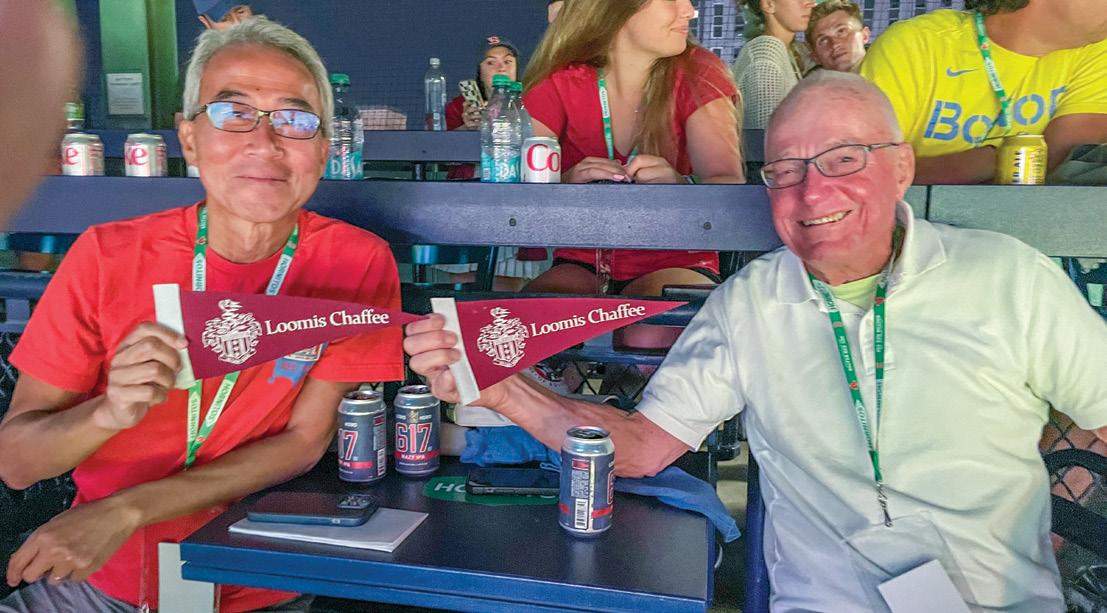


Joan Thompson ’58, Samuel Thompson ’61, and the late Joseph “Jeph” Thompson Jr. ’63, are and were grateful for their good fortune to attend and graduate from The Loomis Chaffee School.
Joan shares, “Reflecting on our years at Loomis Chaffee, it’s clear how much we three Thompson siblings benefited from the experiences, guidance, and opportunities that shaped our paths during those critical transition years from adolescence to adulthood. We were each surrounded by a faculty who not only nurtured academic excellence but also cared about our personal growth and well-being. The school’s commitment to fostering a supportive community allowed us to develop the skills, values, and confidence needed to excel in our college years and beyond. The friendships we forged with bright, interesting classmates, along with the rigorous academic environment, helped prepare us for the challenges of higher education and life. Loomis Chaffee truly played an instrumental role in shaping us as individuals. We three siblings out of five are forever grateful for the experiences we had at Loomis Chaffee and feel indebted to the school. We wanted to give back in a meaningful way by creating the Thompson Family Scholarship so that we could help a financially deserving student experience the same transformative opportunities that we three Thompsons had and cherish. This scholarship is our small way of expressing our immense gratitude for the lasting impact Loomis Chaffee had on our lives; Sam and I have included Loomis Chaffee in our estate plans so that our good fortune can have an even greater, lasting impact on other students’ lives.”

For more information about planned gifts and the John Metcalf Taylor Society, please contact Heidi E.V. McCann ’93, P’23, ’25, ’28 at 860.687.6273 or heidi_mccann@loomis.org. www.loomischaffee.giftplans.org
William Harper Wiehl, on September 23, 2023. Bill spent his first two years of high school at Fairfield High School and his final two at Loomis. He played soccer and hockey and was on the track and field team. Bill was president of the Ping Pong and Bridge clubs, chairman of the Dining Hall Committee, and in the Photography and Glee clubs. In 1943, he earned the rank of Eagle Scout in Troop 82. He was a member of the John Metcalf Taylor Society, which honors alumni, parents, and friends who have remembered Loomis Chaffee in their estate plans through charitable bequests, trusts, or other provisions. Bill earned a bachelor’s degree in mechanical engineering in 1947 from MIT. A member of the ROTC, Bill also became a lifetime member of the Delta Kappa Epsilon fraternity. In 1948, he pursued further studies at Stanford Business School in Palo Alto, Calif. Bill and his wife Pam were married in 1954 in Westport, Conn., and then lived in La Jolla, Calif., for several years, where Bill worked at Ryan Aircraft. The couple returned to Westport in 1959 when Bill joined the family business, Consumers Petroleum, a heating oil and gas company with operations across southern New England. Bill and Pam later settled in Weston, Conn., where they raised their family. Bill founded Wiehl Properties, a commercial real estate investment firm, specializing in industrial properties across Connecticut. Two of his children, Kimberly H. Wiehl and William P. Wiehl ’84, joined the company and succeeded him following his retirement in 2015. Throughout his life, Bill enjoyed boating on both Long Island Sound and the Gulf of Naples. In his college years, he learned to fly seaplanes and was an avid golfer. He also enjoyed tennis, especially playing mixed doubles with Pam, and was an expert snow skier and water skier. A car enthusiast, Bill had a special fondness for vintage European and American sports cars. He also competed in car racing for a number of years, racing at Lime Rock Park in Connecticut and winning numerous trophies in his class. Bill was an active member of the Weston community, where he led the

Indian Scouts and volunteered as an ambulance driver for several years. He also dedicated time to the Visiting Nurses Association of Fairfield County. For more than 20 years, Bill and Pam spent their winters in Naples, Fla., returning to their Westport townhome in Regents Park each summer. They enjoyed boating on Long Island Sound and spent many memorable evenings with friends at the Fairfield Beach Club. Together, they traveled extensively — skiing in the Alps, cruising the Mediterranean, and visiting family in England. Pam died in 2025. Bill and Pam were predeceased by their daughter Sandra and were survived by their children Kim and Bill; two granddaughters; Bill’s sister, Lucile Wiehl Allsopp; and their nieces and nephews. Bill was predeceased by his brother, Ernest Alfred Wiehl ’41. As a couple married for nearly 70 years, Bill and Pam are remembered for their devotion to family, their contributions to their communities, and their zest for life.
Nathan W. Putnam, at Homewood in Frederick, Md., on February 26. Nate was a three-year student who lettered in football and was on the track and field and fencing teams. Nate was in the Jazz, Glee, Chemistry, and Ping Pong clubs, and he was on the Student Council and the Senior Library Committee. He was also in the cast of two theater productions. Nate’s life was defined by service, adventure, and commitment to family. As a young man, he served in the Army during the Korean War, stationed overseas to support the war efforts. After returning home, he attended and graduated from the University of Maine. He was set up on a blind date with Susan Parker, a Wellesley College student. Their connection was immediate, and they married in 1956. Nate lived life to the fullest, with countless stories of his adventures that always left his friends and family smiling. In his later years, Nate enjoyed life at Homewood in Frederick, where he lived independently. Even as his beloved Susan was placed into full-time nursing care, Nate remained by her side, visiting regularly in his red golf cart, attending exercise classes, working out at the gym, and enjoying lunch in the dining room. Nate had a deep love for baseball and football, always supporting the local team or rooting for the underdog. He had a strong sense of justice and never tolerated bullies, proudly wearing his Ukrainian flag pin until the end of his life.
A voracious reader, Nate kept up with current events in the world. He was a passionate advocate for civil rights and women’s rights and was a steadfast supporter of his wife’s pursuit of a career in the financial industry. Known for his impeccable sense of style, Nate could always be found dressed in a colorful shirt, with socks that perfectly matched and a pen neatly tucked into his pocket. His attention to detail and unique flair reflected his vibrant personality and love for life. Nate’s warmth, humor, and generous spirit will be deeply missed by his family and all who had the privilege of knowing him. Nate was survived by his wife, Susan Parker Putnam, with whom he shared 68 wonderful years of marriage; and by their two children: Alison Putnam and her partner, Steve Provoncha, and Kathy Putnam. Graveside services were held in May at Pine View Cemetery in Queensbury, N.Y.
Janet McNeill Hively, at home in Portland, Ore., on May 24. Jan was a four-year student who grew up in Connecticut. She played field hockey, was secretary of the Athletic Association, and served on The Chiel board and on the publication’s reporting and business staffs. The 1949 yearbook noted that she was the “class philosopher” and “ever-ready with an apt remark or hearty laugh.” She remained a strong supporter of the school throughout her life. She was a member of the John Metcalf Taylor Society, which honors alumni, parents, and friends who have remembered Loomis Chaffee in their estate plans through charitable bequests, trusts, or other provisions. Jan received her bachelor’s degree in government, graduating with cum laude honors, from Radcliffe College, now part of Harvard University, in 1953. After her marriage to Wells Hively II, her primary focus was on her two children as well as local leadership for the National Organization of Women. Her career took off in Minneapolis city government. Following her divorce in 1972, she led the Minneapolis Accountability Project, developed a five-year plan for Minneapolis Public Schools, served on the Metropolitan Council, and received a master’s degree with honors from the University of Minnesota in organizational communications before becoming deputy and acting planning director for the city. Jan served as Minneapolis deputy mayor with Mayor Don Fraser from 1983 to 1989, following which she founded the Minneapolis
Youth Trust, now Achieve Minneapolis. She then served as executive director of the Golden Apple Foundation for Excellence in Teaching in Chicago from 1991 to 1994 before returning to Minnesota as a senior fellow in the College of Education and Human Development at the University of Minnesota. At age 69, Jan received her doctorate following completion of a dissertation on productive aging in rural Minnesota. This began her extraordinary encore career as a social entrepreneur who transformed the way communities view aging and lifelong work. She founded the Minnesota Vital Aging Network; co-founded SHiFT Inc., supporting midlife transitions; and was curriculum co-developer for the Advocacy Leadership for Positive Aging Life Planning Network. In 2013, with colleague and dear friend Moira Allan, Jan co-founded the Pass It On Network, a global peer-learning network for positive aging advocates. Jan was instrumental in demonstrating the power of networks that empower people to identify and share their strengths as advocacy leaders who help themselves, each other, and their communities. As a writer, speaker, teacher, community organizer, and group facilitator, she facilitated life/work planning to foster “meaningful work through the last breath.” This dedication was deeply inspired by her great-grandfather George E. McNeill, who was a mill worker, labor leader, community organizer, and writer in the 1800s. He worked diligently until the end of his life for worker’s rights, child labor laws, and the eight-hour work day. A natural connector, visionary communicator, and pioneering social entrepreneur, Jan orchestrated positive change and deep, lasting friendships throughout local and global communities. She received numerous honors and awards, including the Civic Ventures Encore Purpose Prize, the Minnesota Ageless Hero Award, and the Josie Johnson Social Justice Award; and she was appointed to the White House Conference on Aging and the World Conference of Mayors for Peace. Amid this incredible career, Jan was a loving and creative partner, mother, grandmother, and friend. Jan was married to John “Jack” Gordon Darley until his death in 1990. For the last 33 years of her life, Thomas R. Lacy was her loving partner and companion. Jan was an inspired volunteer, including with the League of Women Voters, the Women’s League for Peace and Freedom, and the Universalist Unitarian Church. She was a strong supporter of the arts and loved classical and jazz music. She was inspired by nature and the interconnection of all
beings and was instrumental in the creation of the Minneapolis Peace Garden. Jan wrote, “When I die, I want to be living in a place I love with the people I love, doing the work I love, with a sense of purpose,” and she achieved that fully. Jan was survived by partner Thomas Lacy, daughter Kathryn Snider, son Wells Dean Hively, a granddaughter, Jack’s children and grandchildren, and many more. Memorial services were planned for Wy’east Unitarian Universalist in Portland, Ore.; Mount Auburn Cemetery in Cambridge, Mass.; and the Peace Garden in Minneapolis.
Arthur H. Lombard, on March 13. He was a three-year student who played football, basketball, and baseball. Art was on the Senior Library, Dining Hall, and Dormitory committees, in the Glee Club, and in the cast of The Bat. He was a dog lover, enthusiastic storyteller, and 62-year resident of Branford, Conn. Art grew up in Guilford, Conn., attended Guilford High School and Loomis, and was a 1954 honors graduate of Yale University. He married his wife, Denise B. Lombard, in 1956, and they raised their family in Branford, Conn. Art was a die-hard fan of the New York Yankees, New York Giants, Yale Bulldogs, and UConn Huskies women’s basketball teams. Art began his business career in 1954 at the Southern New England Telephone Company. Five years later, Art joined the Connecticut General Life Insurance Company as an estate and financial planner. He was a frequent top producer during his 29-year career, achieved Life Membership in the
President’s Club in 1975, and retired in 1988. During this same period, Art purchased the Knowles-Lombard Company, a fuel oil company that he sold in 1988. Art was involved in school and community activities in Branford for more than 40 years, including serving in leadership positions on the PTA, RTM, and his local HOA, and coaching Buddy League Baseball for 10 years. He was most proud of his bipartisan participation as a leader on the Branford Board of Education, first elected in 1973 and then in 1994 and 2003, always putting the interests of students, teachers, and taxpayers ahead of politics. Art’s dedication and contributions earned him induction into the Branford Education Hall of Fame in 2007. In addition to his beloved sports teams, Art loved dogs since the age of 9, having raised more than a dozen dogs ranging from miniature dachshunds to a St. Bernard named Fritz. He was an avid golfer and tennis player and a champion and coach of his children, grandchildren, and great-grandchildren. He enjoyed occasional road trips to Ocean City, N.J.; Uncasville, Conn.; Grafton, Vt.; Las Vegas, Nev.; and California. Art’s good humor, unconditional love, and captivating stories will be greatly missed by his family and friends. He was grateful for his newfound friends and the wonderful staff at Harbor Chase, where he was affectionately known as the “chairman.” He was survived by his sons Howard and Peter, five grandchildren, and six greatgrandchildren. Art was predeceased by his wife, Denise, and a great-grandson as well as his uncle Gilbert M. Lombard ’30. A memorial service was held in March at the Guilford Funeral Home.

Barbara Jane Griffin Cox of Guilford, Conn., on March 1. Barbara was a four-year student from Hartford, Conn., who was in the French and Glee clubs. She went on to attend Connecticut College. Barbara married the late Barry Cox of Guilford in 1954. During Barry’s service career, the couple resided in several locations, including Thailand. Ultimately, they settled in Guilford to raise their three children. Years later, when the couple separated, Barbara remained in town. She loved all things Guilford: her beach buddies at Jacob’s, a trip to Bishop’s, eating lunch down at the docks, the library, the fair parade, and all the happenings around town, which she loved to keep track of and share her thoughts on. Throughout her life, she participated in various town committees, including the Board of Education, the Community Fund, and the Visiting Nurses Association, and she served as the president of her condo association. In addition to her involvement in Guilford, Barbara had a passion for reading mysteries, dining out with friends, cooking, watercolor painting, birdwatching, solving brain teasers, enjoying a good lobster roll, spending time at the beach, caring for her cat Maddy, and staying updated on the lives of friends and family. She had a special relationship with her sister, Marilyn “Lynn” Griffin Lombardo ’43, who predeceased her. Barbara will be remembered for her intelligence, sharp wit, memorable one-liners, and willingness to voice her opinion. Barbara was survived by her three children, Steven, Tim, and Jen, and their spouses; two grandchildren; four great-grandchildren; her lifelong friend and sister-in-law, Martha Gallentine; and several nieces and nephews. A celebration of Barbara’s life was held August 16 in Guilford.
John Clement Davis III, known to many as Jock, on April 7, at Maine Medical Center. Just two days before his death, Jock had celebrated his 90th birthday with his grandchildren and great-grandchildren, enjoying an enormous plate of blueberry pie and chocolate cake. Jock was a four-year student from Rowayton, Conn., who lettered in football and wrestling, played tennis, and was on the track team. Jock was in the Nautical Club, Radio Club, and President Arms Club. He graduated from Bowdoin College in 1957. He also earned a master’s degree in mathematics at Bowdoin. He served as a language specialist with the U.S. Army in Germany and spent college summers working construction with Boyce & Catlin and striking sets at the Brunswick
Served 1983–96
Former member of the Loomis Chaffee Board of Trustees Alfred Vincent “Tim” Covello ’50 died on February 18 with his wife, Carol, by his side. Tim was a four-year student from West Hartford, Conn. He played football, basketball, and baseball, and he was active in many clubs, including the Chess, Ski, Glee, Nautical, and Jazz clubs. He remained deeply connected to Loomis Chaffee, serving for seven years as president of the Alumni Association and for more than a decade on the Board of Trustees. He chaired the 55th and 60th Reunion Committees for his class. The Covellos are a three-generation Loomis Chaffee family.
Tim’s life was marked by the extraordinary number of lives he touched as a friend, family member, pilot, judge, teacher, student, musician, and other roles. He graduated from Harvard University in 1954. He was a drummer in the Harvard University Band and a member of the pit orchestra of the Hasty Pudding Theatricals. As with Loomis, Harvard remained a large part of his life, and his children followed his path, both attending Harvard and playing in the band. Tim was a dedicated fan of the Harvard football team, attending games with the same group of friends for more than four decades.
Following Harvard, Tim enlisted in the Army, serving two years active duty at Fort Dix and two more as a reservist. Tim also learned to fly planes shortly after college. He was an airline transport pilot, qualified in single engine, multiengine, and sea planes. He logged more than 4,800 hours of flight time, and he was a certified flight instructor. Both of his children also became pilots and spent many hours flying with their dad. Tim was a longtime director of the New England Air Museum.
In 1957 he met Suzanne Rafferty, and they were married in 1958. Tim received his legal training at the University of Connecticut School of Law. After graduation
in 1960, he engaged in the general practice of law in Hartford County for 14 years, first with Bieluch, Barry & Covello and then with Gross, Hyde & Williams. During that period he also served as corporation counsel for the town of West Hartford.
In 1974, Connecticut Gov. Tom Meskill appointed him to a judgeship. He was first a judge on the old Connecticut Circuit Court and then the Court of Common Pleas, followed by a long period as a

Superior Court judge, during which he developed a reputation for graciousness to all involved in the judicial system. He then served in the Appellate Session of the Superior Court, and in 1987 he joined the Connecticut Supreme Court. In 1992, he was appointed as a U.S. district judge for the District of Connecticut. He was the chief judge of that court from 1998 until 2003, when he took senior status. He continued to serve as a senior judge until his full retirement in 2022.
Tim often said that the most rewarding thing he did as a federal judge was to preside over citizenship proceedings for immigrants becoming U.S. citizens.
He made a point of welcoming each new American, and he performed two ceremonies at Loomis Chaffee to instill in the students the honor of American citizenship. Tim also served for four decades as a trustee of the William and Alice Mortensen Foundation, which provides funding for projects that have made the Hartford area more vibrant.
In addition to his home in the Hartford area, Tim had deep ties with Biddeford, Maine; and Naples, Fla. The Covello family spent time in both places. Tim was a member of the bass section of the Church of Saint Peter Claver choir in West Hartford from the 1980s until he moved to Florida in 2022.
In 1997, Tim’s wife Suzanne died unexpectedly from pneumonia, profoundly disrupting his world. Fortunately, he later met and fell in love with Carol Santry, and they married in 2006. Together they enjoyed extensive travel, opera, skiing, fine art, and friends. When his children started families of their own, Tim embraced his new role as a father-in-law and then as Papa to his grandchildren, taking a keen interest in them and their activities. The annual reading of The Night Before Christmas on Christmas Eve to his children and then to his grandchildren continued from 1962 almost until his death.
In 2022, Tim and Carol relocated full time to Naples. He spent his last three years at Moorings Park, receiving love and care as his health and faculties declined. Tim left a legacy of professional accomplishment, family, and friendship. He was survived by his wife, Carol Covello; his son, Timothy J. Covello ’80 and his wife, Diane; his daughter, Nancy Covello Murray ’83, and her husband, Hugh Murray; grandchildren Helena Murray ’13, Matt Covello ’15, George Murray, and Allyson Covello and her husband, Imran Cronk; and several nieces, nephews, and extended family members. A funeral was held at the Church of Saint Peter Claver on April 2. loomischaffee.org
Summer Theatre, work that sparked a lifelong passion for building. In 1961 he bought an acre on Mill Pond in Harpswell, Maine. At 28, Jock began building the house on Basin Point Road where he would live for the last 50 years of his life. He married Sally Patten in 1963, and together they raised their three children: Brinna, Galen, and Micah. Jock retired in 1995 from a 25-year career at Brunswick (Maine) High School, where he taught math, physics, chemistry, and computer science. His deep love of all things Maine began during childhood summers on Isle au Haut, where his grandparents built a cottage in 1911. It was in Moore’s Harbor in 1997 that he met Elizabeth Allerton Marshall, and together they became cruising companions, sailing up and down the coast aboard his H-28, Summer Song. Their voyages became family adventures following the birth of their daughter, Rose, in 2001. Jock loved the outdoors, and he loved to work: hauling logs, splitting firewood, tending birds, spreading seaweed in the garden, or milling steam engines in his machine shop. He connected to the people he loved by doing. Basin Cove Farm blossomed under his care, with his planting of many acorns, fruit trees, and blueberries and the establishment of a thriving family venture, Rose’s Duck Eggs. Greeting customers in the driveway became one of his favorite activities in his later years. Jock gave generously to his community. He served for two decades as an ambulance driver with Harpswell Neck Fire and Rescue. In 2003 he helped to found the Harpswell Community Nursery School, now called the Harpswell Nature School, the first early childhood education program in town. Jock is remembered for his unique sense of humor, work ethic, and strong moral compass, all of which live on in his family and the community he helped shape. He was survived by his wife, Elizabeth; his sister, Jennifer Sawyer; his children, Brinna, Galen, Micah, and Rose; eight grandchildren; three greatgrandchildren; and a close-knit group of cousins. He was predeceased by his cousin Foster S. Davis Jr. ’58.
Served 1987–95
Former member of the Loomis Chaffee Board of Trustees Robert S. Rifkind ’54 died at his home in Manhattan on March 12. Born in New York City, Bob served as managing editor of The Log, editor of The Loom, chairman of Junto, chairman of the Senior Library Committee, and a staff member of Loomiscellany Bob was a three-year student who competed in soccer, tennis, and wrestling. He graduated with cum laude honors and was awarded the Jennie Loomis Memorial Prize as a senior. Bob was an ex-officio member of the Board of Trustees Education Committee in 1985, and he joined the Board in 1987 and served until 1995. He served as chairman of the Education Committee from 1989 to 1994 and chairman of the Audit Committee from 1989 to 1990. He also served on the Major Gifts Committee of the Annual Fund and was a member of the Common Good Society.
Bob graduated from Yale University summa cum laude with a bachelor’s degree in history. He was elected to Phi Beta Kappa and was the Class Day speaker. In 1961, he graduated from Harvard Law School and joined the law firm of Cravath, Swaine & Moore as an associate. That year he also married Arleen Brenner, the light of his life for the next 59 years until her death in 2021.
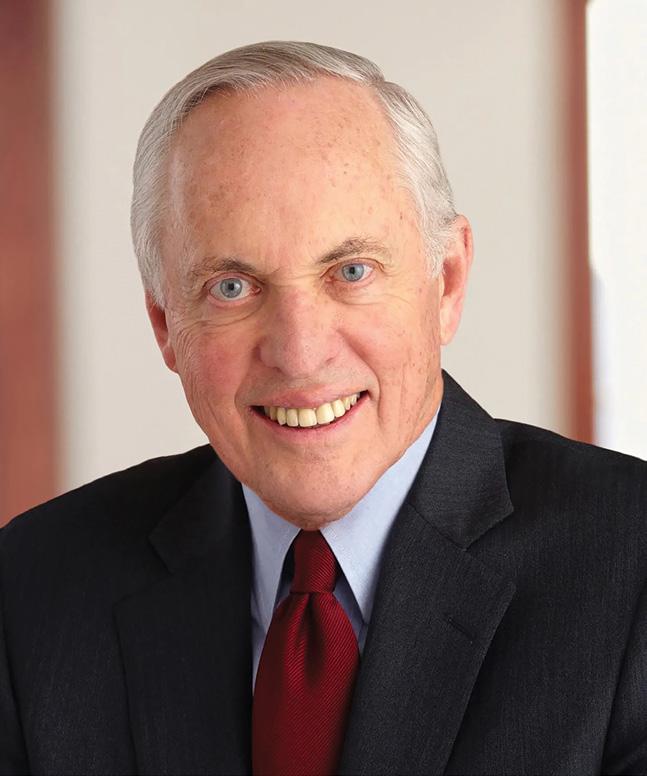
including those of the Dalton School, where he was president of the board from 1977 to 1979 and an honorary trustee from 1983 to 2025; Brandeis University; Benjamin N. Cardozo School of Law; Charles H. Revson Foundation, where he was chairman of the board from 1997 to 2003; Celebrate 350: Jewish Life in America, where he was chairman; Schecter Institute for Jewish Studies; the Jerusalem Foundation; Leo Baeck Institute; Center for Jewish History; the United Nations Foundation; advisory counsel of the Jacob Blaustein Institute for the Advancement of Human Rights; the American Jewish Committee, where he was president of the board from 1994 to 1998; and the Jewish Theological Seminary.
Arthur Thomas Judge, on April 14, in Newton, Mass. Arthur grew up in Windsor, Conn., and was a four-year student who played baseball and basketball and lettered in soccer. He also was on the advertising board of The Log and on the Day Student Committee. Arthur was a 1959 graduate
In 1965, Bob and Arleen moved to Washington, where Bob spent three years as an assistant to the solicitor general under Thurgood Marshall in the U.S. Department of Justice, after which they returned to New York. Bob rejoined Cravath, where he was a member of the litigation group for the remainder of his professional life, becoming a partner in 1971. Bob loved the practice of law. He also believed deeply in service and communal engagement. In addition to his legal career, he devoted considerable time to educational and Jewish institutions, serving on numerous boards,
To all of his endeavors, professional, communal, and personal, he brought his striking intellect, clarity of thought, deep belief in pluralism and democratic institutions, and good humor. In addition to Arleen, Bob was predeceased by his brother, Richard Rifkind ’48. He was survived by his daughter Amy Rifkind and her husband, Bruce Brown; his daughter Nina Rifkind and her husband, Marc Lerner; and five grandchildren, Rebecca and Samuel Rifkind-Brown and Shoshana, David, and Lily Rifkind-Lerner, who kept the world bright for him.
of Trinity College. In 1963 he received his medical degree from Tufts University School of Medicine, where he was an associate clinical professor of pathology for many years. He did his clinical internship at Framingham (Mass.) Union Hospital, now Metro West Medical Center, and his residency in pathology from 1964 to 1968 at St. Elizabeth’s Hospital in Boston. From 1968 to 1970, he was a major in the U.S. Air Force. He was director of pathology and laboratory services and consultant to the surgeon general of the Air Force at Eglin Regional Air Force Base Hospital in Florida. Following his discharge, Arthur was assistant pathologist at St. Elizabeth’s Hospital from 1970 to 1974. He then was pathologist at Emerson Hospital in Concord, Mass., until 1998. He was a diplomat of the American Board of Pathology, a fellow of the College of American Pathologists and American Society of Clinical Pathologists, and president of the Massachusetts Society of Pathologists. Arthur retired to study at Andover Newton Theological School, now part of Yale Divinity School. After earning his master’s degree in divinity in 2000, he served as a staff chaplain at Brigham and Women’s Hospital until 2013. For many years, he volunteered as a prison ministry chaplain at state and county prisons. He was an active member of Arlington Street Church (Unitarian Universalist) in Boston. A longtime Red Sox and Celtics fan, he attended many games with his family as his children were growing up. His favorite sport was soccer, which he played at Loomis and Trinity. He was a member of the Trinity College team that won the national championship in 1956. Arthur was survived by his wife, Susan Krieger; his daughter, Ingrid Whitaker, and her husband, Ethan; his son Geoffrey and his fiancé, Cheryl Engler; his son John and his wife, Julie Reich; his stepdaughter Sam; seven grandchildren; three great-grandchildren; and many extended family members. He was predeceased by his former wife and the mother of his children, Janet; and his sister, Jean. A graveside service was held in Newton, Mass., and a memorial celebration was to be held at a later date.
was on the riflery team. He also served on the Library Committee. Matt met the love of his life, Joyce “Jissy” Greer in 1958, and they married in 1959. They built a family of five children, 11 grandchildren, and eight great-grandchildren, and they welcomed all their children’s and grandchildren’s spouses as if they were their own. Matt and Jissy were married for 65 years, opening their home to any who needed a place to stay, sharing their warm hospitality. Matt owned his own company, Brescia’s Printing Services, and, among other services, worked with the courts and legal community in Hartford for many years. He lost his dad when he was 12 and went to Morse Business School after graduating from Loomis to support his mom with her business, then Brescia’s Stenographic Services. He retired in 2010, and his son Bill continues to run the business. Matt was also the publisher and editor of the Christian magazine Words in Season for more than 25 years. Matt was a consummate storyteller, and his sense of humor made many of the family get-togethers a time of warmth and laughter. He especially loved sharing stories about his “Brescia cousins,” with whom he spent lots of time as a child after his dad died. He also loved to share his passion for the outdoors, deep-sea fishing and hunting, woodworking, adventure stories, and poetry. But the thing that Matt shared the most was his love of the Lord Jesus and the saving power of his gospel. He was an elder, good shepherd, and gospel preacher at the Hartford and then Newington Gospel Halls for years. Matt was survived by his spouse,
Joyce Brescia; his children and their spouses, Joanne and Philip Rockey, Bill and Annemarie Brescia, Betsy and Paul Stern, and Mary-Beth and Stephen Selby; 11 grandchildren and their spouses; and eight great-grandchildren. He also leaves his sisters and brothers-inlaw Dorothy and Tony Grillo and Doris and Gordon Ramsay, as well as a multitude of nieces and nephews. Preceding Matt in death were his son Matthew John Jr. and his sister and brother-in-law, Frances and Joseph Procopio. Matt’s funeral services were held at the Lodge Community Chapel in Windsor.
David H. Arnold, on April 7. He was a four-student whose mother, Elizabeth H. Arnold, was a Chaffee faculty member who taught French and Latin. David played football, basketball, and baseball and was on the track and field team. He also was in the Glee Club, on the Senior Elections Committee, and chairman of the Library Committee. He earned an undergraduate degree in mathematics from Middlebury College, spent three years teaching at the Hun School, and completed a master’s degree at Rutgers University in 1967. David then went to teach math at Phillips Exeter Academy. Except for a two-year leave of absence for doctorate studies at the University of Toronto, David taught at Exeter from 1967 until he retired in 2006. David lived life passionately, read a tribute from several former Exeter
Matthew John Brescia, on February 15, after a brief time in rehab following a fall. He spent his last days as he spent his life — surrounded by the family he loved. Matt lived his entire life in Windsor, Conn., and was a four-year student who played soccer and baseball and

colleagues in a “Memorial Minute.” The tribute said whatever David loved, “he loved with his whole body and soul.” Tennis was a passion; in the mid-1970s he bought a vanity license plate (VILAS) because of a favorite professional player, the highly ranked Argentinian tennis star Guillermo Vilas. He once bought a home with a clay court, the favorite surface of Vilas. “Perhaps,” the tribute read, “what David loved most about Vilas was his exuberance and passion for the game. Lew Hitzrot, longtime friend and tennis partner, remembers the joy of David’s shouting, ‘Vilas,’ whenever he belted a backhand, topspin winner a la Vilas.” David also was described in the piece as “a great teacher, coach, dormitory advisor, administrator, mentor, and friend. And he carried himself with a modesty that underscored the integrity we treasure in those who educate our children. In contemplating his devotion to teaching, David once wrote, ‘From early on I seem to have had teaching corpuscles in my blood. I knew I would end up being a teacher. And . . . I dearly love doing exactly what I do.’” He served as chair of the Math Department and for three years was director of studies. He coached tennis, football, baseball, and soccer. He also was a dorm head and dorm advisor, worked on numerous committees, served as a clerk to the Board of Trustees from 1996 to 2001, and received numerous awards from the school, noted the tribute. “A lifelong learner, David’s intellectual curiosity found joy in subjects
as diverse as bird-watching and building fractals. For more than 30 years, March vacations provided time for David and [his wife] Andra to birdwatch in Sanibel Island’s Ding Darling Wildlife Refuge and other nearby sanctuaries,” read the article. When David retired in 2006, the editors of the yearbook wrote about him: “Mr. Arnold has always pushed his students toward excellence. And his high standards are well-balanced by his playful humor and approachable nature. For his vivacious spirit, for his love of colorful shirts and bow ties, and for his talents as a teacher, mathematician, and advisor to all.” He was survived by his wife, Andra Crawford, and his son, David Geoffrey Arnold.
James Rae Bowers, at home in Phoenix, Ariz., on March 14, after an extended illness. Jim was a two-year student who lettered in football and basketball, the latter a team he also captained. He was on the Student Council, Student Endowment Fund, and the Dance and Chapel committees. Jim also was a reunion and alumni volunteer. He graduated in 1964 from Denison University, taking a year off halfway through. Jim spent his year off first exploring the United States on his motorcycle and then setting off for Hawaii, Fiji, and eventually New Zealand, where he lived and worked for several months. After college, he served in the Peace Corps in Tanzania for several years, after which he worked for the Outward Bound School in Kenya. On his way back to the United States,

he continued his traveling adventures across the globe, stopping off in Nepal to consider how far up Mt. Everest he might be able to climb. He eventually landed in the old mining town of Telluride, Colo., in 1970, where he put down roots for the next three decades. He purchased and worked a 360-acre cattle and alfalfa ranch for several years in the nearby town of Norwood with his soon-tobe wife and eventually became a successful real estate broker in the Telluride area. He married Katherine Sharp in 1974, and they raised their two daughters on the ski slopes of Telluride, both girls becoming Junior Olympic skiers. In 2000, desiring a milder climate and closer proximity to golf courses, Jim and Kathy relocated to Grand Junction, Colo., where they designed and built a house close to the Colorado Monument and enjoyed many rounds of golf with friends over the years. Jim was an outstanding athlete and an avid sports fan to the end of his life. He moved directly into varsity football and basketball at the age of 14, playing through his college years. He also played baseball, golf, and tennis from a young age. He was known to take two buses across town to practice at a local golf course as a young boy, and he continued to win golf tournaments into his senior years. He played on the Tanzanian National Rugby team. He climbed Mt. Kilimanjaro 14 times as a guide and made it to Base Camp on Mt. Everest at 17,500 ft. He took up skiing in Telluride and was in a bowling league into retirement. He championed his daughters’ participation in many sports in addition to skiing. He also cultivated other young people’s athletic development as a coach of football and basketball throughout his years. He was a devoted follower of many sports teams and always had a newspaper nearby, enjoying the sports page, Sudoku, and the comics. Jim thrived on his relationships with people and was a gentle soul, notably kind and protective, always looking out for others. He saved his 3-yearold sister from drowning in a boat slip in a Michigan river when he was only 5. He looked you straight in the eye and had a wry sense of humor and a way of making every person feel important. He remembered people’s names and had nicknames for all of his close friends. He was survived by his two daughters, Aspin Jane Teevin and Jamie Rae Bowers; two grandchildren; and two sisters, Roberta Bowers and Rebecca Skrainka. He was predeceased by his wife, Kathy; his son, John Benjamin Bowers; his brother, E.C. Bowers Jr.; and a nephew.
Frank James McGuire, at home in Gainesville, Ga., on December 21, 2024. Frank was a four-year student from Milford, Conn., and a three-year resident of Warham Hall who competed in basketball, baseball, track, and tennis. He also was involved in the Darwin Club, the Political Debating Club, the Chapel Committee, the Stagehands Union, and the Athletic Association. While at Loomis he developed a great love of books and made lifelong friends. After graduating, Frank saved enough money to go to Europe. At 19 he arrived in Paris with heavy bags, a typewriter, and a vision of writing the “great American novel.” In the year he was there he did not write the novel but instead fell in love with all things French. When he returned to the United States, he attended Boston University. While at BU, he became involved in the growing anti-war protests against U.S. involvement in Vietnam and helped to organize one of the nation’s first teach-ins. For a while he worked in the library at MIT, which was a great spot for a lover of all book-related matters. After his marriage in 1968 to Joslyn Allen, they traveled all over Europe. When they returned to the United States in the early 1970s, they settled in New Orleans, and Frank got a job at Siler’s Bookstore. He later became a traveling representative for Crown Publishers. In 1983, Frank and Joslyn opened McGuire’s Book Shop, an independent bookstore in Atlanta, Ga. They successfully hosted many authors and community events at the store, and Frank actively fought legislative attempts to ban books. When the bookstore closed, Frank returned to his beloved New Orleans, closing out his retail and publishing career as a regional sales representative for Pelican Publishing Company. He knew bookstores and books as well as anybody. His personal collection contained more than 13,000 volumes. When he and his second wife, Nancy Hunt, settled in Gainesville, Ga., in 2005, Frank and Nancy became involved in the Georgia Mountains Unitarian Universalist Church in Dahlonega, Ga., where a memorial service for Frank was held on January 25. Frank left behind his wife, Nancy; his son, Thomas McGuire; and his stepson, Shannon Farmer.
John D. Fenniman, on July 11, 2023, in Denver, Colo., after a four-year struggle with Alzheimer’s disease. John was a four-year student from West Hartford, Conn., who played hockey and lacrosse, wrestled, and was on the cross country and riflery teams. John also was in the Ski Club and on the Library and Senior Dining Hall committees. He went on to graduate from Dartmouth College and received his master’s degree in cartography from the University of Wisconsin, Madison. He served in the U.S. Army from 1965 to 1968 and was a Vietnam veteran. He married Susan Landers in 1969. Always passionate about mountain climbing and the outdoors, he was a member of the Appalachian Mountain Club, hiking the White Mountains of New Hampshire and the Pennsylvania hills. After he and Sue married, they lived in Lancaster, Pa., where John worked as a cartographer for Rand McNally. In 1974 they moved to Lakewood, Colo., where they raised two daughters and John worked as a cartographer for the Denver branch of the U.S. Geological Survey until his retirement in 2014. They were former members of Phillips United Methodist Church. Most will remember John for his love of people, nature, Colorado mountain trails, history, classical music, and opera. They may also remember his weekly letters to family and friends and his chocolate chip cookies. He was a devout dog lover, known to take their beloved golden retrievers on four walks a day in the park across the street from the family home and neighborhood. All will remember him for his nurturing way, his love of family and friends, his love of a good story, and his understated community spirit. John was survived by his wife, Sue; their daughters, Jennifer and Heather, and their spouses; his brother, Bill Fenniman; his sisters-in-law; and a host of nieces and nephews and their children. He was predeceased by his sister, Elisabeth “Tibby” Tobey. A celebration of life was held in 2024.
William Peter Wilbur, on March 10, in Los Angeles. Bill was a two-year student from Long Island, N.Y., who played soccer and was on the cross country and track and field teams. Bill also was in the Political-Debating Club, the Glee Club, and the Sailing Club, and he was a reporter for The Log. He graduated from Yale, where he earned his undergraduate degree and a master’s degree in teaching. Bill’s first career and passion
was teaching high school history, starting in Cheshire, Conn., after which he headed to Southern California and taught at Pasadena schools, the Bancroft School, and Crenshaw High School, among others. He attended law school while still teaching and passed the California bar in 1983. He enjoyed a second career in law and served as a hearing officer for the L.A. County Department of Mental Health, advocating for individuals and families at their time of greatest need. He retired from his law practice in 2019. Bill was a lifelong learner and avid reader. He was predeceased by his older brother, Daniel, and was survived by five siblings, Mary Jane Lackey, Sarah Wilbur Sprayregen, Robert Wilbur, Kathryn Wilbur, and Peter Wilbur; his nephews and nieces; and his grandnieces and grandnephews. He left behind a family that always learned from him and numerous friends in New York and Los Angeles, his home for more than 50 years.
George Hall Hamilton III, of Wayland, Mass., on December 23, 2024, after fighting mightily for two weeks to overcome a traumatic brain injury. Better known to his family as “Tapa,” George was a four-year student who grew up in a supportive family and close to two idyllic ponds in West Hartford, Conn., that he loved to investigate and enjoy. He lettered in football and baseball and also played basketball. George was in the French and Glee clubs and on three senior committees: Traditions, Dining Hall, and Scholarship. His parents were very family oriented, so vacations at a modest rented cottage in Jamestown, R.I., with no phone or TV were always taken together. There he and his three siblings fished, swam, played cribbage, and enjoyed the simple lifestyle, and the family formed a lifelong attachment to Conanicut Island and Narragansett Bay. George was 15 when he met the love of his life, Ann Cameron Hayden ’63, also of West Hartford, and the love and affection that they began building as high school sweethearts led to a 1967 wedding, a 57-year marriage, four children, eight grandchildren, and a village of family and close friends. Early in their marriage, an around-the-world voyage on Pan Am Flight 1 inspired a lifetime of travel, discovery, and commitment to shared humanity. George became a father in 1970 and ever since frequently got in trouble for calling Ann “Ma!” in public. In 2003, he became a grandfather,
and shortly thereafter became “Tapa” as his first-born grandchild was learning to talk. George earned his bachelor’s degree in physics from Wesleyan University in 1966, followed by a master’s degree in physics in 1968 from the University of Pennsylvania and a master’s degree in business administration from the Wharton School of Business in 1969. That year, he began working at Polaroid, and he spent his entire career with the company, rising to become a vice president in the 1990s. Through his work at Polaroid, he formed lifelong friendships with colleagues the world over. Other than his family and friends, Tapa’s favorite things included big cats, sharks, sunbathing in warm weather, Tahiti, researching the family’s genealogy, baseball (first the Brooklyn Dodgers, then the Boston Red Sox), Ann’s homemade blueberry cake, duct tape, the give-and-take at the dump, and an old motorboat that he was too superstitious to ever name. Sworn enemies included deer ticks, Fireball whiskey (“it’s antifreeze!”), the Yankees, being cold, and the varmints that chewed up Ann’s garden. George channeled his concern about suffering and instability in the world into providing care and easing the lives of the people around him. Skilled and very handy, he was always eager to help with home projects big and small, and he took great pride in finding MacGyver-esque solutions to problems. In the spiritual realm, he was an active member with Ann at the Sudbury United Methodist Church, serving on the Worship and Music Committee, basking in the fellowship he found among other church members, and belting out favorite hymns. He was committed to service and volunteerism and provided substantial care to several family members and friends — from regular childcare for his grandkids to elder care for dear friends to help them age with dignity and companionship. George was innately interested in the world and people around him, and he was as likely to be captivated by a hawk soaring in the trees as he was by contemplating the cosmos on moonless nights in a place that brought him great peace — the family’s house in Sunapee, N.H. George was survived by his wife, Ann; his four children, Heather M. Hamilton, George H. Hamilton IV, Katherine H. Vosker, and Bruce C. Hamilton, and their spouses; and eight grandchildren. He also was survived by his three siblings, Margery Hamilton Greenan ’58, Beverley Hamilton Streeter ’60, and Bruce Hamilton ’65, and their spouses; as well as many nieces, nephews, cousins,
members of Ann’s family, and friends who gave his life meaning and purpose.
Thomas J. Hayes, on April 8, in Cherry Hill, N.J., following a lengthy struggle with Alzheimer’s disease. Tom was a three-year student from Avon, Conn. He played tennis, basketball, baseball, and golf and wrestled. Tom also was in the Political Debating, Spanish, Ski, and Sailing clubs; in the cast of Billy Budd; on the Senior Scholarship Committee; and chairman of the Senior Room Committee. He graduated with distinction and earned a Merit Scholarship Commendation. Tom graduated from Yale University in 1966 and Columbia University with a master’s degree in business administration in

1971. He served as a gunnery officer in the Navy during the Vietnam war (1966–69), retiring as a lieutenant 1st class. He was a vice president at Citibank International, overseeing various banking and leasing operations in Caracas, Venezuela, and in Aruba, Netherlands Antilles. Returning to the United States in 1976, he took over his family’s tool and dye business in Unionville, Conn., before moving with his family in 1985 to Florida, where his wife was a professor at the University of Miami School of Medicine. A loving and devoted husband, father, and grandfather, he was survived by his wife, Sherrill Howarth Hayes, daughters Tanya and Alix, son Justin, and three grandchildren.
William J. Kronholm, on April 4, at home in Sun City, Ariz., after a long battle with cancer. Bill was a four-year student from Windsor, Conn., who was on the soccer, rifle, baseball, and wrestling teams. He also was in
the Darwin and Chess clubs and on the Dining Hall and Senior Scholarship committees. He attended Tufts University before studying abroad in the Black Forest of Germany. Upon returning to the United States, he enlisted in the U.S. Army and served in Berlin, Germany, from 1966 to 1970. After his service, Bill went to work for The Hartford Courant, retiring after more than 30 years in the Information Systems Department. Bill met the love of his life and best friend, Lynne Leahy, in 1976, and they were married the following year. They had two children, Jennifer Kronholm Clark ’97 and William C. Kronholm ’98, both of whom Bill was always proud. Bill was an avid photographer and built a darkroom in his basement. He enjoyed the challenge of learning digital photography when he finally purchased an SLR. He was a fierce competitor in cribbage and a regular at the Sun City Cribbage Club. Bill had a great mind for detail and was able to recall obscure trivia for crossword puzzles and Jeopardy! games. He was always reading, with his favorite genres being fantasy, science fiction, history, and biography. His love of books and learning led him to volunteer in libraries, beginning with the schools his children attended and expanding to libraries in North Carolina and Arizona. He also volunteered for many years at First Church in Windsor. Bill and Lynne enjoyed traveling and made visits to six out of seven continents, including Antarctica. Bill was always up for an adventure and loved exploring cultural sites and museums. In addition to his wife and children, Bill was survived by a son-in-law; a daughter-in-law; two grandchildren; his brother, James Kronholm ’53; and many nieces, nephews, extended family, and friends. He was predeceased by his sisters, Janice Kronholm and Jean Kronholm Fink ’54.
Miles Herbert Mulcahy Jr., on October 10, 2024, at Nakamaru Hale in Holualoa, Hawaii. He was a three-year student from Avon, Conn., who played soccer, hockey, and lacrosse. He was on the Admission, Dining Hall and Crackpot committees. (The yearbook noted that “frequently he was the prize performer in their skits and takeoffs.”) Miles was a carpenter and worked on the Alaska Pipeline, was past president of the South Kona CERT team, and was a member of other civic organizations. He was married to
Jeannie Moriguchi until her death in 2005. He was survived by partner and caregiver Sharilyn Shields and the siblings and parents of Jeannie Moriguchi.
Harry C. Beaver III, of Greenville, S.C., on February 18. He was a four-year student from Longmeadow, Mass. Harry earned two letters in soccer and one in lacrosse, and he was a captain of the hockey team. Harry was on Student Council and the Dance Committee, was active in the Darwin Club and the Key Society, and was a member of The Log staff. He was an alumni volunteer, and a reunion fundraising volunteer. Harry was a devoted husband to his wife, Patty, and loving father to their daughters, Cristina and Rochelle. As a father, he taught integrity, generosity, and courage. Harry was a member of Sigma Alpha Epsilon at Denver University (DU). He co-founded the lacrosse program at DU in 1965 and is honored in the DU Sports Hall of Fame. After college, Harry and Patty began their 52-year marriage, laughing and loving their way from Colorado to Texas and finally to South Carolina, making many friends along the way. Harry’s knack for relating to people became the key to his success in a lengthy sales career. He worked in automation for more than 40 years, of which 30 were with Staubli. His charisma, passion for robotics, and innate ability to understand a customer’s needs led him to be awarded Salesman of the Year numerous times. Mentoring colleagues throughout his career, he generously shared his knowledge, encouraged his colleagues, and imparted the wisdom of how to best enjoy a business trip. Simple pleasures in life brought the most joy to Harry. He loved good food, cherished beach trips to Hilton Head Island and Cape Cod, relished spending time with friends and family, and never wavered in his commitment to DU lacrosse. His laugh was infectious, and he never tired of meeting new people. Harry is survived by his wife, Patty; their daughters, Cristina Dustin and Rochelle Beaver; four grandchildren; and four great-grandchildren. He was preceded in death by his sister, Margaret “Peggy” Bissell; and his stepson, David Ziegler. Throughout Harry’s brief illness, he displayed incredible courage and unwavering hope. A memorial service was held in March in Greenville.
Richard M. Singer, on March 10. He was a three-year student from Riverdale, N.Y., who was president of the Spanish Club. The yearbook noted, “Dick had an amazing aptitude for Spanish as we all found out when he qualified as second-best Spanish student in the state. This interest led Dick to form the Spanish Club.” He also was a member of the Religious Life Committee, the Senior Scholarship Committee, and the Photography Club. Dick played soccer and tennis. He had a keen interest in politics and international affairs earned first place in the Time Current Affairs Test in his sophomore and senior years. Dick was a communications attorney in Washington, beginning his legal career with the Federal Communications Commission, then practicing communications law at Pierson Ball and Dowd, and Drinker Biddle and Reith. He spent his early years growing up in Mexico, Cuba, and England. He earned his bachelor’s degree and law degree from the University of Pennsylvania. He was a good friend, generous and caring, helping people both emotionally and financially over their difficulties.
1969
Eric Randolph Minck, on March 24. He was a four-year student from Newtown, Conn. Eric earned three letters in wrestling and also played soccer and lacrosse and was on the track and field team. He was president of the Darwin Club, founded and was president of the Geological Society, and was a member of the Chess Club and the Fellowship of Christian Athletes. Eric was never one for small talk — he preferred a good monologue, preferably about philosophy, politics, the nature of existence or the recent scientific article that he read and then researched. A lifelong thinker, he could spend hours pondering life’s mysteries, often while digging in the dirt or listening to classical music. His mind was always turning, questioning, seeking. Eric was a man who believed in standing by his principles — sometimes quite literally, as evidenced by the length of his hair, which he grew long in protest of political climates of which he did not approve. He was an observer of the world, a deep well of thoughts and theories, and he never shied away from the big questions. He was survived by his wife, Sandra Minck; his daughter, Sara Minck, and her spouse; his grandson; and his sister, Valerie Ingham. Services were private.
David Manchester Brown Jr., at home in Westport, Conn., on February 28. Dave was a two-year student from Weston, Conn. Dave’s family spent two years living in the Philippines when he was a teenager. After traveling the world on their return to the United States, Dave spent his last two years of high school on the Island. He was in the Bridge and Chess clubs, on the Admission Committee, and in the Stagehands. After Loomis Chaffee, Dave studied at the University of Denver, where he cemented his lifelong love of skiing. After several escapades that included a stint on the crew of a tuna fishing boat off the coast of Oregon and hitchhiking his way home through Canada (for one leg of which he hopped on a freight train and wedged himself beside the engine), Dave resettled on the East Coast, married, and raised three boys. He took Danbury’s softball league by storm with team camaraderie and enthusiasm, winning three championships in a row and was two-time manager of the year for “Hub-Tub,” named after one of the laundromats that he owned and operated. Dave loved adventures both big and small. He visited countries across Europe and Asia, spent time in Morocco and Brazil searching for gems, frequented tropical locations, traversed the United States in his Buick, and made many expeditions with his partner, Betsy Royal, to Telluride, Colo. Dave’s favorite place was the family property along “the healing waters” of McFarland’s Cove in South Bristol, Maine, where his parents met as teenagers. From Kahuna dives into the ocean and captaining family on his boat TODARO (named for his three sons) to weed-whacking trails for his pirate grandchildren and gazing at the ocean with a cup of coffee and a conversation, he was the ultimate Maine-man. Dave was always excited to help others. He viewed tasks that some would consider inconveniences as opportunities for discovery and meaningful interaction. He loved problem-solving through conversation and problem-fixing by following through. Dave approached each day with an unmatched excitement and treated each introduction as an opportunity for friendship. Those who met him were apt to feel an immediate bond and fondness for him, as he often brought laughter and light to rooms that would have been silent and dim without him. There was not a game that Dave did not enjoy, but his favorites were
Seth Beebe ’78, who worked at Loomis Chaffee for 41 years but whose affiliation with the school stretched more than 58 years, died on June 12 after a courageous fight against pancreatic cancer. He was a devoted husband, father, mentor, and friend who was known for his deep kindness, infectious positivity, and ability to build community wherever he went. His warmth and quiet strength left a lasting impact on all who knew him.
Seth was the youngest son of Allen and Barbara (Engel) Beebe, who predeceased him. Raised in Windsor, he spent his childhood riding his bike to town, collecting baseball cards, and exploring Loomis Chaffee’s grounds, where his father was a longtime history teacher and coach. Growing up on campus was an experience Seth treasured. As part of the school’s Centennial celebrations in 2014, Seth helped organize a Fac Brat Reunion on the Island. More than 40 former faculty children and their guests returned for the event.
including two successful capital campaigns.
A passionate sports fan, Seth lived and breathed the thrill of competition. His love for sports spanned generations, following
sights on seeing Charlotte thrive in college and coaching one more season. Thanks to the care team at Hartford Hospital, he was granted the time to fulfill those dreams.

Another of Seth’s “families” were the boys III basketball players he coached for more than 20 years. They held a special place in his heart, as did that level of basketball. “The energy of the boys brings a smile to my face,” he said in February when he retired from coaching but not from his role in the Alumni/Development Office. “It’s a great opportunity for them to be involved with a team and make friends. Admittedly, almost all of them are not going to be varsity basketball stars. But most of them will be varsity athletes in other sports. They learn a lot that translates to their other sports and maybe even beyond sports.”
Seth earned a degree in mathematics from the University of Hartford and returned to the Island after college to work in the Alumni/Development Office as director of research. Over the years, his responsibilities expanded to include overseeing the office’s research and operations, and he was instrumental in strengthening alumni engagement with the school and growing Loomis Chaffee’s fundraising capabilities,
UConn basketball from Corny Thompson to Paige “Buckets” Bueckers. He shared a love of soccer with his brother, Will ’76, cherishing the elegance of players like Johan Cruyff and Lionel Messi. Watching games with Will was one of Seth’s greatest joys. Beyond athletics, Seth found solace in music and literature. His playlists included Santana, the Beatles, Van Morrison, and Al Green.
His greatest happiness, however, was reading with his daughter, Charlotte, from her earliest childhood through her college years. Even during his illness, she read to him — offering comfort through shared words. Their final book together was The Hunger Games, a symbol of resilience and strength.
Seth’s life was also enriched by his deep connection with animals. From childhood terriers Mike and Fritz to his wedding gifts, Asta and Dash, pets brought him endless joy.
He reveled in summers on Friendship Island in Maine, cherished days at Rehoboth Beach, and found peace hiking in Windsor’s Northwest Park. When Seth was diagnosed with pancreatic cancer, he approached it with unshakable courage. He refused to acknowledge the word “quit” and set his
Generations of Loomis Chaffee students and faculty benefited from his love of sports. Seth coached for 40 years, lending his expertise, encouragement, and enthusiasm to boys and girls teams at various levels of basketball, soccer, and lacrosse. In basketball, he was an assistant with the girls JV team and then head coach of the varsity girls team for nine years, but perhaps his favorite coaching role was as head coach of boys III, which he did for 23 years, including this winter’s season. A special celebration took place after the final home game of the season in February, with some of Seth’s former players as well as faculty and current players gathering in Erickson Gym to honor Seth’s wise and nurturing legacy as a coach and advisor.
In an article marking Seth’s retirement from coaching, former player Trevor Stern ’07 shared the following: “Coach Beebe had an incredibly positive impact on me when I was a freshman at LC. When I look back on III basketball, it was arguably one of the best athletic experiences I’ve had in my career. … I will never forget how Coach Beebe put his arm around me after practice one day and asked if I was doing OK. I don’t remember why I was upset, but I do remember how Coach Beebe cared about me and the rest of my teammates. I’ll remember this for the rest of my life. We’ll never forget how people treat us. Coach Beebe has a big heart.”
Nic Civale ’10, in that same article, said that he had recently become a father, “and there is little doubt that the lessons I learned from Coach Beebe will be reflected in how I raise my son. I am proud to say that I believe his influence will show in a generation of players’ sons and daughters.”
When Seth was asked what he would miss most about coaching, he said, “The players. I have tried to give them my best every day. They bring me such great joy and energy. The competition. It’s fun to put yourself on the line every three or four days and try to win a game. Or at least play well. Finally, Erickson Gym. Erickson Gym is such a classic high school gymnasium. I have been playing or watching games in Erickson Gym since I was a young child. It has a particular feel, a smell, an aura. I will miss that a lot.”
Seth worked in the Alumni/Development Office for more years than anyone in the history of the school, according to Chief Advancement Officer Tim Struthers ’85. Seth’s colleagues marked his 40th work anniversary in 2024 with a video tribute. They described Seth as “humble,” “downto earth,” and “a great friend.” Former Director of Development John Clark thanked Seth for his “excellent judgment and good humor over the years.” And former colleague Patti Loomis noted that Seth “always wanted the best for Loomis and worked hard to make that happen.”
“His institutional knowledge was second to none, as was his pride in Loomis Chaffee,” Tim said. “His circumspect perspective provided an appreciated and comforting level of confidence and collective selfassurance in our team’s decision-making over the years.”
Seth was survived by his wife, Wendy; his daughter, Charlotte; his sister, Susan A. Beebe ’74, and her husband, Jonathan Frost; his brother, Will Beebe ’76, and his wife, Valeria; his mother-in-law and father-in-law; two sisters-in-law; two nieces and a nephew; and many other relatives and dear friends. Seth’s journey was made brighter by the love and support of many dear friends who stood by him through every step and whose unwavering care and presence were gifts beyond measure. In the face of life’s challenges, Seth’s guiding philosophy was simple: “Find the good and praise it.”

chess and backgammon. He also enjoyed and excelled at golf and skiing. He loved card games like “Oh-Heck” at the family table, often being the root of laughter for the younger generations. Dave maintained close and loving relationships with his family, making daily “just checking in” calls, excited to hear about everyone’s adventures. He was known to make unannounced visits to people’s houses, which were met with love and excitement. In recent years, “gPa” brought joy to the lives of his eight grandchildren through his boundless enthusiasm and patience with games and activities, and with focused, quality time that made each of them feel special. Dave was survived by his partner, Betsy Royal; sons Robert, Daniel, and Thomas and their partners; his eight grandchildren; his stepchildren, Ashley and Eric; his siblings, Frank ’72, George ’73, and Margaret, and their spouses; and eight nieces and nephews. His late father was David M. Brown ’48. A service to honor Dave’s life took place in March at Norfield Congregational Church in Weston, Conn.
A service and reception honoring Seth was to be held on August 15 at Loomis Chaffee.
Robert N. Block, of Acton, Mass. He was a four-year student from Westfield, Mass., who played soccer and tennis, earned a National Merit commendation, and was president of the Photography and Aviation clubs. Rob attended Tufts University for his undergraduate studies and MIT for his master’s degree in civil engineering. He practiced environmental engineering across the country and as he’d always say, “I love dirt. If you’ve got the slime, I’ve got the time.” In 1983, Rob married Cathy, who survived him along with their two children, Sarah and Aaron;
a daughter-in-law; and a grandchild-to-be. Rob and Kat, as he called her, were married for more than 40 years. Throughout his life Rob was known for his humor, intellect, love of food, sharp wit, preparation, and organization. He loved to joke and had a great laugh and the daily goal to make his wife laugh. Skiing was central in Rob’s life, and in his younger days he enjoyed backcountry skiing in both winter and summer. He was an avid reader and loved spending time with family and friends walking in the woods observing and commenting on geological features invisible to the untrained eye. Rob’s journey with pancreatic cancer lasted 12 years, during which he was remarkably upbeat, demonstrably perseverant, with an uncanny will to live. For him every day was another chance to look forward to life. Rob was active in the Jewish community, celebrating his heritage and culture. A graveside service was held in Springfield, Mass., on April 2, with a shiva held that evening in his home in Acton.
The Alumni Office has learned of the following deaths: Thomas A. Lehrer ’43 on July 26, 2025; Robert Charles Cowie ’47 on June 18, 2025; Patricia Beach Thompson ’48 on June 15, 2025; Lincoln Clark ’56 on December 12, 2024; Peter G. Kreitler ’61 on May 16, 2025; Peter G.D. Ertman ’71 on July 25, 2023; Anthony Scherer ’85 on July 3, 2025; Matt Murray ’89 on June 22, 2025; former faculty member Daniele Tzeutschler on May 30, 2025; and former staff member Oswald Beckford on July 28, 2025. More information, as available, will be published in a future magazine.






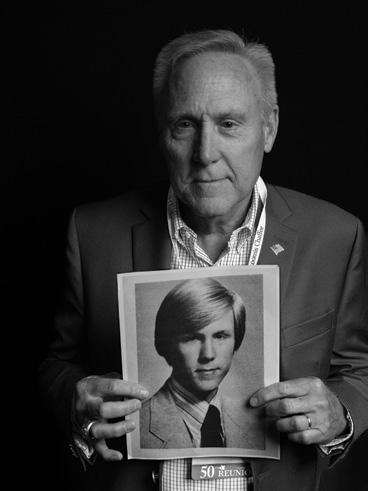




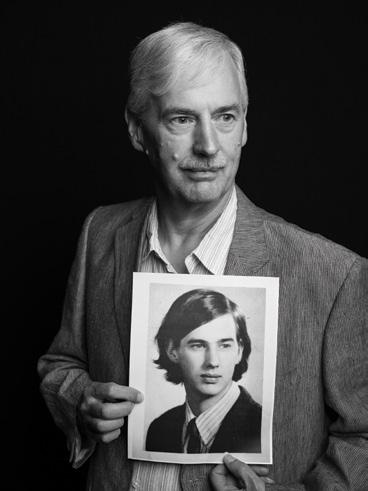









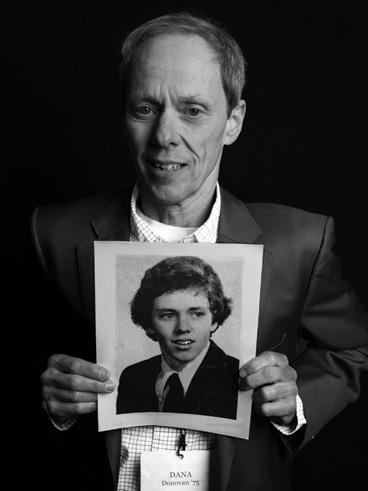


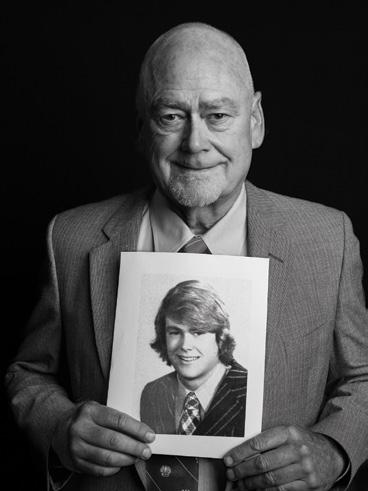

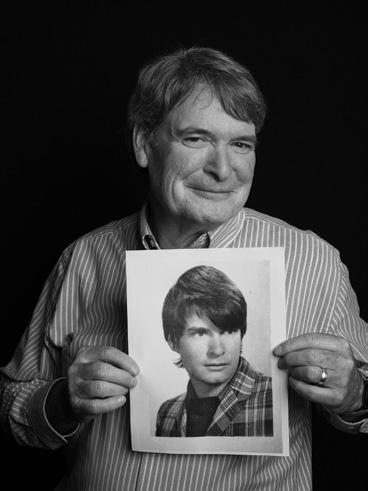

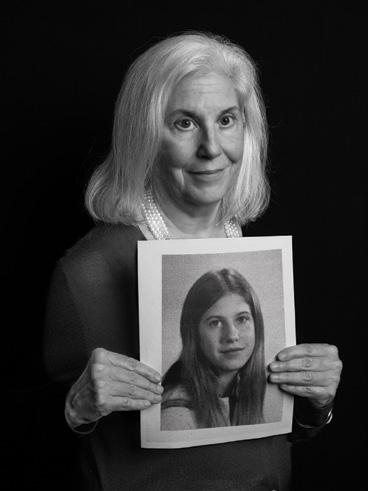
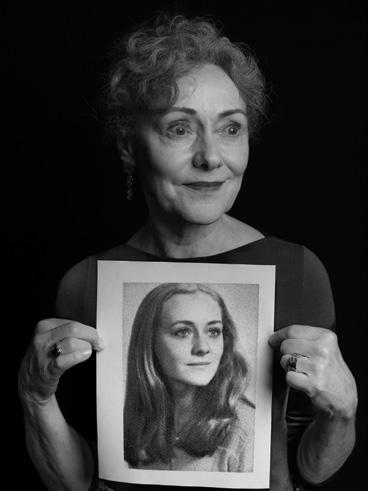

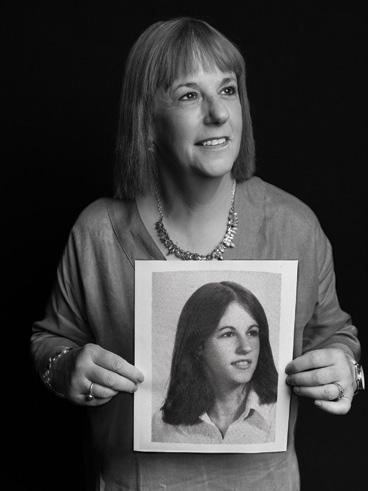

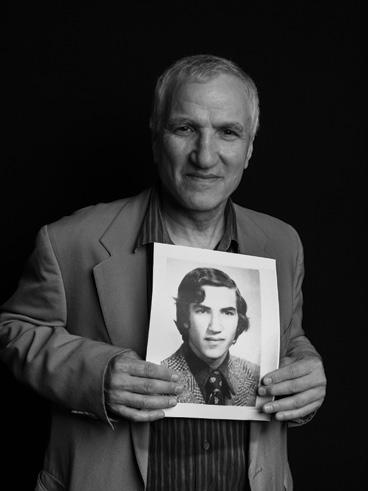





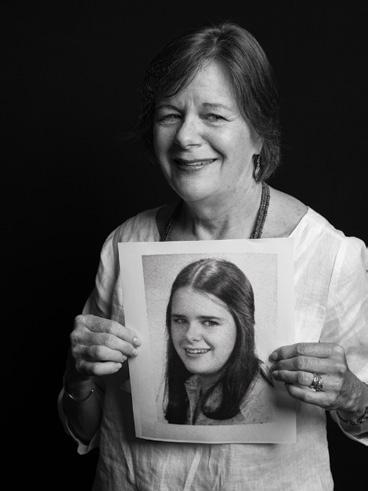
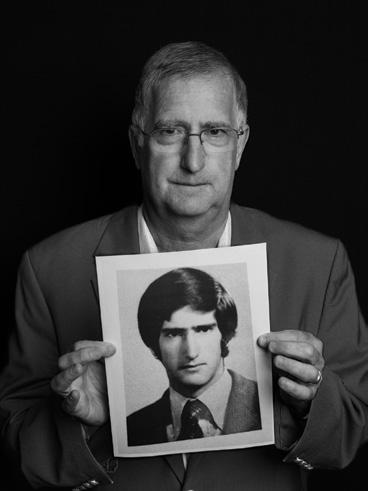


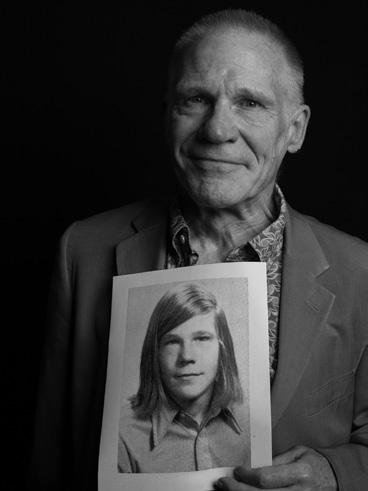


Peter Kagan ’75 gave the name to his series of portraits created during his 50th Reunion at Loomis Chaffee in June. Each classmate, he says, “was photographed holding their original 1975 yearbook portrait, echoing the pose and presence of their younger self. This project is both an act of remembrance and of re-seeing — a meditation on time, identity, and connection. Fifty years later, I found myself not only reunited with old friends, but in some cases, engaging with people for the first time. Photography, which I first discovered at Loomis under the guidance of my teacher Walter Rabetz, became the bridge across these decades. This work is dedicated to him.”
The Loomis Chaffee School
4 Batchelder Road
Windsor, Connecticut 06095
CHANGE SERVICE REQUESTED
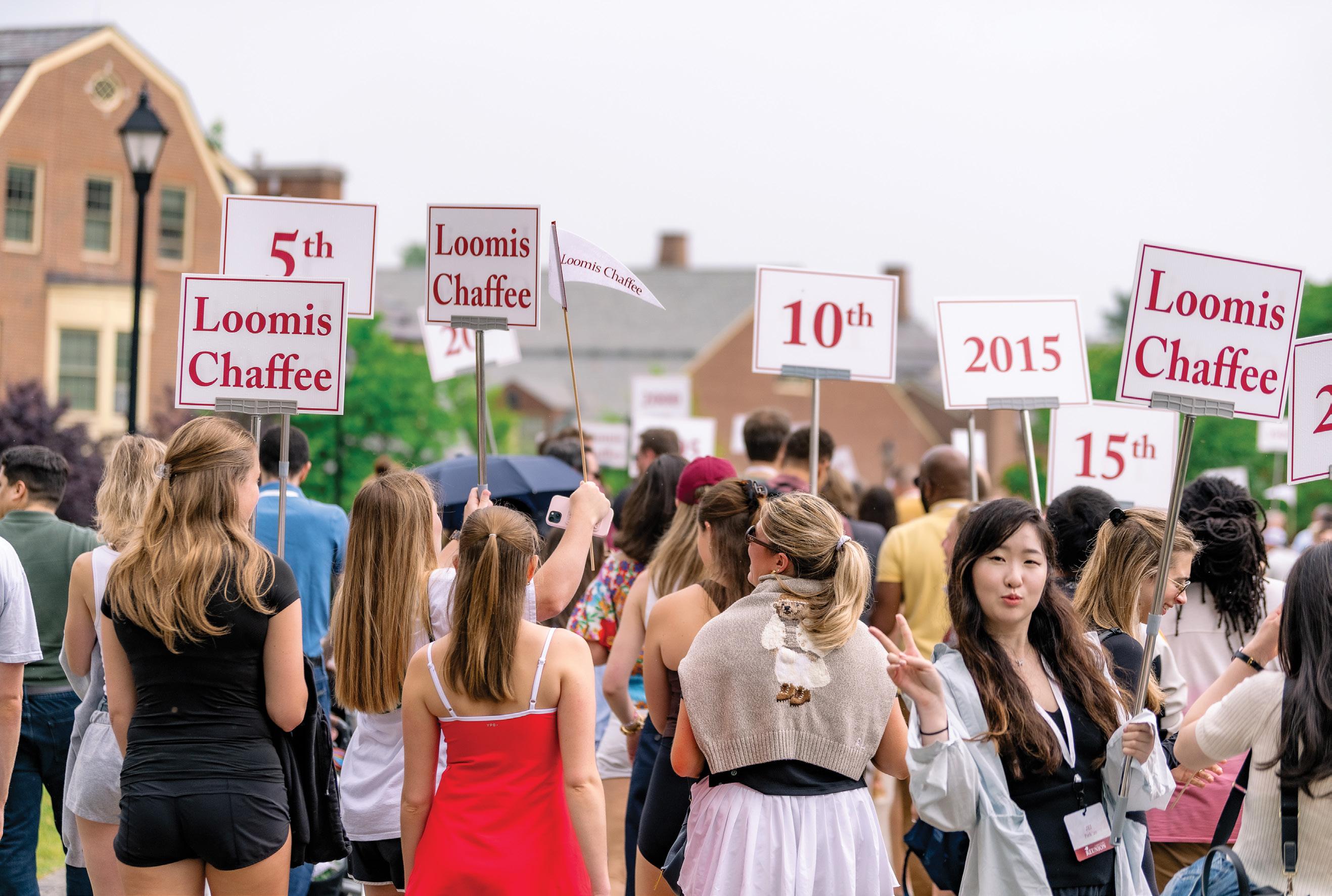
Alumni in classes ending in 5s and 0s follow the parade route through campus during Reunion Weekend in June, and Jei Park ’20 gives us a wave.